Huawei Technologies RTN360 Radio Transmission System User Manual Product Description
Huawei Technologies Co.,Ltd Radio Transmission System Product Description
Contents
- 1. Users Manual
- 2. Compliance and Safety Manual
- 3. Quick Installation Guide
Users Manual

OptiX RTN 360 Radio Transmission
V100R001C00
Product Description
Issue
02
Date
2014-08-30
HUAWEI TECHNOLOGIES CO., LTD.

Issue 02 (2014-08-30)
Huawei Proprietary and Confidential
Copyright © Huawei Technologies Co., Ltd.
i
Copyright © Huawei Technologies Co., Ltd. 2014. All rights reserved.
No part of this document may be reproduced or transmitted in any form or by any means without prior
written consent of Huawei Technologies Co., Ltd.
Trademarks and Permissions
and other Huawei trademarks are trademarks of Huawei Technologies Co., Ltd.
All other trademarks and trade names mentioned in this document are the property of their respective
holders.
Notice
The purchased products, services and features are stipulated by the contract made between Huawei and
the customer. All or part of the products, services and features described in this document may not be
within the purchase scope or the usage scope. Unless otherwise specified in the contract, all statements,
information, and recommendations in this document are provided "AS IS" without warranties, guarantees or
representations of any kind, either express or implied.
The information in this document is subject to change without notice. Every effort has been made in the
preparation of this document to ensure accuracy of the contents, but all statements, information, and
recommendations in this document do not constitute a warranty of any kind, express or implied.
Huawei Technologies Co., Ltd.
Address:
Huawei Industrial Base
Bantian, Longgang
Shenzhen 518129
People's Republic of China
Website:
http://www.huawei.com
Email:
support@huawei.com

OptiX RTN 360 Radio Transmission
Product Description
About This Document
Issue 02 (2014-08-30)
Huawei Proprietary and Confidential
Copyright © Huawei Technologies Co., Ltd.
ii
About This Document
Related Versions
The following table lists the product versions related to this document.
Product Name
Version
OptiX RTN 360
V100R001C00
iManager U2000–T
V200R014C50
iManager U2000–M
V200R014C00
Intended Audience
This document is intended for:
Network planning engineer
Hardware installation engineer
Installation and commissioning engineer
Field maintenance engineer
Data configuration engineer
System maintenance engineer
Familiarity with the basic knowledge related to digital microwave communication technology
will help you apply the information in this document.
Symbol Conventions
The symbols that may be found in this document are defined as follows.
Symbol
Description
Indicates an imminently hazardous situation
which, if not avoided, will result in death or
serious injury.

OptiX RTN 360 Radio Transmission
Product Description
About This Document
Issue 02 (2014-08-30)
Huawei Proprietary and Confidential
Copyright © Huawei Technologies Co., Ltd.
iii
Symbol
Description
Indicates a potentially hazardous situation
which, if not avoided, could result in death
or serious injury.
Indicates a potentially hazardous situation
which, if not avoided, may result in minor
or moderate injury.
Indicates a potentially hazardous situation
which, if not avoided, could result in
equipment damage, data loss, performance
deterioration, or unanticipated results.
NOTICE is used to address practices not
related to personal injury.
Calls attention to important information,
best practices and tips.
NOTE is used to address information not
related to personal injury, equipment
damage, and environment deterioration.
General Conventions
The general conventions that may be found in this document are defined as follows.
Convention
Description
Times New Roman
Normal paragraphs are in Times New Roman.
Boldface
Names of files, directories, folders, and users are in
boldface. For example, log in as user root.
Italic
Book titles are in italics.
Courier New
Examples of information displayed on the screen are in
Courier New.
Change History
Changes between document issues are cumulative. The latest document issue contains all the
changes made in earlier issues.
Updates in Issue 02 (2014-08-30) Based on Product Version V100R001C00
This issue is the second release for the product version V100R001C00.

OptiX RTN 360 Radio Transmission
Product Description
About This Document
Issue 02 (2014-08-30)
Huawei Proprietary and Confidential
Copyright © Huawei Technologies Co., Ltd.
iv
Updates are as follows.
Update
Description
1.2 Product Specifications
Optimized the table containing product
specifications.
3.4 Indicators
Added an explanation for the link status of
the STAT indicator.
5.1 Ethernet Service Specifications
Optimized the table containing Ethernet
service throughput specifications.
A.2 Component Photos
Added section "Component Photos."
A.3 Compliance Standards
Added section "Compliance Standards."
Entire document
Fixed known defects.
Issue 01 (2014-04-30)
This issue is the first release for the product version V100R001C00.

OptiX RTN 360 Radio Transmission
Product Description
Contents
Issue 02 (2014-08-30)
Huawei Proprietary and Confidential
Copyright © Huawei Technologies Co., Ltd.
v
Contents
About This Document .................................................................................................................... ii
1 Product Introduction .................................................................................................................... 1
1.1 Network Application ........................................................................................................................................ 1
1.2 Product Specifications ...................................................................................................................................... 2
1.3 Site Configurations ........................................................................................................................................... 3
1.3.1 Sites Providing One-Direction Microwave Links ................................................................................... 3
1.3.2 Sites Providing Two-Direction Microwave Links ................................................................................... 4
1.3.3 Sites Providing Multi-direction Microwave Links .................................................................................. 5
2 Functions and Features ................................................................................................................ 7
2.1 Integration ........................................................................................................................................................ 8
2.2 TDD ................................................................................................................................................................. 9
2.3 Automatic Frequency Selection...................................................................................................................... 10
2.4 Power over Ethernet ....................................................................................................................................... 10
2.5 Ethernet Service Processing Capability.......................................................................................................... 11
2.6 QoS................................................................................................................................................................. 12
2.7 Clock Features ................................................................................................................................................ 14
2.8 Network Management .................................................................................................................................... 14
2.9 Rapid Deployment ......................................................................................................................................... 15
2.10 Easy Maintenance ........................................................................................................................................ 16
2.10.1 Contact-Free Maintenance .................................................................................................................. 17
2.10.2 Equipment-Level OAM ...................................................................................................................... 18
2.10.3 Packet OAM (TP-Assist) .................................................................................................................... 20
2.11 Security Management ................................................................................................................................... 22
2.12 Energy Saving .............................................................................................................................................. 24
2.13 Environmental Protection ............................................................................................................................. 24
3 Product Structure......................................................................................................................... 26
3.1 System Architecture ....................................................................................................................................... 26
3.2 Service Signal Processing Flow ..................................................................................................................... 29
3.3 Ports ............................................................................................................................................................... 30
3.4 Indicators ........................................................................................................................................................ 35
3.5 Labels ............................................................................................................................................................. 37

OptiX RTN 360 Radio Transmission
Product Description
Contents
Issue 02 (2014-08-30)
Huawei Proprietary and Confidential
Copyright © Huawei Technologies Co., Ltd.
vi
4 Network Management System ................................................................................................. 40
4.1 Network Management Solutions .................................................................................................................... 40
4.2 Web LCT ........................................................................................................................................................ 41
4.3 Mobile LCT .................................................................................................................................................... 42
4.4 U2000-T ......................................................................................................................................................... 44
4.5 U2000-M ........................................................................................................................................................ 46
5 Technical Specifications ............................................................................................................ 47
5.1 Ethernet Service Specifications ...................................................................................................................... 47
5.2 RF Performance ............................................................................................................................................. 48
5.3 Antenna Performance ..................................................................................................................................... 48
5.4 Predicted Reliability ....................................................................................................................................... 49
5.5 Integrated System Performance...................................................................................................................... 50
6 Accessories.................................................................................................................................... 52
6.1 Power Injector ................................................................................................................................................ 52
6.1.1 Appearance, Functions, and Features .................................................................................................... 53
6.1.2 Ports and Indicators ............................................................................................................................... 54
6.1.3 PI Labels ............................................................................................................................................... 59
6.1.4 Technical Specifications ........................................................................................................................ 60
6.2 Dock ............................................................................................................................................................... 61
6.2.1 Appearance, Functions, and Features .................................................................................................... 61
6.2.2 Ports and Indicators ............................................................................................................................... 63
6.2.3 Technical Specifications ........................................................................................................................ 66
6.3 USB Flash Drives ........................................................................................................................................... 67
6.4 Wi-Fi Module ................................................................................................................................................. 69
7 Cables ............................................................................................................................................ 71
7.1 Outdoor Network Cables ................................................................................................................................ 71
7.2 RSSI Cables ................................................................................................................................................... 73
7.3 Power Cables .................................................................................................................................................. 74
7.4 RTN 360 PGND Cables ................................................................................................................................. 74
7.5 PI PGND Cables ............................................................................................................................................ 75
A Appendix ..................................................................................................................................... 76
A.1 Port Loopbacks .............................................................................................................................................. 76
A.2 Component Photos ........................................................................................................................................ 76
A.3 Compliance Standards ................................................................................................................................... 81
A.3.1 ITU-R Standards .................................................................................................................................. 81
A.3.2 ITU-T Standards ................................................................................................................................... 82
A.3.3 ETSI Standards..................................................................................................................................... 83
A.3.4 CEPT Standards ................................................................................................................................... 85
A.3.5 IEC Standards....................................................................................................................................... 86
A.3.6 IETF Standards..................................................................................................................................... 87

OptiX RTN 360 Radio Transmission
Product Description
Contents
Issue 02 (2014-08-30)
Huawei Proprietary and Confidential
Copyright © Huawei Technologies Co., Ltd.
vii
A.3.7 IEEE Standards .................................................................................................................................... 88
A.3.8 Other Standards .................................................................................................................................... 89

OptiX RTN 360 Radio Transmission
Product Description
1 Product Introduction
Issue 02 (2014-08-30)
Huawei Proprietary and Confidential
Copyright © Huawei Technologies Co., Ltd.
1
1 Product Introduction
About This Chapter
The OptiX RTN 360 radio transmission system (RTN 360 for short) is a full-outdoor radio
transmission product that operates at the V-band (a frequency band ranging from 59 GHz to
64 GHz).
1.1 Network Application
RTN 360 is tailored for service backhaul for small cell base stations that are deployed on
buildings or at the street level. RTN 360 plays an important role in the Huawei radio backhaul
solution for small cell base stations.
1.2 Product Specifications
RTN 360's specifications meet the requirements of service backhaul for small cell base
stations. In addition, RTN 360 features excellent immunity to interference, and is easy to
install and maintain.
1.3 Site Configurations
RTN 360s are usually powered by Docks or other standard power sourcing equipment (PSE).
RTN 360s can form sites providing one-direction, two-direction, or multi-direction
microwave links.
1.1 Network Application
RTN 360 is tailored for service backhaul for small cell base stations that are deployed on
buildings or at the street level. RTN 360 plays an important role in the Huawei radio backhaul
solution for small cell base stations.
As V-band full-outdoor radio equipment, RTN 360 has the following characteristics:
RTN 360 operates at the frequency band ranging from 59 GH to 64 GHz. It requires
unobstructed line of sight (LOS) and features low inter-site interference and rich idle
frequency spectrum resources. A V-band link can span a maximum distance of 300 m,
meeting the requirements of service backhaul for small cell base stations. RTN 360 can
provide large-capacity microwave links for small cell base stations densely deployed in
downtown areas.
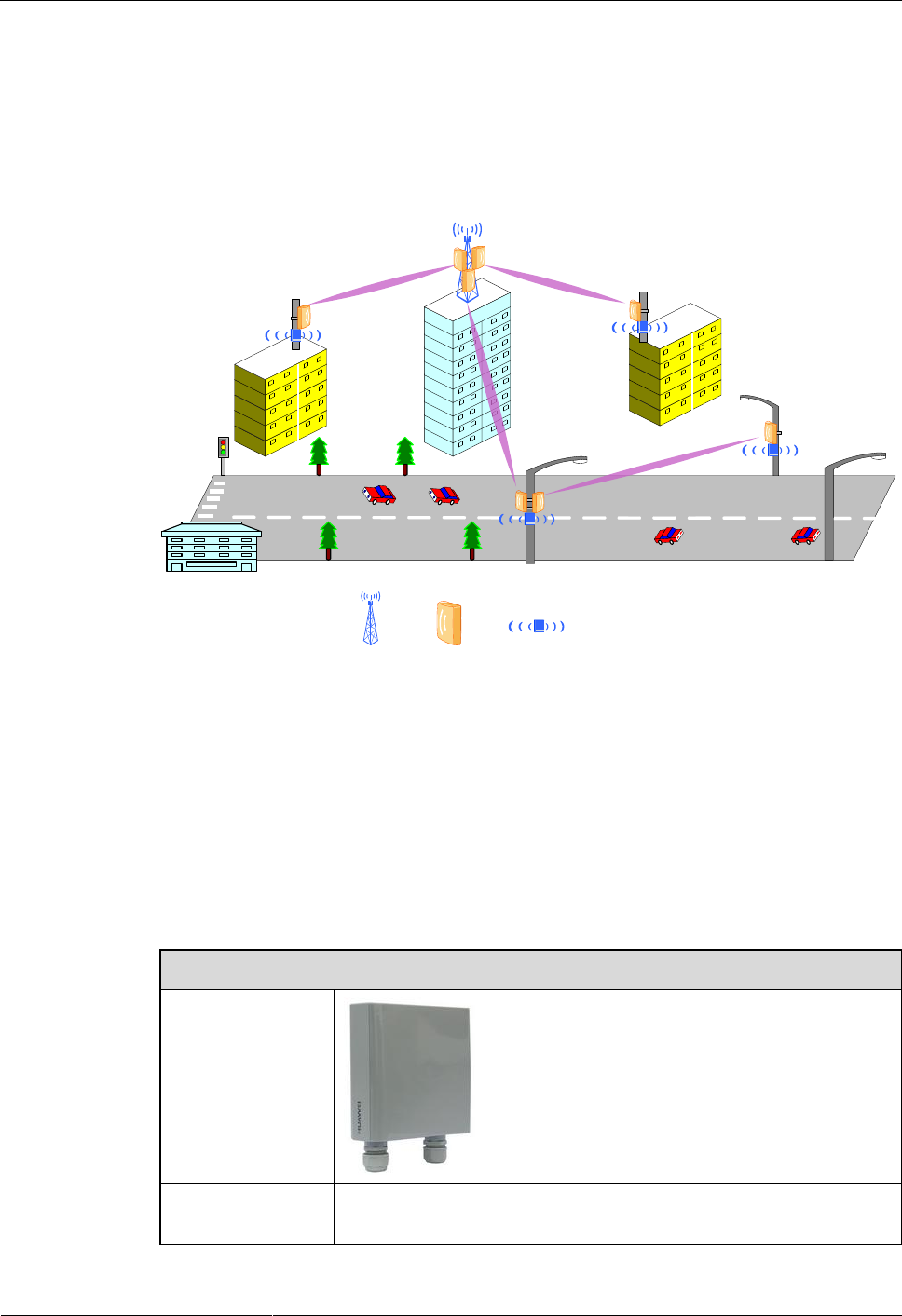
OptiX RTN 360 Radio Transmission
Product Description
1 Product Introduction
Issue 02 (2014-08-30)
Huawei Proprietary and Confidential
Copyright © Huawei Technologies Co., Ltd.
2
RTN 360 is a highly integrated full-outdoor radio transmission product. Its antenna, RF
unit, and baseband unit are integrated into an outdoor unit that supports zero-footprint
installation, providing carriers with cost-effective full-outdoor radio solutions.
RTN 360 provides backhaul links for small cell base stations on buildings or at the street level
in downtown areas. See Figure 1-1.
Figure 1-1 RTN 360 backhaul link solution for small cell base stations
V-Band
V-Band
V-Band
V-Band
V-Band
V-Band
Macro cell RTN 360 Small cell
V-Band
V-Band
V-Band
1.2 Product Specifications
RTN 360's specifications meet the requirements of service backhaul for small cell base
stations. In addition, RTN 360 features excellent immunity to interference, and is easy to
install and maintain.
Table 1-1 Product Specifications
Product Specifications
Appearance
Dimensions (H x
W x D)/Weight
192.5 mm x 192.5 mm x 70 mm/2.5 kg

OptiX RTN 360 Radio Transmission
Product Description
1 Product Introduction
Issue 02 (2014-08-30)
Huawei Proprietary and Confidential
Copyright © Huawei Technologies Co., Ltd.
3
Product Specifications
Antenna
Built-in panel antenna
Operating
frequency band
59 GHz to 64 GHz
Duplex mode
TDD
Radio working
mode (modulation
scheme/channel
spacing)
16QAM/200 MHz
Air-interface
throughput
≥ 480 Mbit/s
Maximum
transmission
distance
300 m
Service port
Two GE electrical service ports
RF configuration
mode
1+0 configuration
Power supply
mode
Power over Ethernet (PoE), supplied by the DC power injector (PI),
Dock, and other standard power sourcing equipment (PSE)
Basic Ethernet
features
E-Line/E-LAN
QinQ
QoS
Synchronous Ethernet
1.3 Site Configurations
RTN 360s are usually powered by Docks or other standard power sourcing equipment (PSE).
RTN 360s can form sites providing one-direction, two-direction, or multi-direction
microwave links.
1.3.1 Sites Providing One-Direction Microwave Links
If a small cell base station is located at the end of a transmission link, an RTN 360 is required
to provide a 1+0 unprotected microwave link. The RTN 360 receives power signals and
service signals from the Dock of the small cell base station.
Figure 1-2 illustrates configurations of a site providing a one-direction microwave link.
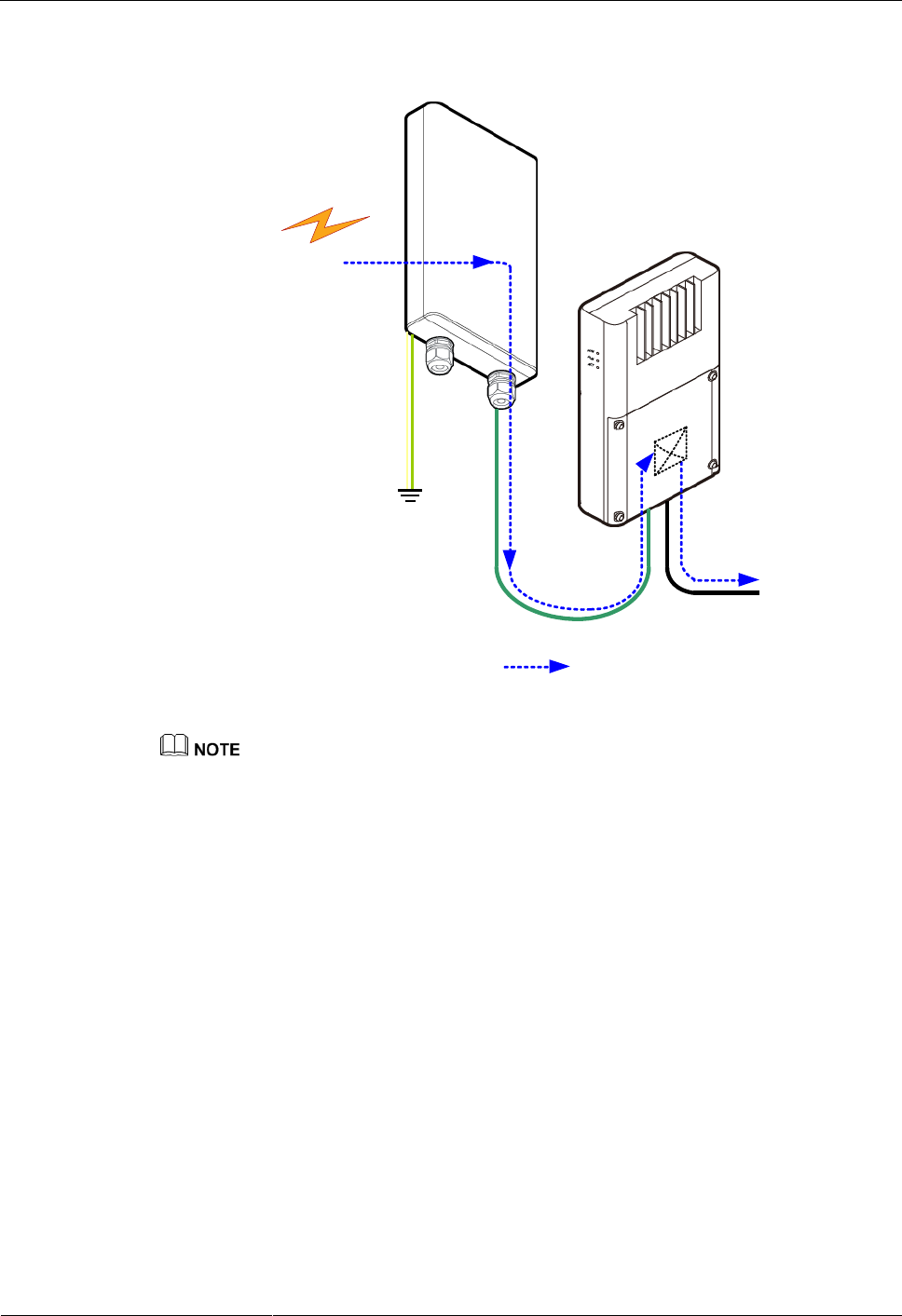
OptiX RTN 360 Radio Transmission
Product Description
1 Product Introduction
Issue 02 (2014-08-30)
Huawei Proprietary and Confidential
Copyright © Huawei Technologies Co., Ltd.
4
Figure 1-2 Site providing a one-direction microwave link
WAN LAN0
To a small cell
base station
P&E
RTN 360
Dock
Downlink service
From a remote
RTN 360
LAN Switch
If a small cell base station can serve as standard PSE, RTN 360s can directly receive power signals and
service signals from the small cell base station.
1.3.2 Sites Providing Two-Direction Microwave Links
If a small cell base station is an intermediate node on a transmission link, two RTN 360s are
required to provide two 1+0 unprotected microwave links in different directions. RTN 360s
receive power signals and service signals from the Dock of the small cell base station.
Figure 1-3 illustrates configurations of a site providing two microwave links in different
directions.

OptiX RTN 360 Radio Transmission
Product Description
1 Product Introduction
Issue 02 (2014-08-30)
Huawei Proprietary and Confidential
Copyright © Huawei Technologies Co., Ltd.
5
Figure 1-3 Site providing two microwave links in different directions
WAN
LAN0
To a small cell
base station
P&E
RTN 360
Dock
Downlink service
LAN1
RTN 360
From a remote
RTN 360 To a remote
RTN 360
LAN Switch
1.3.3 Sites Providing Multi-direction Microwave Links
If a macro base station connects to multiple small cell base stations in a star topology, in
addition to multiple RTN 360s, an OptiX RTN 900 (IDU) (for example, an IDU 950A) or
other power sourcing equipment (PSE) is required. The IDU supplies power to the RTN 360s
through a PoE board (for example, an EG4P board) and aggregates services.
Figure 1-4 illustrates configurations of a site providing multi-direction microwave links.
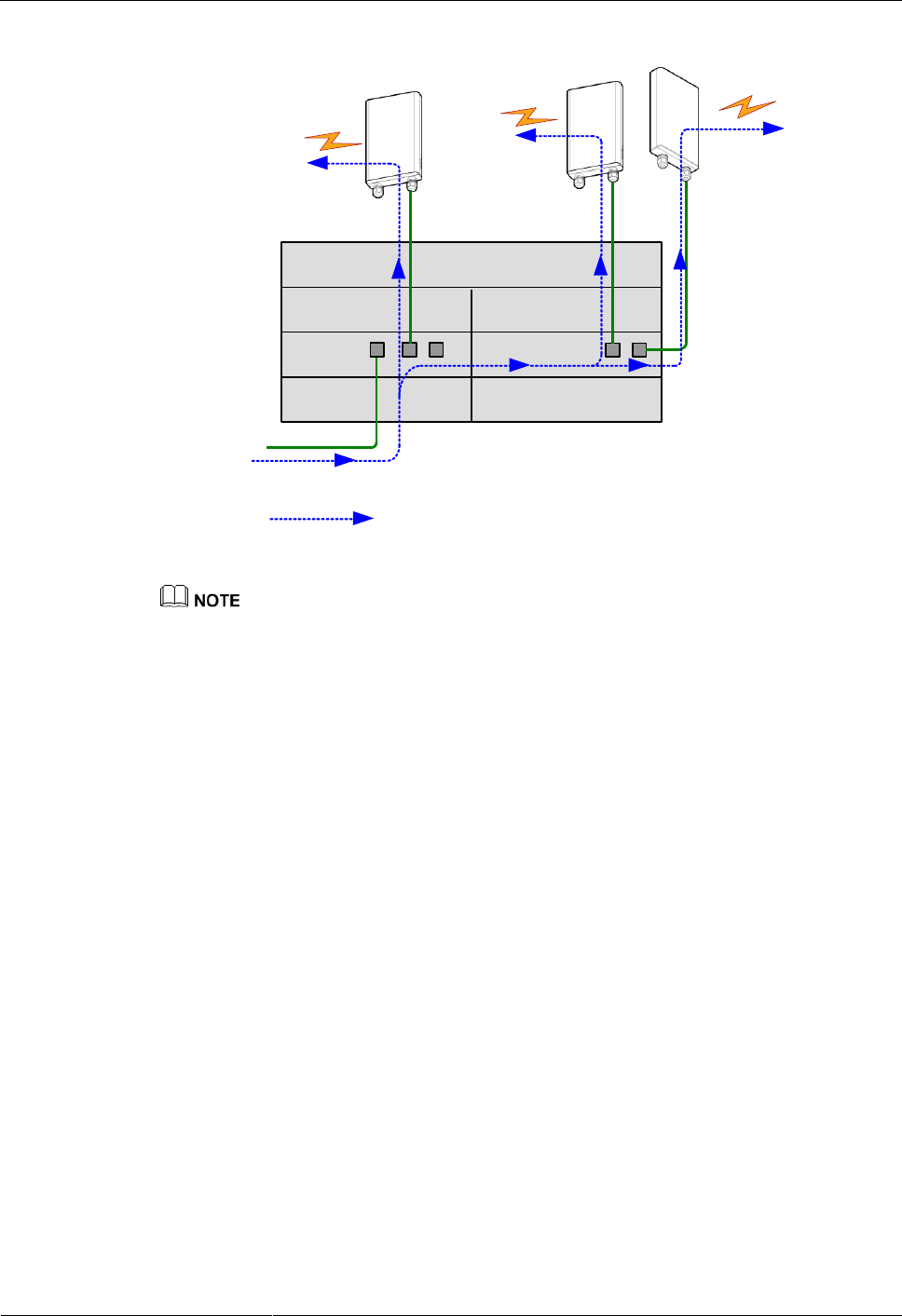
OptiX RTN 360 Radio Transmission
Product Description
1 Product Introduction
Issue 02 (2014-08-30)
Huawei Proprietary and Confidential
Copyright © Huawei Technologies Co., Ltd.
6
Figure 1-4 Site providing multi-direction microwave links
EG4P
ISV3
ISV3
EG4P
P&E P&E
IDU 950A
To a remote
RTN 360 To a remote
RTN 360
To a remote
RTN 360
From EPC
P&E
CSHO
Downlink service
In addition to RTN 360s, the OptiX RTN 900 IDU may connect to FOs or ODUs operating at other
frequency bands to implement backhaul.

OptiX RTN 360 Radio Transmission
Product Description
2 Functions and Features
Issue 02 (2014-08-30)
Huawei Proprietary and Confidential
Copyright © Huawei Technologies Co., Ltd.
7
2 Functions and Features
About This Chapter
RTN 360 provides a variety of functions and features.
2.1 Integration
RTN 360 integrates a built-in antenna and uses a wide frequency band design, which allows a
single chassis to cover the entire V-band.
2.2 TDD
Time division duplex (TDD) has unique advantages over frequency division duplex (FDD) in
asymmetric transmission and high frequency spectrum resource utilization.
2.3 Automatic Frequency Selection
RTN 360 supports automatic frequency selection, which enables it to automatically select an
interference-free channel as the working channel.
2.4 Power over Ethernet
RTN 360 provides a P&E port through which it supports power over Ethernet (PoE) as a
powered device (PD).
2.5 Ethernet Service Processing Capability
RTN 360 can process native Ethernet services.
2.6 QoS
RTN 360 supports quality of service (QoS) functions, including traffic classification, traffic
policing, congestion avoidance, queue scheduling, and traffic shaping.
2.7 Clock Features
RTN 360's clock features meet clock transmission requirements of mobile communications
networks and offer a wide selection of clock protection mechanisms.
2.8 Network Management
RTN 360 supports multiple network management modes and provides comprehensive
management information exchange solutions.
2.9 Rapid Deployment
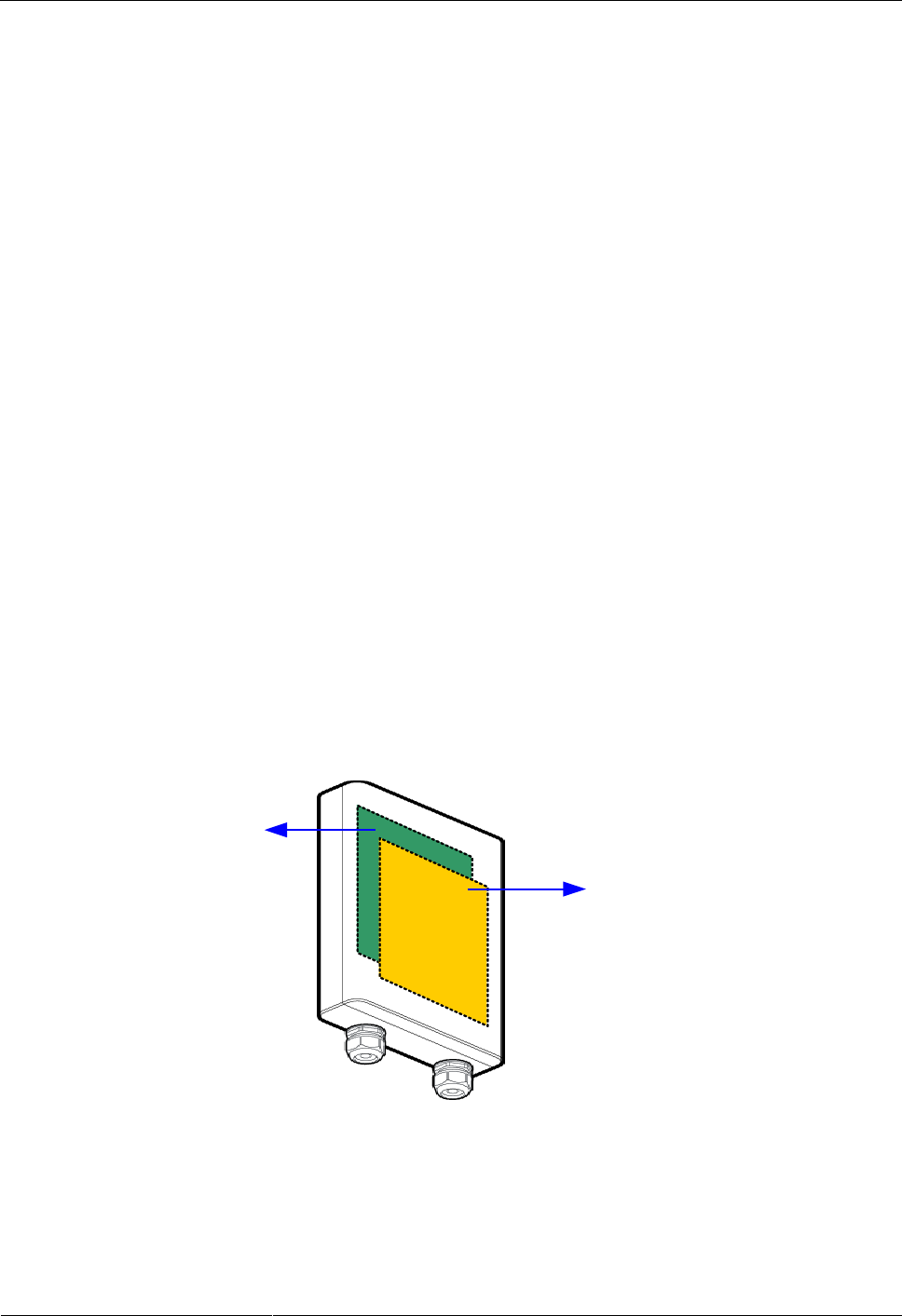
OptiX RTN 360 Radio Transmission
Product Description
2 Functions and Features
Issue 02 (2014-08-30)
Huawei Proprietary and Confidential
Copyright © Huawei Technologies Co., Ltd.
8
A variety of technologies are used to simplify RTN 360 installation so that wireless
installation personnel can deploy an RTN 360 within 30 minutes.
2.10 Easy Maintenance
RTN 360 supports contact-free maintenance, powerful equipment-level OAM functions, and
end-to-end TP-Assist.
2.11 Security Management
RTN 360 works with its network management system (NMS) to prevent unauthorized logins
and operations, ensuring equipment management security.
2.12 Energy Saving
RTN 360 consumes less energy by using:
2.13 Environmental Protection
RTN 360 is designed to meet environmental protection requirements. The product complies
with restriction of hazardous substances (RoHS) directives.
2.1 Integration
RTN 360 integrates a built-in antenna and uses a wide frequency band design, which allows a
single chassis to cover the entire V-band.
Built-in Antenna
RTN 360 integrates its system control unit, clock unit, power unit, baseband unit, RF unit, and
antenna into a single chassis. See Figure 2-1.
Figure 2-1 Integrated chassis with a built-in antenna
Panel
antenna
Baseband
board
Such a highly integrated design facilitates quick and flexible installation of RTN 360s in
full-outdoor scenarios.
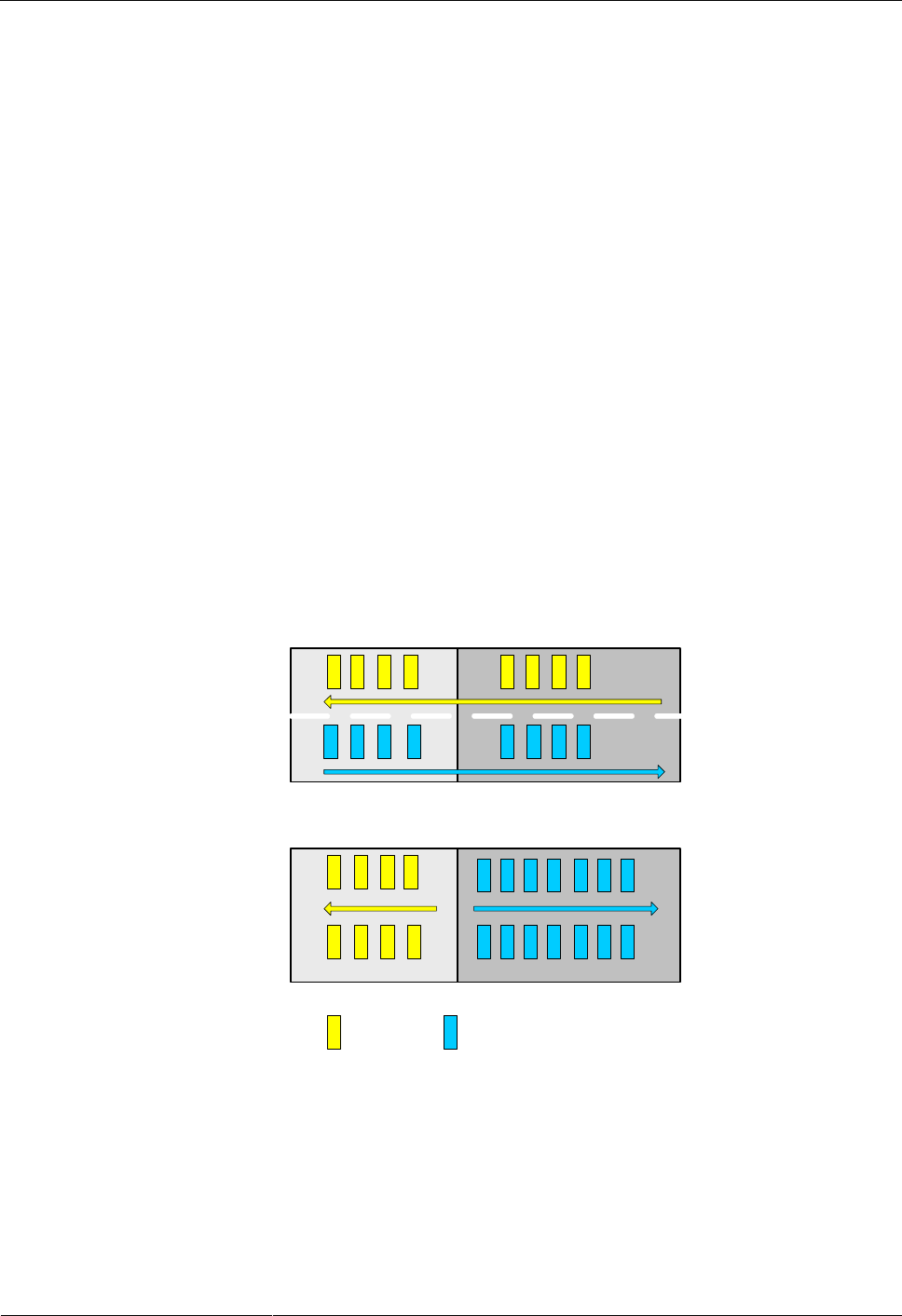
OptiX RTN 360 Radio Transmission
Product Description
2 Functions and Features
Issue 02 (2014-08-30)
Huawei Proprietary and Confidential
Copyright © Huawei Technologies Co., Ltd.
9
Wide Frequency Band
RTN 360 uses a wide frequency band design, which enables a single chassis to cover the
entire V-band from 59 GHz to 64 GHz. This eliminates the need to distinguish TX high and
low sites, which means that spare parts need to be prepared for only one equipment model.
Both RTN 360 and Huawei small cell base stations can be installed on walls and poles. They
are similar in appearance and look harmonious when installed together.
2.2 TDD
Time division duplex (TDD) has unique advantages over frequency division duplex (FDD) in
asymmetric transmission and high frequency spectrum resource utilization.
In FDD mode, symmetric frequencies are required to function as the uplink and downlink
channels. The V-band is license-free in most areas and may be used by multiple users, and it is
difficult to obtain interference-free symmetric frequencies. Therefore, RTN 360 uses TDD
mode.
In TDD mode, asymmetric frequencies are used. Uplink and downlink data is transmitted in
different time periods. The ratio of timeslots for uplink data to those for downlink data can be
configured based on service requirements, flexibly using frequency resources.
Figure 2-2 Comparison between FDD and TDD modes
t0 t1
FDD
f1
f2
t0 t1
TDD f1 or f2
Downlink
data Uplink
data
Using TDD mode, RTN 360 has the following advantages:
One RTN 360 can cover the operating frequency band (59 GHz to 64 GHz), eliminating
the need to distinguish TX high and low sites.
Timeslots for uplink and downlink data can be flexibly adjusted based on actual traffic.
The ratio of timeslots for uplink data to those for downlink data can be configured to 3:1,
2:1, 1:1, 1:2, or 1:3.
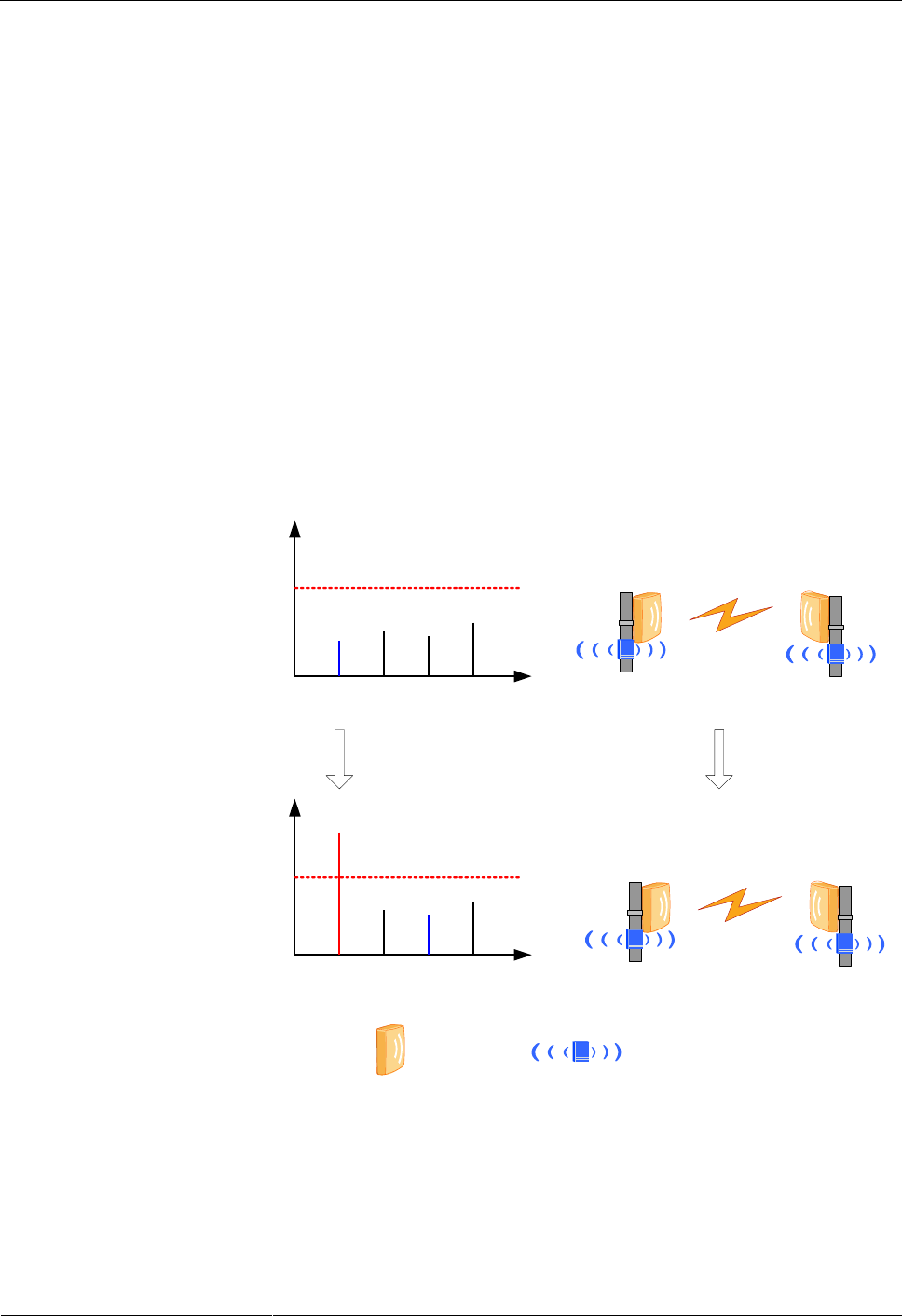
OptiX RTN 360 Radio Transmission
Product Description
2 Functions and Features
Issue 02 (2014-08-30)
Huawei Proprietary and Confidential
Copyright © Huawei Technologies Co., Ltd.
10
2.3 Automatic Frequency Selection
RTN 360 supports automatic frequency selection, which enables it to automatically select an
interference-free channel as the working channel.
RTN 360 scans frequencies within a specified range to select interference-free channels. See
Figure 2-3.
Automatic frequency selection applies to the following two scenarios:
During commissioning in site deployment, this function is used to obtain
interference-free channels, releasing engineers from planning microwave link
frequencies.
For an in-service RTN 360, this function is used to reselect and switch to an
interference-free channel if the current microwave link is interrupted or fails due to
interference on the working channel, improving microwave links' immunity to
interference.
Figure 2-3 Automatic frequency selection diagram
f0 f1 f2 f3
V-Band
V-Band
f0
Interference
signal strength
f0 f1 f2 f3
V-Band
V-Band
f2
f0 interference signal
becoming stronger
Automatically
selecting f2
V-Band
RTN 360 Small cell
base station
Interference
signal threshold
Interference
signal threshold
2.4 Power over Ethernet
RTN 360 provides a P&E port through which it supports power over Ethernet (PoE) as a
powered device (PD).

OptiX RTN 360 Radio Transmission
Product Description
2 Functions and Features
Issue 02 (2014-08-30)
Huawei Proprietary and Confidential
Copyright © Huawei Technologies Co., Ltd.
11
In PoE mode, an outdoor network cable carries Ethernet service signals along with DC power
signals. PoE has the following advantages:
Reduces the number of power cables and simplifies installation.
Enables RTN 360 to share power supplies with small cell base stations.
Enables RTN 360 to work with the power injector (PI) or other power sourcing
equipment (PSE) such as an RTN 900 IDU or a Dock so that RTN 360 is connected to
the network while being supplied with power.
2.5 Ethernet Service Processing Capability
RTN 360 can process native Ethernet services.
Table 2-1 Ethernet service processing capability
Item
Description
Service ports
Two GE service ports
The first GE port is a P&E port.
The second GE port is a fixed electrical port.
Port attributes
The GE electrical port supports 10M
full-duplex, 100M full-duplex, 1000M
full-duplex, and auto-negotiation.
Ethernet service types
E-Line
E-LAN
Range of maximum frame length
1518 bytes to 9600 bytes
VLAN
Adds, deletes, and swaps VLAN tags that
comply with IEEE 802.1Q/P, and forwards
packets based on VLAN tags.
Processes packets based on the port tag
attribute (Tag/Hybrid/Access).
The VLAN ID ranges from 1 to 4094.
QinQ
Adds, deletes, and swaps S-TAG tags, and
forwards packets based on S-VLAN tags.
The S-VLAN ID ranges from 1 to 4094.
The QinQ type domain is configurable. The
default value is 88A8.
MAC address management
Supports MAC address self-learning for
E-LAN services in two learning modes: SVL
and IVL.
Filters blacklisted MAC addresses.
Sets static MAC address entries.
Supports a MAC address table with a
maximum of 16K capacity (including static
and blacklist entries).

OptiX RTN 360 Radio Transmission
Product Description
2 Functions and Features
Issue 02 (2014-08-30)
Huawei Proprietary and Confidential
Copyright © Huawei Technologies Co., Ltd.
12
Item
Description
Link-state pass through (LPT)
Supports simple LPT. When a microwave link is
faulty, the related RTN 360 automatically
disables the remote Ethernet port that is
connected to a user-to-network interface (UNI)
device.
Quality of service (QoS)
Supports QoS. For details, see 2.6 QoS.
Traffic control
Supports IEEE 802.3x-compliant traffic control.
ETH OAM
Supports IEEE 802.1ag- and IEEE
802.3ah-compliant ETH OAM.
Supports ITU-T Y.1731-compliant packet
loss measurement, delay measurement, and
delay variation measurement.
Ethernet performance monitoring
Supports IETF RFC 2819-compliant remote
network monitoring (RMON).
Supports measurement of real-time and
historical traffic, bandwidth utilization, and
packet loss for ports.
Synchronous Ethernet
Supported
Link Layer Discovery Protocol (LLDP)
Supported
RTN 360 supports a maximum of 64 E-Line services. The supported E-Line services fall into the
following types:
Port-based E-Line services
Port+VLAN-based E-Line services
Port+QinQ-based E-Line services
RTN 360 supports only one E-LAN service. The supported E-LAN services fall into the following
types:
IEEE 802.1d bridge-based E-LAN services
IEEE 802.1Q bridge-based E-LAN services
IEEE 802.1ad bridge-based E-LAN services
2.6 QoS
RTN 360 supports quality of service (QoS) functions, including traffic classification, traffic
policing, congestion avoidance, queue scheduling, and traffic shaping.
QoS Processing Flow
QoS provides different levels of service quality in certain aspects of services as required, such
as bandwidth, delay, jitter, and packet loss ratio. This ensures that the request and response of
a user or application reaches an expected quality level.

OptiX RTN 360 Radio Transmission
Product Description
2 Functions and Features
Issue 02 (2014-08-30)
Huawei Proprietary and Confidential
Copyright © Huawei Technologies Co., Ltd.
13
Figure 2-4 shows how RTN 360 performs QoS processing for Ethernet services.
Figure 2-4 QoS processing
Forwarding
Queue scheduling
Ingress Egress
Packet switching
Congestion
avoidance
Buffer queue
Threshold
Queue traffic
shaping
Scheduling
Drop
...
......
Port shaping
Token
bucket
... ... ... .........
... ...
... .........
......
...
Simple traffic
classification
Mapping
DiffServ
CoS x
...
CoS z
Traffic
monitoring
CAR
Token
bucket
Flow
Complex traffic
classification
QoS Functions
Table 2-2 QoS functions
Function
Description
Simple traffic classification (DiffServ)
Supports one DiffServ (DS) domain.
Maps Ethernet services into different per-hop
behaviors (PHBs) based on C-VLAN
priorities, S-VLAN priorities, IP
differentiated services code point (DSCP)
values, or MPLS experimental bits (EXP)
values.
Supports enabling/disabling of DSCP
demapping at egress ports.
Complex traffic classification
Supports traffic classification by MAC address,
VLAN ID, VLAN priority, IP address, DSCP
value, protocol type, port ID, or Internet Control
Message Protocol (ICMP) type at ports.
ACL
Supports ACL based on complex traffic
classification.
Traffic policing
Supports committed access rate (CAR) based on
complex traffic classification at ports and
supports the setting of the committed
information rate (CIR), peak information rate
(PIR), committed burst size (CBS), and peak
burst size (PBS).
Congestion avoidance
Supports tail drop at both microwave ports
and Ethernet ports.
Supports weighted random early detection
(WRED) at both microwave ports and

OptiX RTN 360 Radio Transmission
Product Description
2 Functions and Features
Issue 02 (2014-08-30)
Huawei Proprietary and Confidential
Copyright © Huawei Technologies Co., Ltd.
14
Function
Description
Ethernet ports.
Queue scheduling
Supports eight levels of priority scheduling
at both Ethernet ports and microwave ports.
Flexibly sets the queue scheduling scheme
for each Ethernet port and microwave port.
The queue scheduling schemes include strict
priority (SP), weighted round robin (WRR),
and SP+WRR.
Traffic shaping
Supports traffic shaping for egress queues
and egress ports.
Supports the setting of PIR in increments of
64 kbit/s and the setting of PBS.
2.7 Clock Features
RTN 360's clock features meet clock transmission requirements of mobile communications
networks and offer a wide selection of clock protection mechanisms.
Item
Description
Clock working mode
Tracing
Holdover
Free-run
Clock source
Microwave link clock
Synchronous Ethernet clock
NOTE
When two RTN 360s form a hop of microwave
link, one is the master NE tracing the Synchronous
Ethernet clock, and the other is the slave NE tracing
the microwave link clock.
Synchronization Status Message (SSM)
protocol or extended SSM protocol
Supported. SSM information can be
transmitted in the following modes:
Microwave link
Synchronous Ethernet
2.8 Network Management
RTN 360 supports multiple network management modes and provides comprehensive
management information exchange solutions.

OptiX RTN 360 Radio Transmission
Product Description
2 Functions and Features
Issue 02 (2014-08-30)
Huawei Proprietary and Confidential
Copyright © Huawei Technologies Co., Ltd.
15
Network Management Modes
RTN 360 supports the following network management modes:
Uses the iManager U2000 Web LCT to manage local and remote NEs on a per-NE basis.
Uses the Mobile LCT to manage local NEs on a per-NE basis through Wi-Fi.
Uses the iManager U2000-T to manage Huawei OptiX RTN NEs and Huawei optical
transmission products in a unified manner. The iManager U2000-T is also able to
manage transport networks in a unified manner.
Uses the iManager U2000-M, which manages Huawei mobile communications network
products in a unified manner, to manage RTN 360 using its NE Explore.
Uses SNMP Get to query alarms, performance events, and RMON performance.
Network Management Information Exchange Solutions
Table 2-3 DCN information exchange solutions
Item
Specifications
DCN channel
Data
communicatio
ns channel
(DCC) bytes
Three Huawei-defined DCC bytes in a microwave
frame
Network
management
system (NMS)
port
One NMS port
In-ba
nd
DCN
Micr
owav
e link
All in-band DCN channels are marked by one
VLAN ID. The bandwidth of an in-band DCN
channel is configurable.
GE
port
All in-band DCN channels are marked by one
VLAN ID. The bandwidth of an in-band DCN
channel is configurable.
Network
management
protocol
HWECC
protocol
Supported
IP protocol
Supported
L2DCN
Supported
2.9 Rapid Deployment
A variety of technologies are used to simplify RTN 360 installation so that wireless
installation personnel can deploy an RTN 360 within 30 minutes.
So that it can be deployed rapidly, RTN 360:
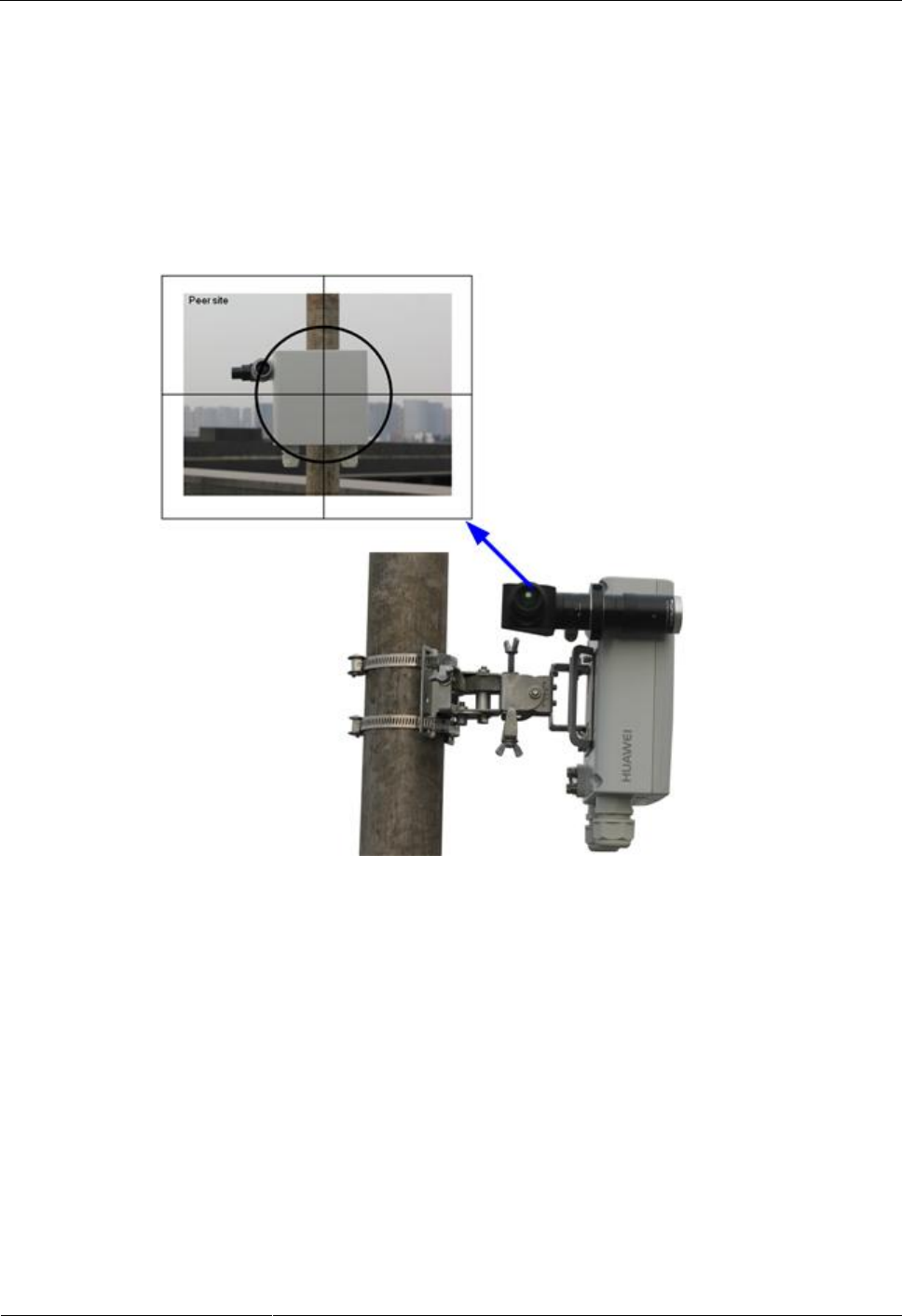
OptiX RTN 360 Radio Transmission
Product Description
2 Functions and Features
Issue 02 (2014-08-30)
Huawei Proprietary and Confidential
Copyright © Huawei Technologies Co., Ltd.
16
Uses TDD mode, in which signals are transmitted and received over the same frequency,
eliminating the need to distinguish TX high and low sites and requiring spare parts for
only one equipment model.
Supports automatic frequency selection, simplifying microwave link frequency planning.
Integrates panel antennas, simplifying installation.
Uses an alignment scope to facilitate antenna alignment, improving installation
efficiency.
Figure 2-5 Aligning antennas using an alignment scope
Supports power over Ethernet. RTN 360 can work with a Dock, power injector (PI), or
other power sourcing equipment (PSE) to receive service signals and power signals,
facilitating deployment.
Supports configuration-free commissioning using a USB flash drive.
Manages NEs on a per-NE basis using a Wi-Fi module.
2.10 Easy Maintenance
RTN 360 supports contact-free maintenance, powerful equipment-level OAM functions, and
end-to-end TP-Assist.
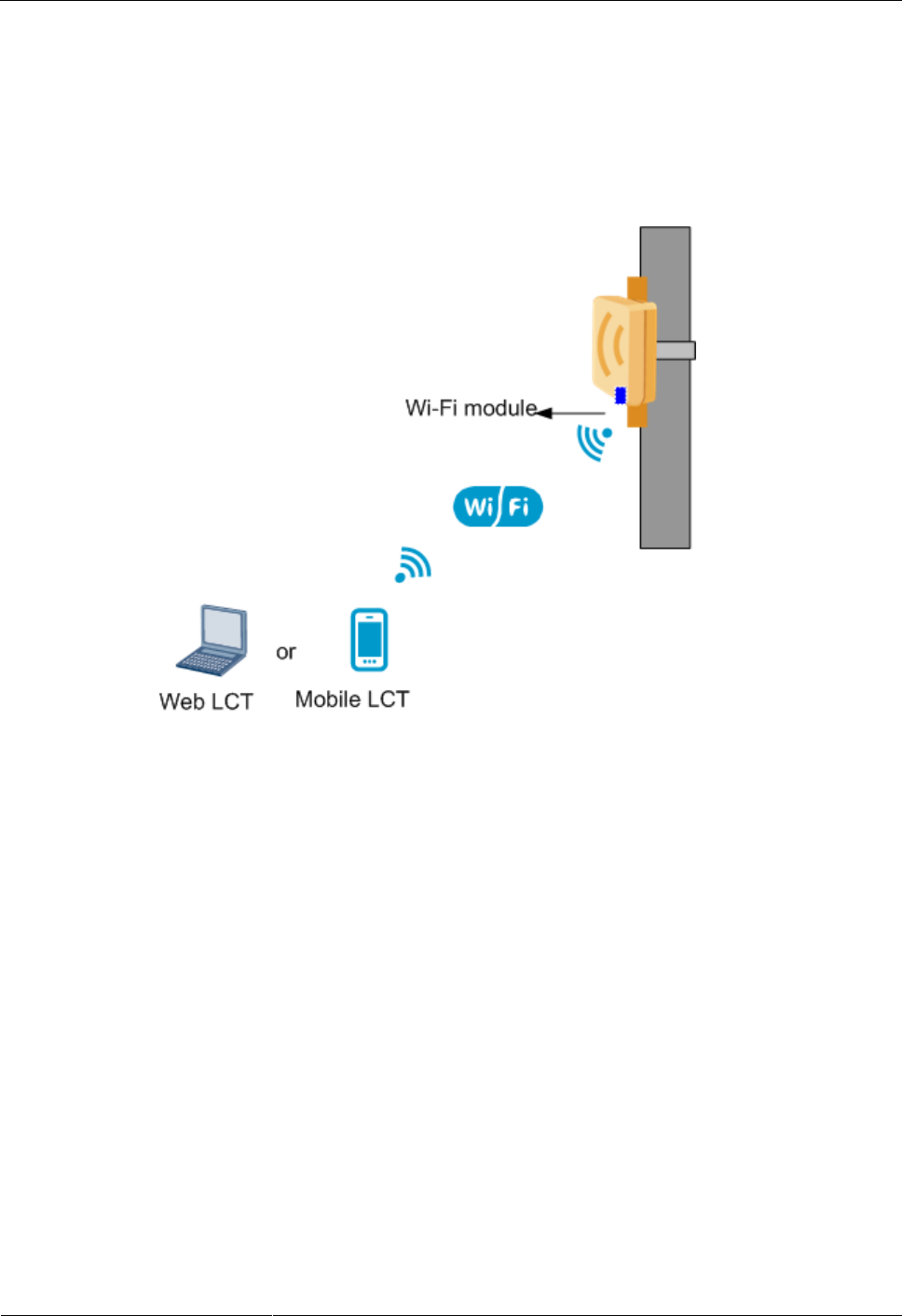
OptiX RTN 360 Radio Transmission
Product Description
2 Functions and Features
Issue 02 (2014-08-30)
Huawei Proprietary and Confidential
Copyright © Huawei Technologies Co., Ltd.
17
2.10.1 Contact-Free Maintenance
RTN 360 supports contact-free maintenance with its Wi-Fi module.
The Mobile LCT or Web LCT can use Wi-Fi to connect to a local RTN 360 with a Wi-Fi
module.
Figure 2-6 Contact-free maintenance
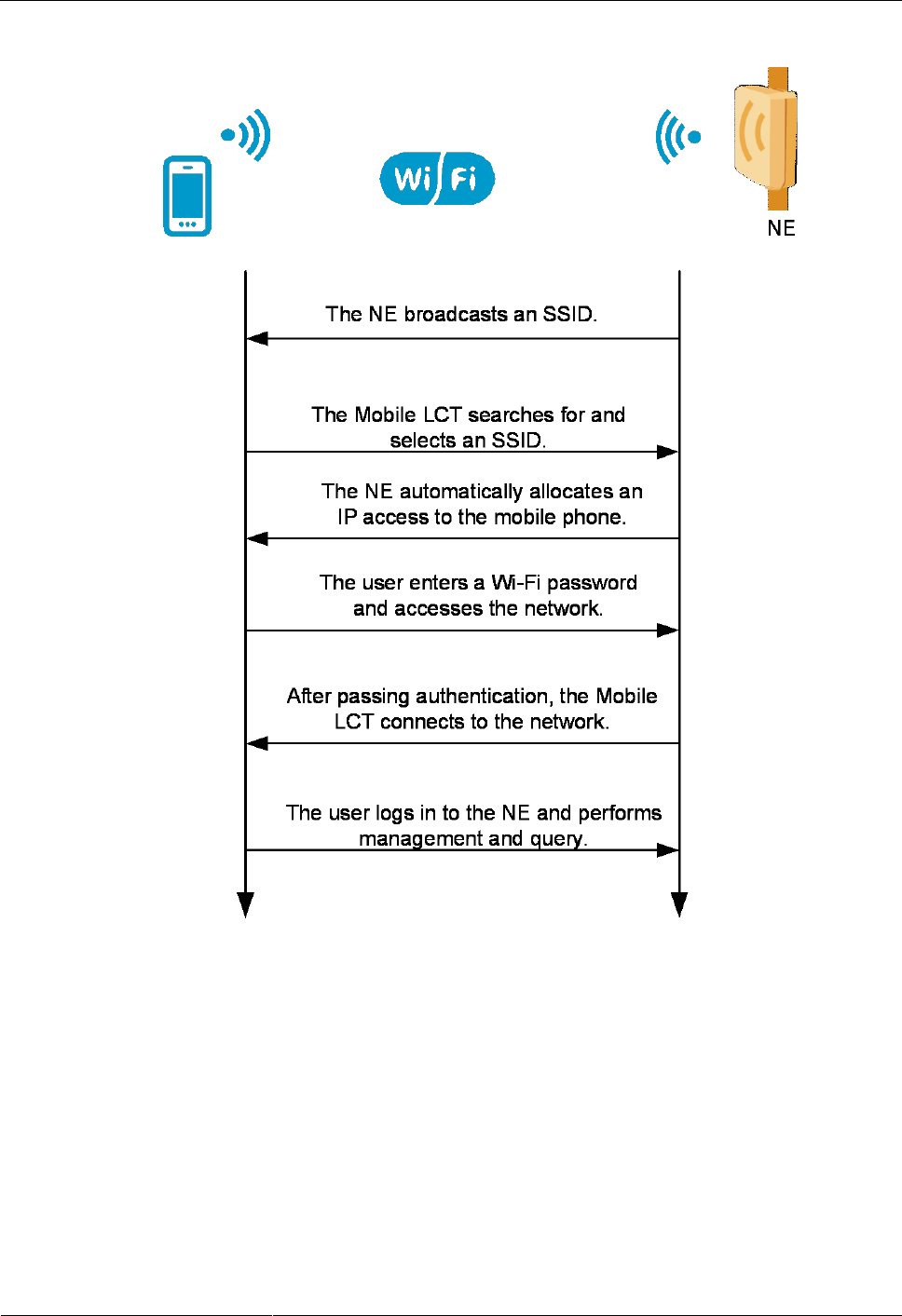
OptiX RTN 360 Radio Transmission
Product Description
2 Functions and Features
Issue 02 (2014-08-30)
Huawei Proprietary and Confidential
Copyright © Huawei Technologies Co., Ltd.
18
Figure 2-7 Access process through Wi-Fi
After connecting to a local NE through Wi-Fi, the Mobile LCT or Web LCT can be used to
configure the NE, and query NE alarms, and the Web LCT can also be used to query
performance and logs, facilitating commissioning and maintenance.
2.10.2 Equipment-Level OAM
RTN 360 provides a variety of operation, administration and maintenance (OAM) functions
that effectively reduce equipment maintenance costs.
Table 2-4 describes the OAM functions supported by RTN 360.

OptiX RTN 360 Radio Transmission
Product Description
2 Functions and Features
Issue 02 (2014-08-30)
Huawei Proprietary and Confidential
Copyright © Huawei Technologies Co., Ltd.
19
Table 2-4 Equipment-level OAM functions
Function
Description
Management and
monitoring
Supports unified management of microwave transmission networks and optical
transmission networks, and end-to-end service creation and management using
the iManager U2000-T.
Supports creation, configuration, and operation management of an RTN 360
using the iManager U2000-M.
Reports a variety of alarms and performance events.
Supports RMON performance events.
Measures real-time and historical traffic and bandwidth utilization for ports.
Measures congestion-caused packet loss information by traffic class and egress
queue for ports.
Queries equipment temperatures.
Monitors key radio transmission performance indicators, such as the microwave
transmit power, receive power, signal-to-noise ratio (SNR), and air-interface bit
error rate (BER), and displays them graphically.
Supports frequency scanning to help identify co-channel interference and
adjacent-channel interference.
Collects one-click fault diagnosis information.
Supports the connection of the Mobile LCT or Web LCT to the equipment
using Wi-Fi during equipment commissioning or maintenance.
Diagnosis tests
Supports pseudo random binary sequence (PRBS) tests at microwave ports.
Simulates Ethernet meters to test the packet loss ratio, delay, and throughput.
Supports various loopback functions at service ports and microwave ports.
ETH OAM
Supports IEEE 802.1ag- and IEEE 802.3ah-compliant ETH OAM.
Supports ITU-T Y.1731-compliant packet loss measurement, delay
measurement, and delay variation measurement.
Supports loopback tests for Ethernet services.
Database management
Backs up and restores NE databases remotely using the iManager U2000-T.
Backs up and restores NE data using USB flash drives.
Backs up and restores databases of peer NEs on microwave links.
Software management
Supports remote loading of NE software and data using the iManager U2000-T
and provides a complete NE upgrade solution, allowing rapid upgrades of the
entire network.
Upgrades NE software using USB flash drives.
Supports the not-stop forwarding (NSF) function, which prevents Ethernet
services from being interrupted by warm NE software resets.
Supports hot patches so that you can upgrade software without interrupting
services.
Supports software version rollback so that original system services are restored
in case of software upgrade failures.

OptiX RTN 360 Radio Transmission
Product Description
2 Functions and Features
Issue 02 (2014-08-30)
Huawei Proprietary and Confidential
Copyright © Huawei Technologies Co., Ltd.
20
2.10.3 Packet OAM (TP-Assist)
In compliance with the network-centered, service-centered, and intelligent packet network
O&M trend, Huawei promotes a brand new O&M system based on the TP-Assist solution.
The O&M system covers the entire O&M process from network planning to fault diagnosis.
Table 2-5 describes the packet OAM functions supported by RTN 360.
Table 2-5 Functions of the TP-Assist O&M system
Function
Description
Purpose
Professional planning service and planning
tools
Experienced planning expert teams
provide professional planning service.
Planning tool UniSTAR Designer,
embedded with the common network
HLD/LLD design templates and
device/board/interface capacity parameter
templates, is used. This tool is applicable
to various network planning scenarios
including new network construction,
network expansion, network migration,
and service adjustment.
Improves planning
efficiency.
Improves planning
accuracy.
End-to-end service deployment
Deploys Native Ethernet (E-Line and
E-LAN) services and hybrid services in an
end-to-end manner.
Deploys services across microwave and
optical fibers in an end-to-end manner.
Quick service
configuration
Improves
configuration
accuracy.
Automatic deployment of alarm
management with service deployment
Deploying ETH-OAM or MPLS-TP OAM
when deploying Ethernet services and
MPLS tunnels in an end-to-end manner.
Avoids extra OAM
deployment
operations. Allows
the NE to
automatically report
alarms when a
service fault occurs.
One-click service connectivity test
Supports one-click service connectivity
test for Ethernet services and MPLS
tunnels that are deployed in an end-to-end
manner.
Quick
commissioning
Lowers project
acceptance costs.
One-click service performance test
Supports one-click packet loss, delay, and
delay jitter tests for Ethernet services and
MPLS tunnels that are deployed in an
end-to-end manner.
Automatic tests with no need for any
instrument
Simulating the Smartbits function,
supports delay, throughput, short-term
packet loss ratio, and long-term packet loss
ratio tests for VLAN-based E-Line
services.
Performance
monitoring and
Network-level
performance
The PMS embedded in the U2000 supports
unified monitoring and measurement of
Optimized
monitoring points,

OptiX RTN 360 Radio Transmission
Product Description
2 Functions and Features
Issue 02 (2014-08-30)
Huawei Proprietary and Confidential
Copyright © Huawei Technologies Co., Ltd.
21
Function
Description
Purpose
measurement
monitoring and
measurement
system
any measurement object and performance
indicator in the network.
It supports 24-hour service status
pre-warning and monitoring, and provides
equipment performance threshold-crossing
alarms and network performance
threshold-crossing alarms.
rich service
monitoring methods
Visualized
monitoring;
network-level and
service-centered
monitoring
360-degree traffic
statistics and
monitoring based
on service paths
Allows all-service-layer (port, MPLS
tunnel, PW, and VLAN) traffic statistics
and monitoring in a service view.
Supports QoS packet loss detection.
Visualized O&M
Queries and display
of service paths
based on VLANs
For E-Line services, allows users to find
the service working path and protection
path views based VLANs.
For E-LAN services, allows users to find
the VLAN domain views based on
VLANs.
Service
visualization
Queries and display
of service paths
based on MAC
addresses
For E-LAN services, allows users to find
the actual MAC address forwarding path
views based on MAC addresses.
Intelligent fault diagnosis
Performs automatic fault diagnosis for
Ethernet services by layer
(service/PW/tunnel/port) and by level
(connectivity/performance/configuration).
Quickly outputs fault diagnosis reports on
a one-click operation GUI.
Intelligent fault
diagnosis
Cross-product fault
diagnosis
IP ping
Responds to IP ping packets sent from
client equipment and then quickly narrows
down the fault location to the client
equipment or the transport network.
Support near-end or far-end IP ping
responding.
Supports initiating an IP ping test to the
near-end or far-end.
Network-level E-LAN service loop
detection
Quickly detects an E-LAN loop (if any) in
the service view.
Automatically shuts down a looped
service.
Displays the loopback path.

OptiX RTN 360 Radio Transmission
Product Description
2 Functions and Features
Issue 02 (2014-08-30)
Huawei Proprietary and Confidential
Copyright © Huawei Technologies Co., Ltd.
22
2.11 Security Management
RTN 360 works with its network management system (NMS) to prevent unauthorized logins
and operations, ensuring equipment management security.
Overview of Hardware Security
RTN 360 uses the following hardware security measures:
Microwave ports: The forward error correction (FEC) encoding mode is adopted and the
adaptive time-domain equalizer for baseband signals is used. This enables the microwave
ports to withstand strong interference. An interceptor cannot restore the content in a data
frame if coding details and service configurations are not obtained.
Modular design: Control units are separated from service units, and service units are
separated from each other. In this manner, a fault on any unit can be isolated, minimizing
the impact of the fault on other units in the system.
CPU flow control: The data flow sent to the CPU for processing is classified and
controlled to prevent CPU resources from being exhausted by a large number of packets.
This ensures that the CPU operates properly under attacks.
Management port control: The protective cover for the maintenance compartment is kept
closed when the management port is not being used, preventing unauthorized access.
Overview of Software Security
RTN 360 processes two types of data: O&M data and service data. The two types of data are
transmitted over independent paths and do not affect each other. This enables services running
on an RTN 360 to be processed on two planes:
Management plane
The management plane provides access to the required equipment and management
functions, such as managing accounts and passwords, communication protocols, and
alarm reporting. Security features on the management plane implement secure access,
integrated security management, and all-round security audits.
Data plane
The data plane processes the service data flow entering the equipment and forwards
service packets according to the forwarding table. Security features on the data plane
ensure confidentiality and integration of user data by preventing malicious theft,
modification, and removal of user service packets. These features ensure reliable data
forwarding by protecting forwarding entries against malicious attacks and falsification.
Table 2-6 describes security functions provided by RTN 360.
Table 2-6 Security functions
Plane
Function
Description
Management plane
Account and password
management
Manages and stores
maintenance accounts and
passwords.
Local authentication and
authorization
Authenticates and authorizes
accounts.
RADIUS authentication and
Authenticates and authorizes

OptiX RTN 360 Radio Transmission
Product Description
2 Functions and Features
Issue 02 (2014-08-30)
Huawei Proprietary and Confidential
Copyright © Huawei Technologies Co., Ltd.
23
Plane
Function
Description
authorization
remote accounts in a
centralized manner to reduce
maintenance costs.
Security log
Records events related to
account management.
Operation log
Records non-query
operations.
Syslog management
Provides a standard solution
to offline storage of logs,
addressing insufficient
storage space.
TCP/IP attack defense
Provides defense against
TCP/IP attacks, such as
error IP packet attacks,
Internet Control Message
Protocol (ICMP) ping and
Jolt attacks, and DoS
attacks.
Access control list
Provides access control lists
based on IP addresses and
port IDs.
SSL/TLS encryption
communication (SSL is the
abbreviated form of Secure
Sockets Layer, and TLS is
the abbreviated form of
Transport Layer Security.)
Uses the SSL3.0 and
TLS1.0 protocols to
establish an encryption
channel based on a security
certificate.
Secure File Transfer
Protocol (SFTP)
Provides SFTP services.
Open Shortest Path First
(OSPF)
Uses the OSPFv2 protocol
for standard MD5
authentication.
Network Time Protocol
(NTP)
Uses the NTPv3 protocol for
MD5 authentication and
permission control.
Simple Network
Management Protocol
(SNMP)
Uses the SNMPv3 protocol
for authentication and data
encryption.
USB flash drive connection
control
Supports connection of only
authorized USB flash drives
based on a certificate file.
Wi-Fi connection control
Supports Wi-Fi connection
with correct passwords.

OptiX RTN 360 Radio Transmission
Product Description
2 Functions and Features
Issue 02 (2014-08-30)
Huawei Proprietary and Confidential
Copyright © Huawei Technologies Co., Ltd.
24
Plane
Function
Description
Data plane
Flow control
Controls traffic at ports.
Broadcast packets are
suppressed. Unknown
unicast packets and
multicast packets are
discarded. QoS is used to
control service traffic.
Discarding of incorrect
packets
Discards incorrect packets,
such as an Ethernet packet
shorter than 64 bytes.
Loop prevention
Detects self-loops at service
ports and blocks self-looped
ports.
Access control of Layer 2
services
Filters static MAC addresses
in the static MAC address
table, provides a blacklist,
enables and disables the
MAC address learning
function, and filters packets
based on traffic
classification.
Service separation
Includes Layer 2 logical
separation, split horizon, and
physical path separation.
2.12 Energy Saving
RTN 360 consumes less energy by using:
Streamlined design with minimum components
High-efficient power modules
Low-power components
2.13 Environmental Protection
RTN 360 is designed to meet environmental protection requirements. The product complies
with restriction of hazardous substances (RoHS) directives.
The product complies with RoHS, waste from electrical and electronic equipment
(WEEE), and Registration, Evaluation, Authorization and Restriction of Chemicals
(REACH) directives.
The product complies with compulsory packing restrictions that limit the size of the
package containing the equipment and accessories to three times that of the equipment
dimensions.

OptiX RTN 360 Radio Transmission
Product Description
2 Functions and Features
Issue 02 (2014-08-30)
Huawei Proprietary and Confidential
Copyright © Huawei Technologies Co., Ltd.
25
All hazardous substances contained in the package can degrade quickly.
Every plastic component that weighs over 25 g is labeled according to the ISO 11469
and ISO 1043-1 to ISO 1043-4 standards. All components and packaging come with
standard recycling labels.
Plugs and connectors are easy to find and are compatible with standard tools.
All the attached materials, such as labels, are easy to remove. Certain types of
identifying information, such as silkscreens, are printed on the chassis.

OptiX RTN 360 Radio Transmission
Product Description
3 Product Structure
Issue 02 (2014-08-30)
Huawei Proprietary and Confidential
Copyright © Huawei Technologies Co., Ltd.
26
3 Product Structure
About This Chapter
This chapter describes RTN 360's system architecture, service signal processing flow, external
ports, indicators, and labels.
3.1 System Architecture
RTN 360 integrates its functional units into a single chassis.
3.2 Service Signal Processing Flow
This section describes how the functional units of RTN 360 process power over Ethernet (PoE)
signals.
3.3 Ports
An RTN 360 has one GE port, one P&E port, and one maintenance compartment.
3.4 Indicators
RTN 360 has an STAT indicator and a USB port indicator.
3.5 Labels
A product nameplate label, electrostatic discharge (ESD) warning label, radiation warning
label, grounding label, and high temperature warning label are affixed on a chassis. Adhere to
any warnings on the labels when performing tasks to avoid personal injury and damage to
equipment.
3.1 System Architecture
RTN 360 integrates its functional units into a single chassis.
An RTN 360 has a panel antenna and one physical board, the SLV1SHUA2 board. The
SLV1SHUA2 board is displayed as SHUA2 on the network management system (NMS) and
occupies logical slot 1.
The SHUA2 board is physically divided into multiple functional units based on logical
functions.
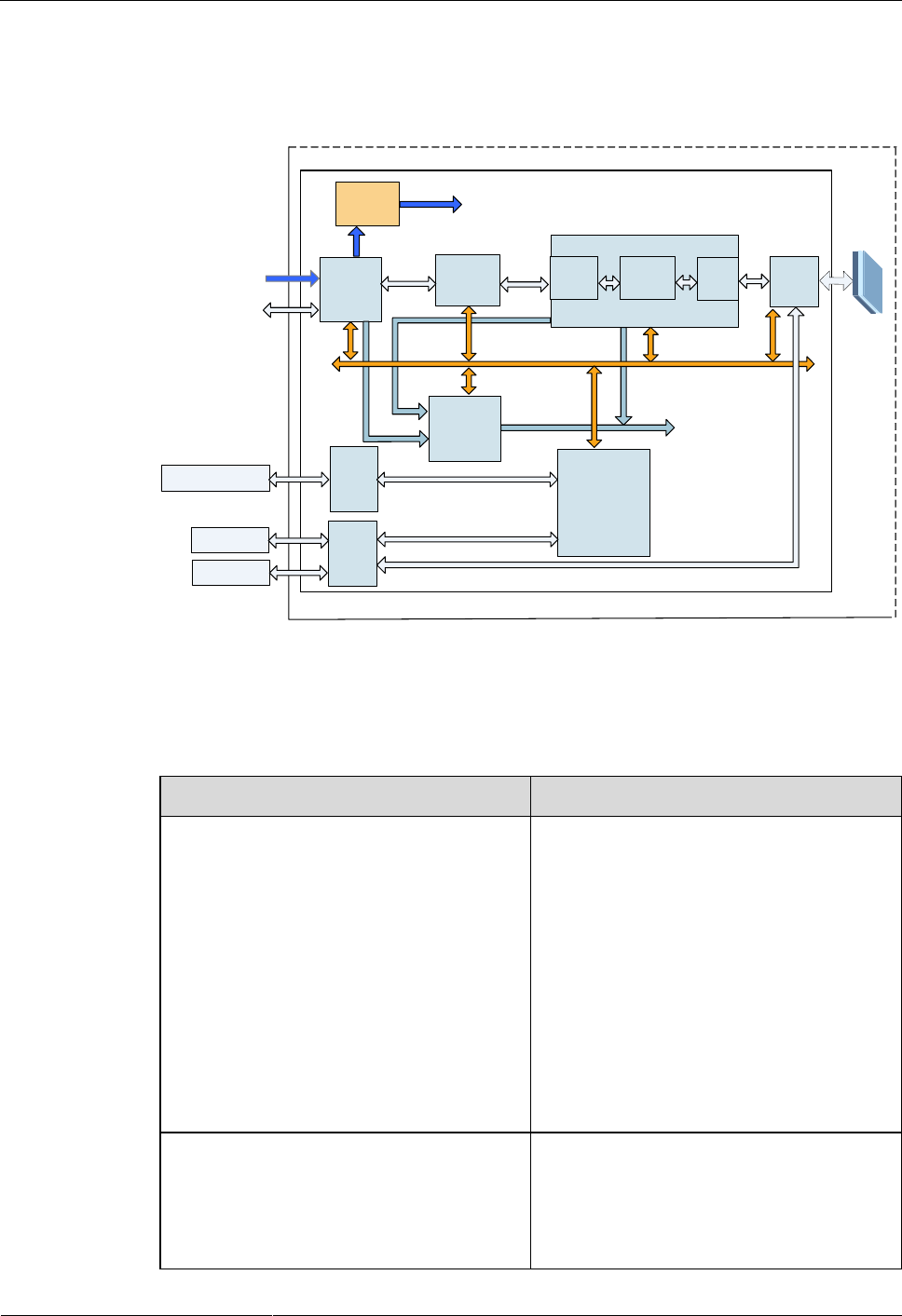
OptiX RTN 360 Radio Transmission
Product Description
3 Product Structure
Issue 02 (2014-08-30)
Huawei Proprietary and Confidential
Copyright © Huawei Technologies Co., Ltd.
27
Block Diagram
Figure 3-1 Block diagram of RTN 360
USB flash drive or
Wi-Fi module System
control unit
Power
unit
Clock unit Provides
clock signal
to other units.
Panel
antenna
Ethernet
switching
unit
Ethernet
access
unit
RF
proces
sing
unit
Clock
signal
PoE signal
Provides power to other
units.
SHUA2
MUX
unit Modem
unit
Baseband processing unit
Control
signal
RSSI port
RSSI test level
signal
OptiX RTN 360
NMS port
GE signal GE signal
USB
port
-48 V
RJ45
port
TDD
unit
FE/GE signal
Functional Units
Table 3-1 Functional units
Functional Unit
Description
Ethernet access unit
Receives/Transmits one channel of
Ethernet service signals and one channel
of PoE signals.
Splits PoE signals into -48 V power
signals and FE/GE signals.
Transmits the power signals to the power
unit.
Converts serial Ethernet signals into
parallel Ethernet signals.
Performs frame delimitation, preamble
stripping, and cyclic redundancy checks
(CRCs).
Ethernet switching unit
Processes VLAN tags in Ethernet service
signals.
Performs quality of service (QoS)
processing for Ethernet frames.
Grooms services and processes

OptiX RTN 360 Radio Transmission
Product Description
3 Product Structure
Issue 02 (2014-08-30)
Huawei Proprietary and Confidential
Copyright © Huawei Technologies Co., Ltd.
28
Functional Unit
Description
protocols.
Baseband processing unit
Maps and demaps service signals
to/from microwave frame signals.
Processes overhead bytes in microwave
frames.
Performs forward error correction (FEC)
coding and decoding.
Modulates and demodulates digital
signals.
Converts between analog and digital
signals.
Uses the TDD unit to control signal
receiving/transmitting according to the
specified ratio of receive/transmit
timeslots.
RF processing unit
Performs frequency conversion and
power amplification, and sends RF
signals to antennas in the transmit
direction.
Performs isolation, filtering,
down-conversion, and power
amplification for RF signals, and
converts RF signals into low-frequency
analog signals in the receive direction.
Antenna
Performs conversion between RF signals
and electromagnetic waves.
System control unit
Configures and manages the system.
Collects alarms and monitors
performance.
Processes signals to and from the USB
port.
Processes Wi-Fi connection signals.
Clock unit
Traces the specified clock source signals.
Provides clock signals required by the
system.
Power unit
Processes power over Ethernet signals.
Performs DC/DC conversion and
provides power signals to other units.

OptiX RTN 360 Radio Transmission
Product Description
3 Product Structure
Issue 02 (2014-08-30)
Huawei Proprietary and Confidential
Copyright © Huawei Technologies Co., Ltd.
29
3.2 Service Signal Processing Flow
This section describes how the functional units of RTN 360 process power over Ethernet (PoE)
signals.
Figure 3-2 Signal processing flow
Ethernet
access unit
RF
processing
unit
Ethernet
switching unit
PoE signal
Service bus Service bus Modulated
signal RF signal
OptiX RTN 360
MUX
unit Modem
unit
Baseband processing unit
TDD
unit
–48 V
Power unit
Table 3-2 Signal processing in the transmit direction
St
ep
Functional Unit
Processing Flow
1
Ethernet access unit
Receives PoE signals.
Splits PoE signals into Ethernet service signals and -48 V
power signals.
Transmits the power signals to the power unit.
Extracts Ethernet frames from Ethernet service signals.
2
Ethernet switching
unit
Performs Layer 2 protocol processing and quality of
service (QoS) processing for the Ethernet frames.
Transmits processed Ethernet service signals to the
baseband processing unit.
3
Baseband processing
unit
Receives Ethernet service signals from the Ethernet
switching unit.
Combines Ethernet service signals and microwave frame
overheads into microwave frames.
Performs forward error correction (FEC) coding.
Selects a proper modulation scheme based on the current
channel quality.
Performs modulation and converts digital signals to
analog signals.
Transmits the modulated signals to the RF processing
unit using the transmit timeslot specified by the TDD
electronic switch.
4
RF processing unit
Performs up-conversion and power amplification to
convert the modulated signals into RF signals.
Transmits the RF signals to the antenna through a

OptiX RTN 360 Radio Transmission
Product Description
3 Product Structure
Issue 02 (2014-08-30)
Huawei Proprietary and Confidential
Copyright © Huawei Technologies Co., Ltd.
30
St
ep
Functional Unit
Processing Flow
flexible waveguide.
Table 3-3 Signal processing in the receive direction
St
ep
Functional Unit
Processing Flow
1
RF processing unit
Isolates and filters RF signals.
Performs down-conversion and power amplification.
Transmits the modulated signals to the baseband
processing unit.
2
Baseband processing
unit
Receives modulated signals from the RF processing unit
using the receive timeslot specified by the TDD
electronic switch.
Converts analog signals to digital signals.
Demodulates signals.
Performs FEC decoding.
Extracts overhead signals and Ethernet frames from
microwave frames.
Transmits the Ethernet frames to the Ethernet switching
unit.
3
Ethernet switching
unit
Receives Ethernet frames from the baseband processing
unit.
Processes the Ethernet frames based on service
configurations and Layer 2 protocols.
Transmits the Ethernet frames to the Ethernet access unit.
4
Ethernet access unit
Converts parallel Ethernet signals to serial Ethernet signals
and transmits them.
3.3 Ports
An RTN 360 has one GE port, one P&E port, and one maintenance compartment.
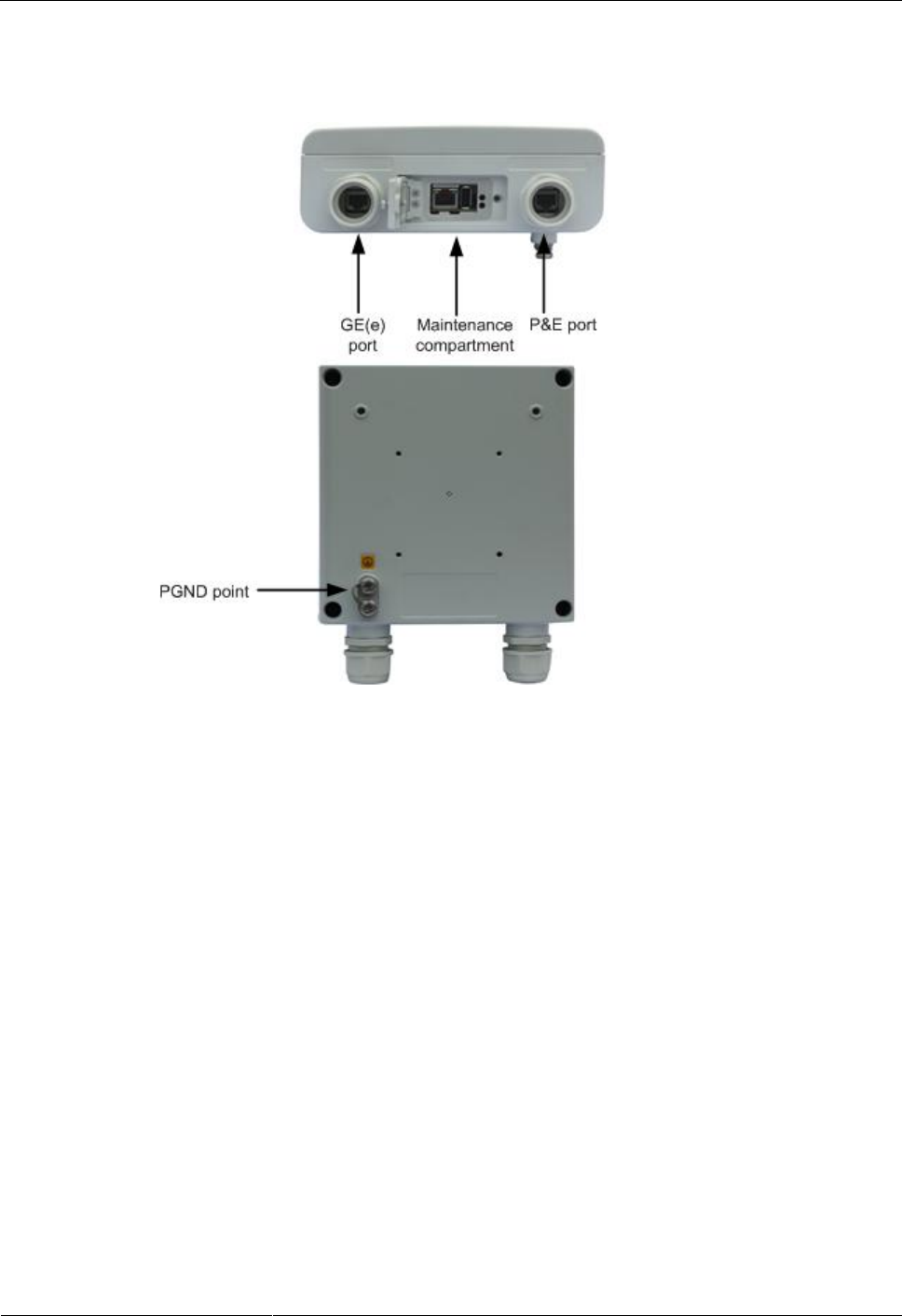
OptiX RTN 360 Radio Transmission
Product Description
3 Product Structure
Issue 02 (2014-08-30)
Huawei Proprietary and Confidential
Copyright © Huawei Technologies Co., Ltd.
31
Port Positions
Figure 3-3 Port positions
The maintenance compartment contains a USB port, RSSI port, and an NMS port. See Figure
3-4. When RTN 360 is running, the protective cover of the maintenance compartment must be
closed.
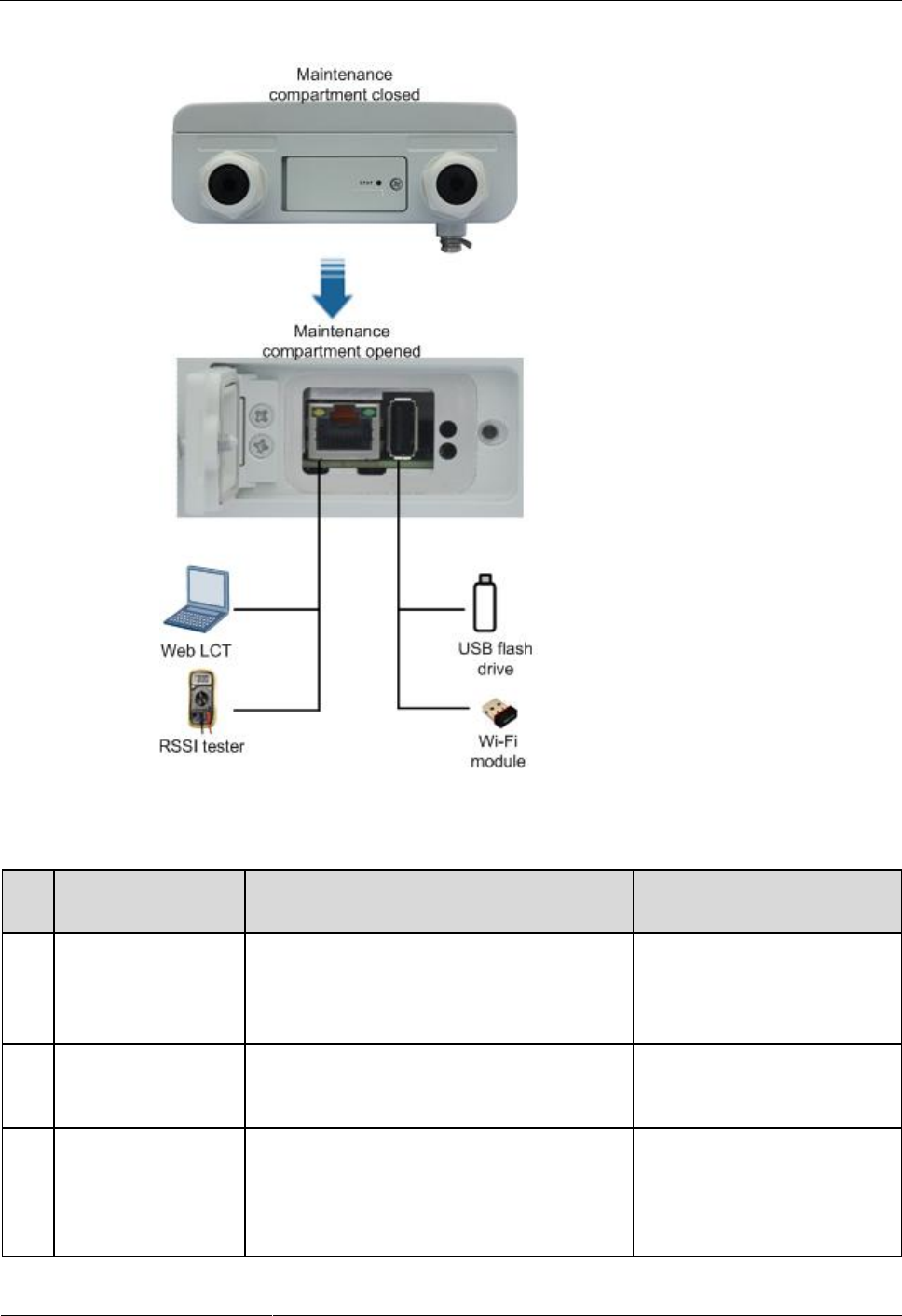
OptiX RTN 360 Radio Transmission
Product Description
3 Product Structure
Issue 02 (2014-08-30)
Huawei Proprietary and Confidential
Copyright © Huawei Technologies Co., Ltd.
32
Figure 3-4 Front view of the management ports
Table 3-4 Ports
No
.
Port
Description
Connector Type
1
GE(e)
GE electrical port
NOTE
Do not remove the protective connector of a vacant
GE electrical port.
RJ45 connector
2
P&E
Power over Ethernet port, which can
concurrently receive FE/GE electrical signals
and -48 V power signals
RJ45 connector
3
USB port
A USB flash drive can connect to the USB
port to import initial configuration data,
back up NE data, or upgrade software.
A Wi-Fi module can connect to the USB
port to enable connection of the Mobile
USB connector

OptiX RTN 360 Radio Transmission
Product Description
3 Product Structure
Issue 02 (2014-08-30)
Huawei Proprietary and Confidential
Copyright © Huawei Technologies Co., Ltd.
33
No
.
Port
Description
Connector Type
LCT or Web LCT to the equipment.
4
RSSI port
You can obtain the received signal level
(RSL) of an RTN 360 by testing the voltage at
the RSSI port using a multimeter.
RJ45 connector
NOTE
RSSI port and NMS port share an
RJ45 connector.
5
NMS port
The NMS port transmits network management
signals.
6
PGND point
-
M5 screw
P&E Port and GE(e) Port
The P&E port can simultaneously receive GE electrical signals and -48 V power signals. It
connects to a power injector (PI), a Dock, or power sourcing equipment (PSE).
The GE(e) port is a common GE electrical port.
On the NMS, the P&E port is displayed as GE1 and the GE(e) port is displayed as GE2.
Both the P&E and GE(e) ports use RJ45 connectors.
Figure 3-5 Front view of an RJ45 connector
123 4 5 6 7 8
Table 3-5 Pin assignments for RJ45 connectors of the P&E and GE(e) ports
Pin No.
P&E Port
GE(e) Port
Signal
Function
Signal
Function
1
BIDA+/BGND
Bidirectional
data wire A
(+)/BGND
BIDA+
Bidirectional
data wire A (+)
2
BIDA-/BGND
Bidirectional
data wire A
(-)/BGND
BIDA-
Bidirectional
data wire A (-)
3
BIDB+/-48 V
Bidirectional
data wire B
(+)/-48 V
BIDB+
Bidirectional
data wire B (+)

OptiX RTN 360 Radio Transmission
Product Description
3 Product Structure
Issue 02 (2014-08-30)
Huawei Proprietary and Confidential
Copyright © Huawei Technologies Co., Ltd.
34
Pin No.
P&E Port
GE(e) Port
Signal
Function
Signal
Function
4
BIDB-/BGND
Bidirectional
data wire B
(-)/BGND
BIDB-
Bidirectional
data wire B (-)
5
BIDC+/BGND
Bidirectional
data wire C
(+)/BGND
BIDC+
Bidirectional
data wire C (+)
6
BIDC-/-48 V
Bidirectional
data wire C
(-)/-48 V
BIDC-
Bidirectional
data wire C (-)
7
BIDD+/-48 V
Bidirectional
data wire D
(+)/-48 V
BIDD+
Bidirectional
data wire D (+)
8
BIDD-/-48 V
Bidirectional
data wire D
(-)/-48 V
BIDD-
Bidirectional
data wire D (-)
USB Port
The USB port can either connect to a USB flash drive for importing configurations, upgrading
software, or backing up data or to a Wi-Fi module for enabling connection of the Mobile LCT
or Web LCT to the equipment.
RSSI Port/NMS Port
Table 3-6 provides the pin assignments for the RJ45 connector of the RSSI port/NMS port.
Table 3-6 Pin assignments for the RJ45 connector of the RSSI port/NMS port
Pin No.
Signal
1
Signal output (+)
2
Signal output (-)
3
Signal input (+)
4
Ground
5
Reserved
6
Signal input (-)
7
RSSI test level signal
8
Reserved

OptiX RTN 360 Radio Transmission
Product Description
3 Product Structure
Issue 02 (2014-08-30)
Huawei Proprietary and Confidential
Copyright © Huawei Technologies Co., Ltd.
35
The RJ45 connector has two indicators that indicate the NMS port connection status. Table
3-7 describes what the indicator statuses mean.
Table 3-7 Indicator status explanation
Indicator
Status
Meaning
LINK (yellow)
On
The NMS port connection is normal.
Off
The NMS port connection is
interrupted.
ACT (green)
On or blinks
The NMS port is receiving or
transmitting data.
Off
The NMS port is not receiving or
transmitting data.
3.4 Indicators
RTN 360 has an STAT indicator and a USB port indicator.
The two indicators are in the maintenance compartment. You can observe the STAT indicator
even when the protective cover of the maintenance compartment is closed, but you can
observe the USB port indicator only if the protective cover of the maintenance compartment
is open.
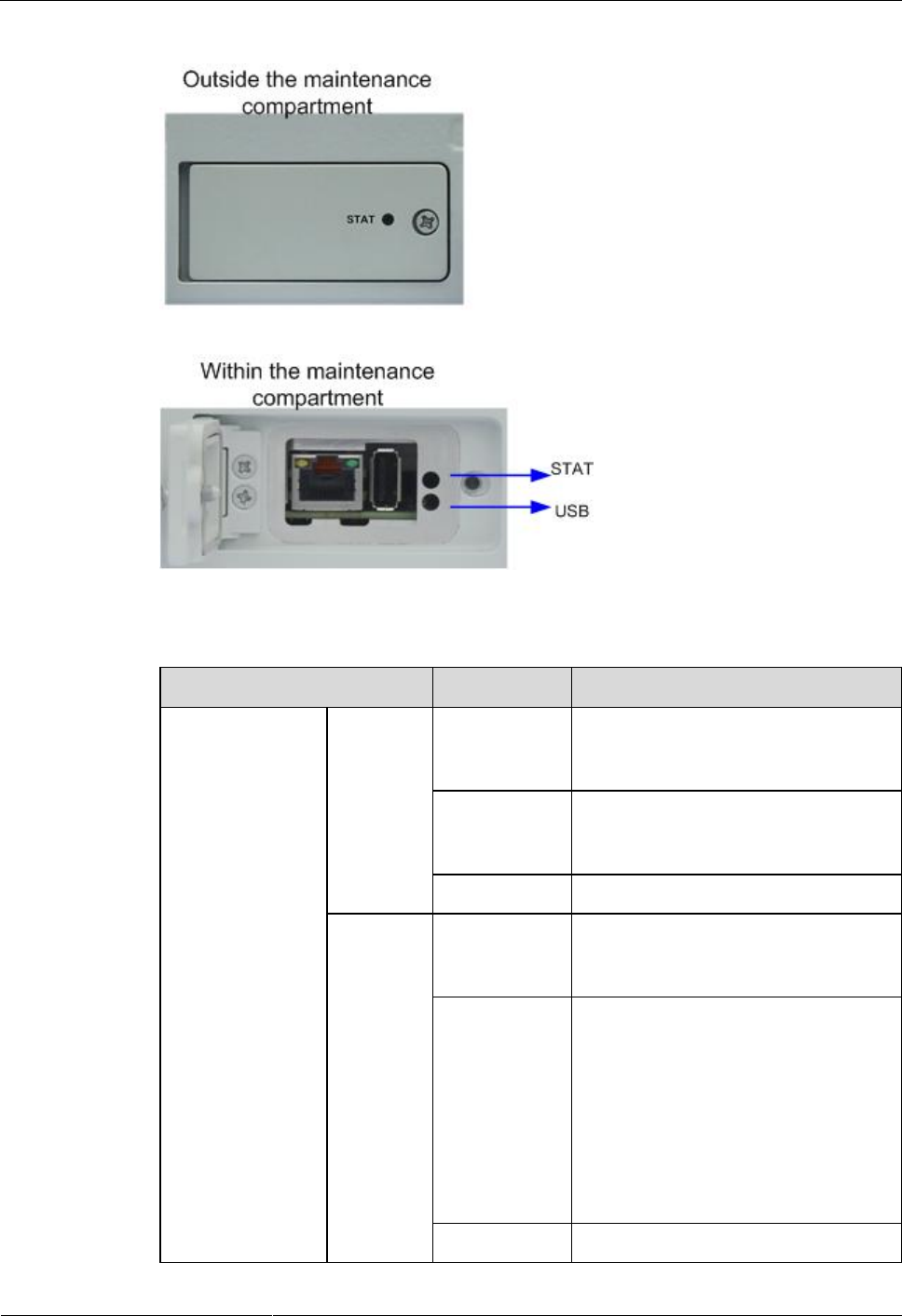
OptiX RTN 360 Radio Transmission
Product Description
3 Product Structure
Issue 02 (2014-08-30)
Huawei Proprietary and Confidential
Copyright © Huawei Technologies Co., Ltd.
36
Figure 3-6 Indicator positions
Table 3-8 Indicator status explanation
Indicator
Status
Meaning
Indicator that
indicates system
operating status
and link status
(STAT)
Operating
status
Steady green
The equipment is working properly
and services at the air interface are
normal.
Steady red
The hardware is faulty (for example,
the equipment fails to start, or a
HARD_BAD alarm is reported).
Off
The equipment is not powered on.
Link
status
Blinks red
The equipment is working properly but
services at the air interface are
interrupted.
Steady green
The microwave link is available.
No expected receive power is set
according to the network plan.
The microwave link is available.
The expected receive power is set
according to the network plan. The
difference between the actual
receive power and the expected
receive power is less than 3 dB.
Blinks green
The microwave link is available. The

OptiX RTN 360 Radio Transmission
Product Description
3 Product Structure
Issue 02 (2014-08-30)
Huawei Proprietary and Confidential
Copyright © Huawei Technologies Co., Ltd.
37
Indicator
Status
Meaning
difference between the actual receive
power and the expected receive power
is greater than 3 dB.
USB port
indicator
Wi-Fi
module
Steady green
The Wi-Fi module has been identified
and is working properly.
Steady red
The Wi-Fi module is faulty.
Off
No Wi-Fi module is connected to
the USB port.
The Wi-Fi module connected to the
USB port cannot be identified.
USB flash
drive
Steady green
Backing up or restoring data is
complete.
Blinks green
Data is being backed up or restored.
Steady red
The USB flash drive is faulty.
Backing up or restoring data fails.
Blinks red
The hardware is faulty and fails to
initialize the USB flash drive.
Off
No USB flash drive is connected to
the USB port.
The USB flash drive connected to
the USB port cannot be identified.
After you load data to an RTN 360 using a USB flash drive, the RTN 360 automatically resets. All the
indicators are off during the reset. After the reset is complete, observe the STAT indicator to learn about
the status of the RTN 360.
3.5 Labels
A product nameplate label, electrostatic discharge (ESD) warning label, radiation warning
label, grounding label, and high temperature warning label are affixed on a chassis. Adhere to
any warnings on the labels when performing tasks to avoid personal injury and damage to
equipment.
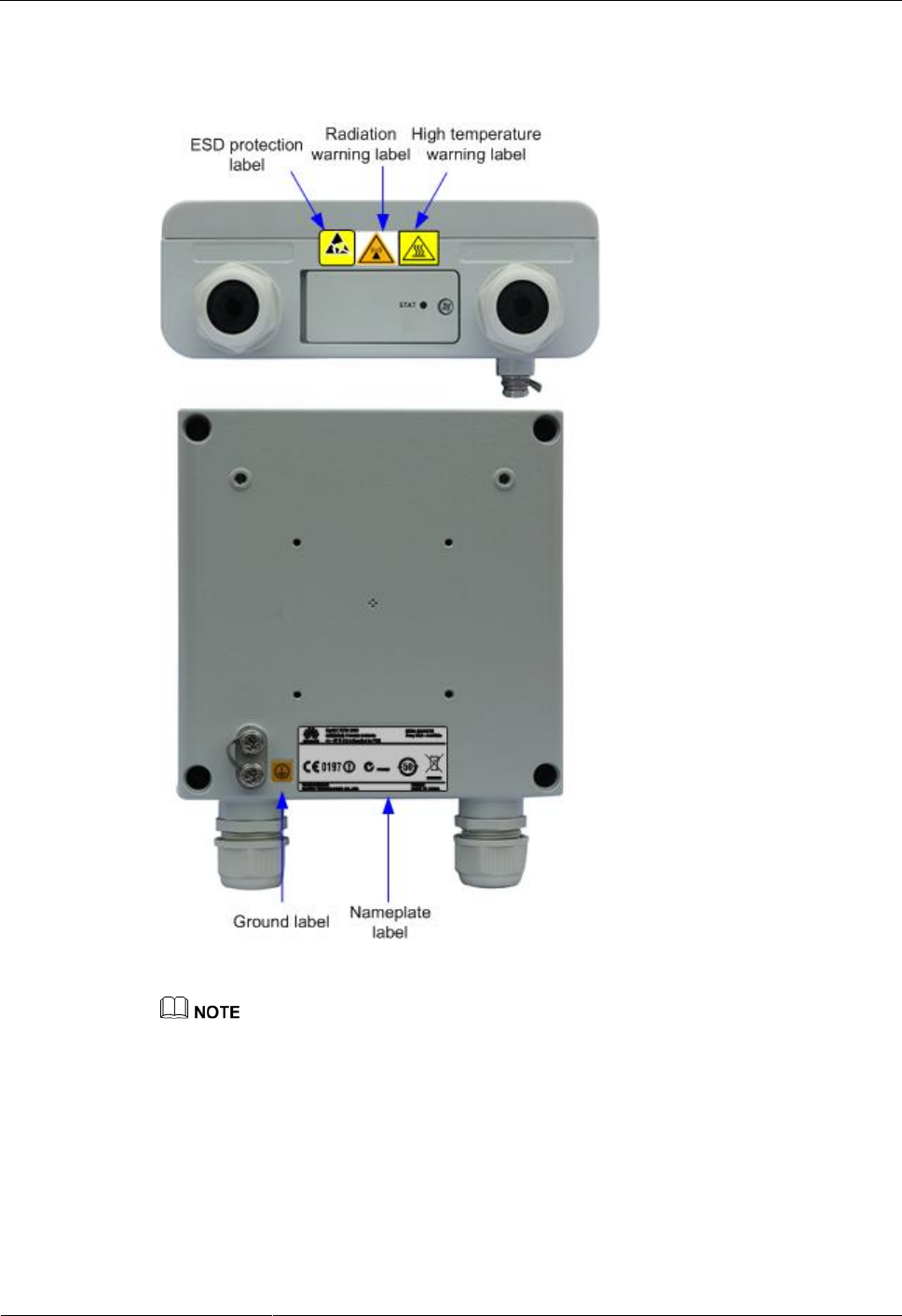
OptiX RTN 360 Radio Transmission
Product Description
3 Product Structure
Issue 02 (2014-08-30)
Huawei Proprietary and Confidential
Copyright © Huawei Technologies Co., Ltd.
38
Label Positions
Figure 3-7 Label positions
High temperature warning label: Indicates that the equipment surface temperature may exceed 70°C
when the ambient temperature is higher than 55°C. Wear protective gloves to handle the equipment.

OptiX RTN 360 Radio Transmission
Product Description
3 Product Structure
Issue 02 (2014-08-30)
Huawei Proprietary and Confidential
Copyright © Huawei Technologies Co., Ltd.
39
Product Nameplate Label
Figure 3-8 Product nameplate label
Table 3-9 Product nameplate label description
Label Information
Description
OptiX RTN 360
Indicates the product name.
ITEM: 52450775
Indicates the product item for identifying
the product model.
-48V; 0.5A
Indicates the power supply rated value.
Supplied by P&E
Indicates that PoE is used.
Freq: 59.0–64.0 GHz
Indicates the frequency range.

OptiX RTN 360 Radio Transmission
Product Description
4 Network Management System
Issue 02 (2014-08-30)
Huawei Proprietary and Confidential
Copyright © Huawei Technologies Co., Ltd.
40
4 Network Management System
About This Chapter
This chapter describes network management solutions and the network management system
(NMS) software used in these solutions.
4.1 Network Management Solutions
Huawei provides complete transport network management solutions that satisfy the
telecommunications management network (TMN) requirements for various function domains
and customer groups of telecommunications networks.
4.2 Web LCT
The Web LCT is a local maintenance terminal running on a PC.
4.3 Mobile LCT
The Mobile LCT is a local maintenance terminal running on a smartphone.
4.4 U2000-T
The iManager U2000-T is a network-level management system (NMS) that manages Huawei
fixed-line network products in a unified manner.
4.5 U2000-M
The U2000-M is a network-level management system that manages Huawei mobile
communications products in a unified manner.
4.1 Network Management Solutions
Huawei provides complete transport network management solutions that satisfy the
telecommunications management network (TMN) requirements for various function domains
and customer groups of telecommunications networks.
The following network management solutions are available:
iManager U2000 Web LCT local maintenance terminal
The Web LCT, a web-based local maintenance terminal, manages local and remote NEs
on a per-NE/hop basis.
iManager U2000 Mobile LCT local maintenance terminal
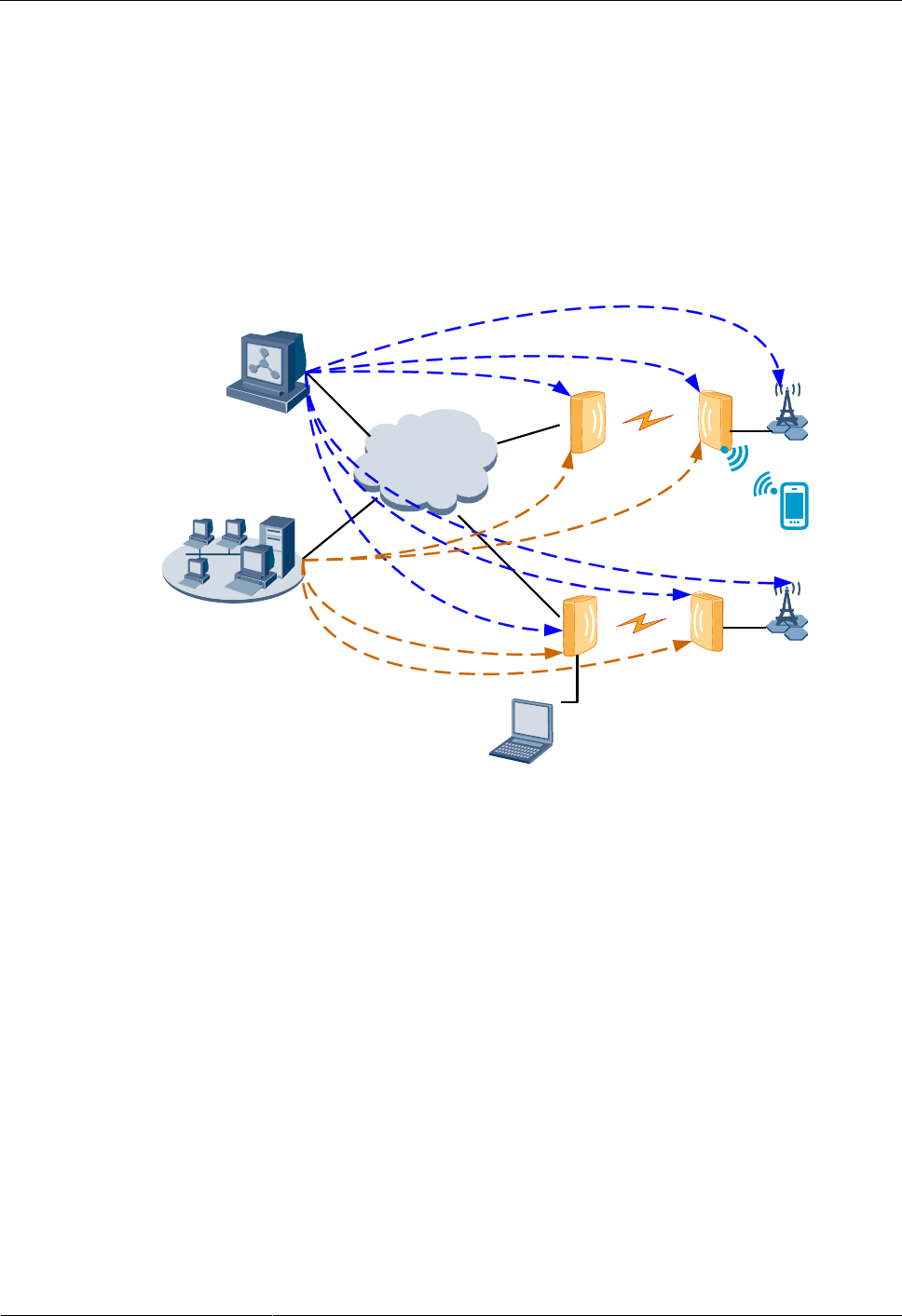
OptiX RTN 360 Radio Transmission
Product Description
4 Network Management System
Issue 02 (2014-08-30)
Huawei Proprietary and Confidential
Copyright © Huawei Technologies Co., Ltd.
41
The Mobile LCT, a local maintenance terminal running on a smartphone, manages local
and remote NEs on a per-NE/hop basis through Wi-Fi.
iManager U2000-T unified network management system
The iManager U2000-T, a network-level management system, manages Huawei RTN,
PTN, MSTP, and WDM products on transport networks in a unified manner.
iManager U2000-M unified network management system
The iManager U2000-M, a network-level management system, manages Huawei mobile
communications products in a unified manner.
Figure 4-1 Network management solutions for transport networks
WAN/LAN
V-Band
V-Band
V-Band
V-Band
WebLCT
U2000-M
U2000-T
Mobile LCT
4.2 Web LCT
The Web LCT is a local maintenance terminal running on a PC.
The Web LCT provides the following management functions at the NE layer: NE
management, alarm management, performance management, configuration management,
communication management, and security management.
The Web LCT also provides hop management, which displays the information about the two
ends of a microwave link hop graphically and enables a microwave link hop to be managed
easily.
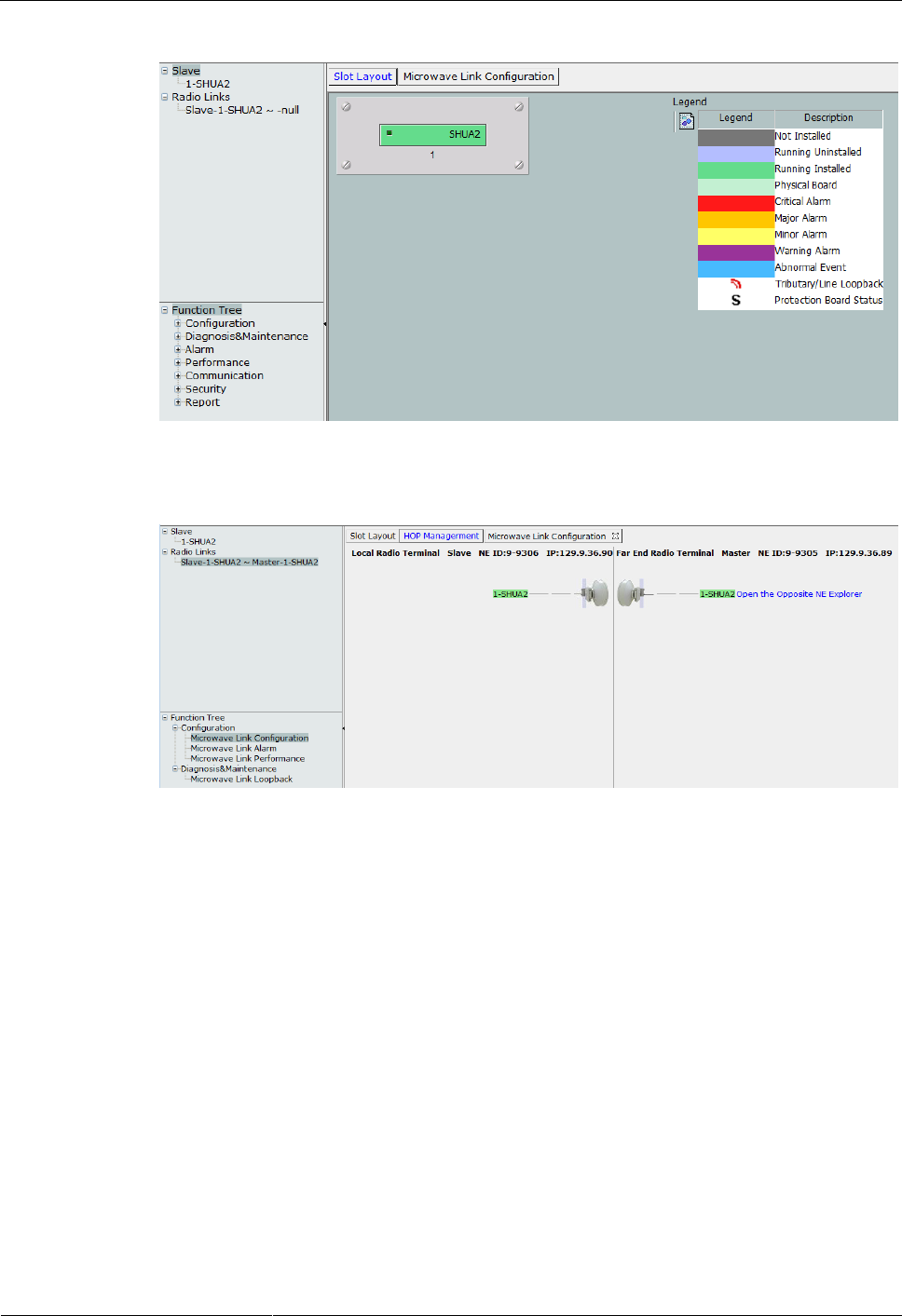
OptiX RTN 360 Radio Transmission
Product Description
4 Network Management System
Issue 02 (2014-08-30)
Huawei Proprietary and Confidential
Copyright © Huawei Technologies Co., Ltd.
42
Figure 4-2 NE management window
Figure 4-3 HOP management window
4.3 Mobile LCT
The Mobile LCT is a local maintenance terminal running on a smartphone.
The Mobile LCT manages an NE after connecting to the NE using Wi-Fi. Figure 4-4 shows a
typical application scenario.
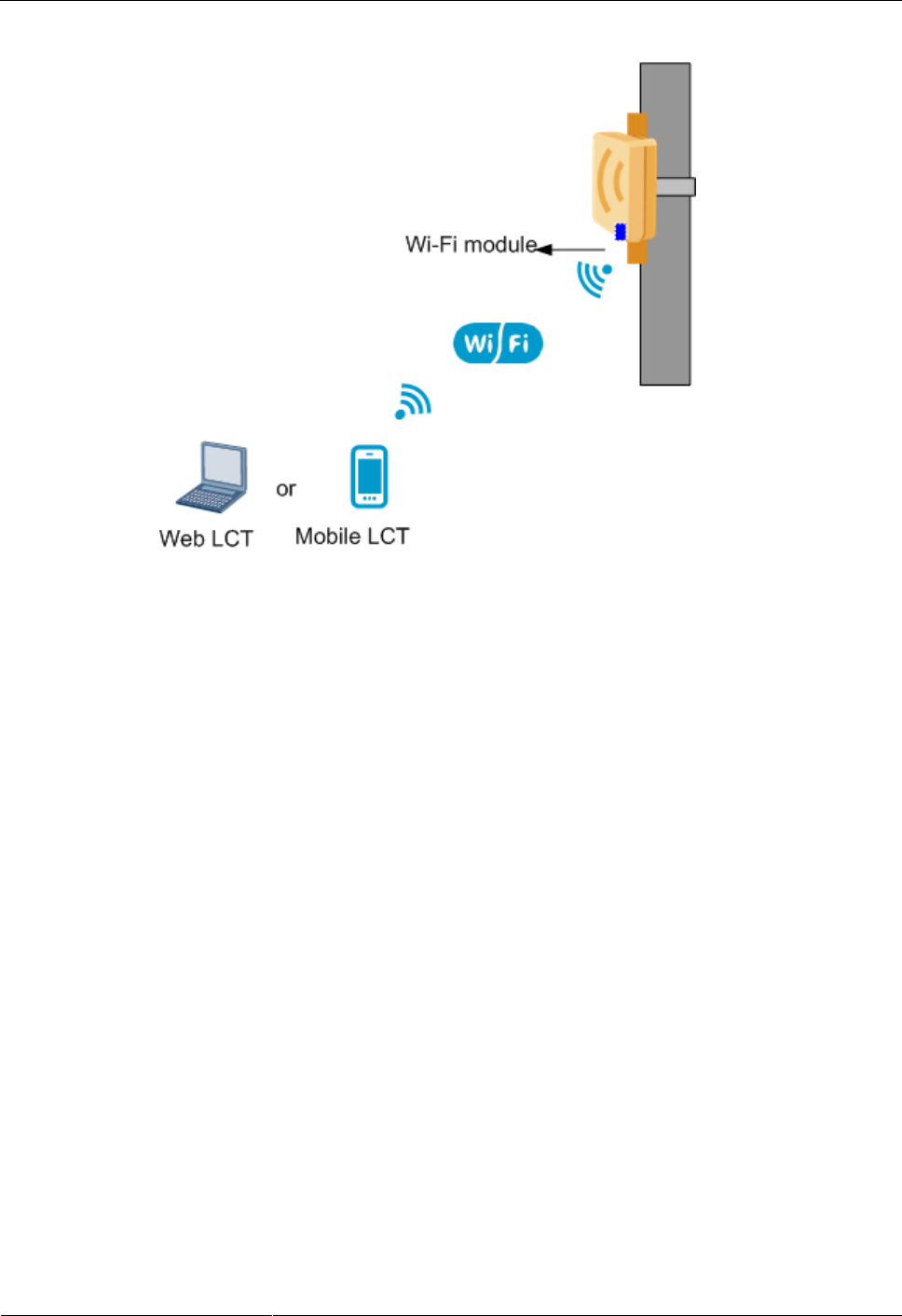
OptiX RTN 360 Radio Transmission
Product Description
4 Network Management System
Issue 02 (2014-08-30)
Huawei Proprietary and Confidential
Copyright © Huawei Technologies Co., Ltd.
43
Figure 4-4 Mobile LCT application scenario
The Mobile LCT can create NEs by searching NEs, configure NE attributes, microwave links,
and DCN, and query alarms.
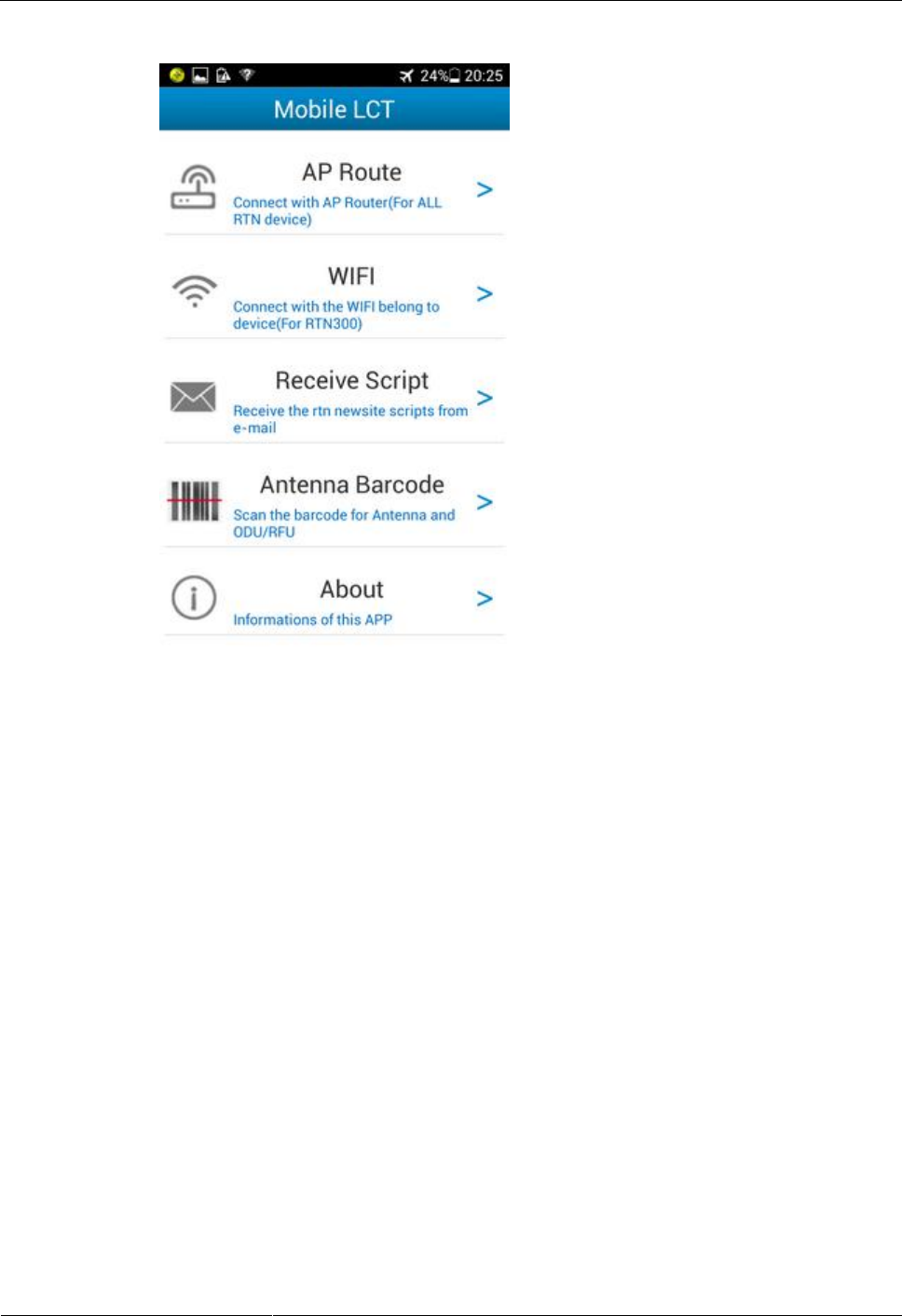
OptiX RTN 360 Radio Transmission
Product Description
4 Network Management System
Issue 02 (2014-08-30)
Huawei Proprietary and Confidential
Copyright © Huawei Technologies Co., Ltd.
44
Figure 4-5 Workbench of the Mobile LCT
4.4 U2000-T
The iManager U2000-T is a network-level management system (NMS) that manages Huawei
fixed-line network products in a unified manner.
The U2000-T provides topology management, which displays NE positions and connections
between NEs. See Figure 4-6.
The U2000-T manages network-level alarms, performance, inventory, and security, and
end-to-end service configurations. See Figure 4-7.
The U2000-T provides a built-in NE Explorer to manage all NEs on the topology. See Figure
4-8.
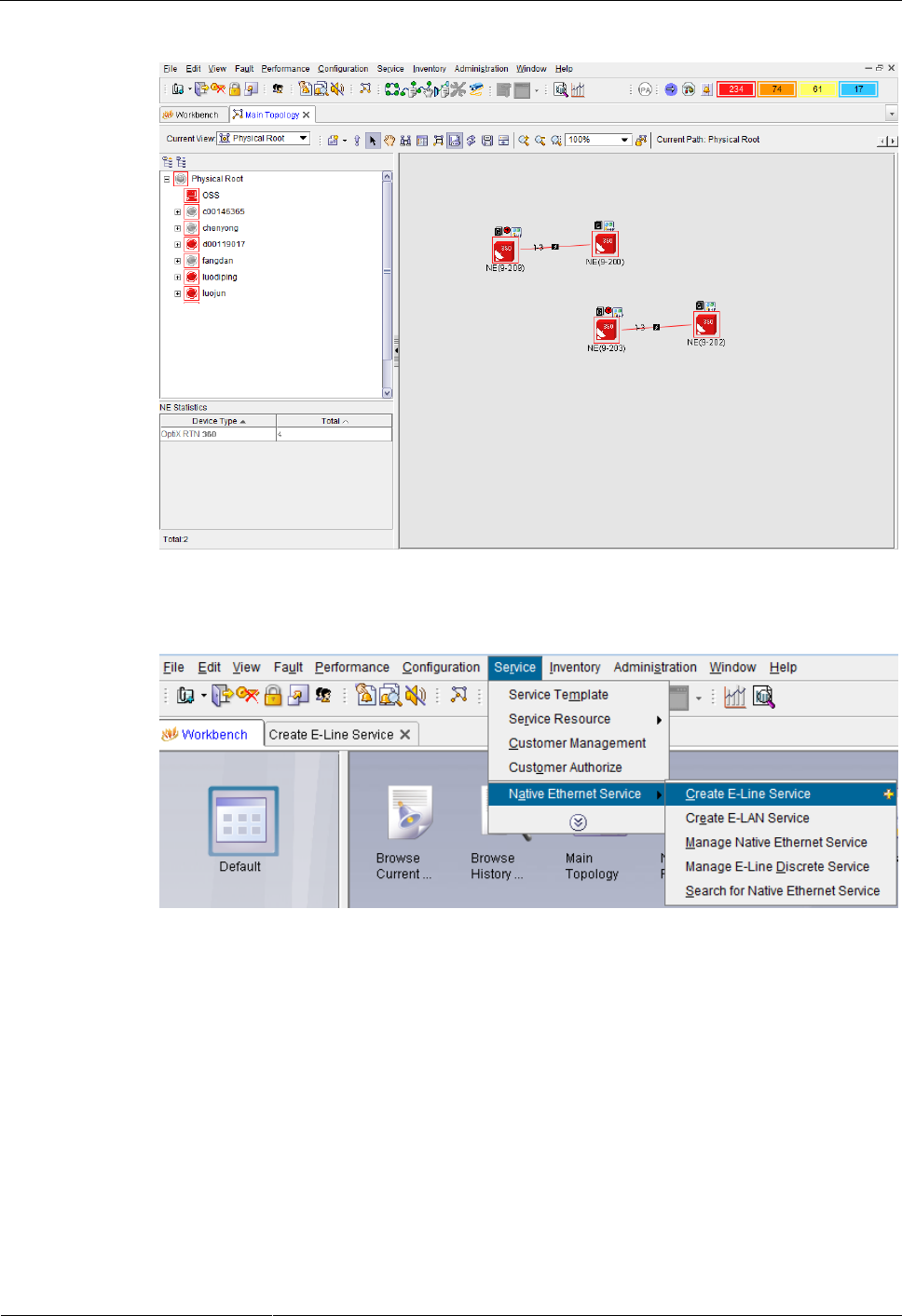
OptiX RTN 360 Radio Transmission
Product Description
4 Network Management System
Issue 02 (2014-08-30)
Huawei Proprietary and Confidential
Copyright © Huawei Technologies Co., Ltd.
45
Figure 4-6 Topology management interface of the U2000-T
Figure 4-7 End-to-end service configuration interface of the U2000-T
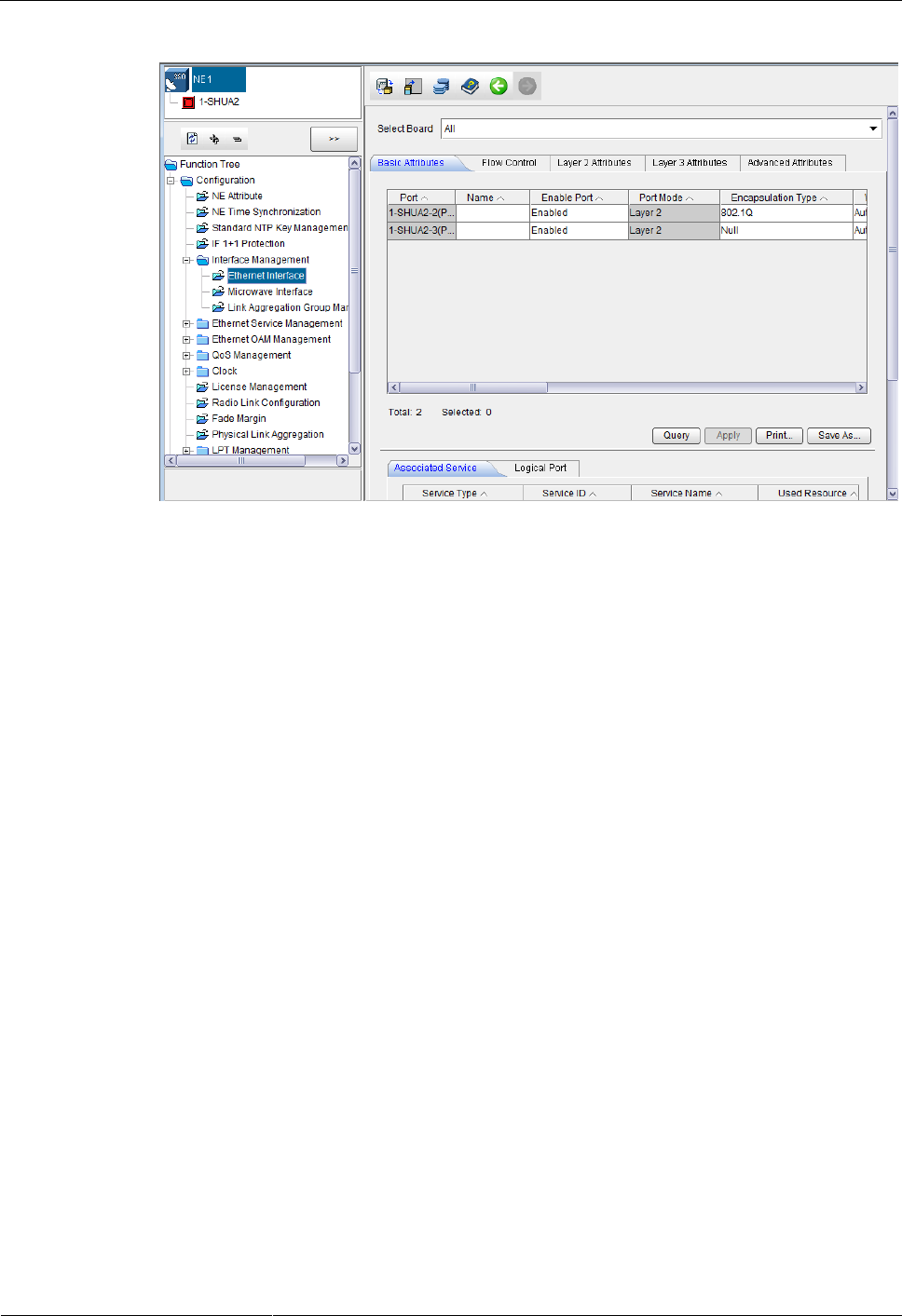
OptiX RTN 360 Radio Transmission
Product Description
4 Network Management System
Issue 02 (2014-08-30)
Huawei Proprietary and Confidential
Copyright © Huawei Technologies Co., Ltd.
46
Figure 4-8 NE Explorer interface of the U2000-T
4.5 U2000-M
The U2000-M is a network-level management system that manages Huawei mobile
communications products in a unified manner.
The U2000-M displays connections between RTN 360s and base stations.
The U2000-M can manage RTN 360s using its built-in NE Explorer.

OptiX RTN 360 Radio Transmission
Product Description
5 Technical Specifications
Issue 02 (2014-08-30)
Huawei Proprietary and Confidential
Copyright © Huawei Technologies Co., Ltd.
47
5 Technical Specifications
About This Chapter
This chapter describes the technical specifications of OptiX RTN 360.
5.1 Ethernet Service Specifications
This section describes the service throughput for Native Ethernet services on a hop of
microwave link.
5.2 RF Performance
This section describes major RF performance of RTN 360, including the frequency band,
transmit power, and receiver sensitivity.
5.3 Antenna Performance
This section describes the major antenna performance of RTN 360, including the antenna gain,
standing wave ratio (SWR), and cross polarization discrimination (XPD).
5.4 Predicted Reliability
This section describes the predicted equipment reliability of a single RTN 360 and the
predicted link reliability of a hop of microwave link forming by two RTN 360s.
5.5 Integrated System Performance
Integrated system performance includes the dimensions, weight, power consumption, and
power supply.
5.1 Ethernet Service Specifications
This section describes the service throughput for Native Ethernet services on a hop of
microwave link.
The bit error performance of Ethernet services on RTN 360 complies with IETF RFC2544.

OptiX RTN 360 Radio Transmission
Product Description
5 Technical Specifications
Issue 02 (2014-08-30)
Huawei Proprietary and Confidential
Copyright © Huawei Technologies Co., Ltd.
48
Throughput of Ethernet Services
Ratio of Timeslots for
Uplink Data to Those for
Downlink Data
(Uplink:Downlink)
Uplink Throughput
(Mbit/s)
Downlink Throughput
(Mbit/s)
1:1
244 to 313
244 to 313
1:2
161 to 206
328 to 419
2:1
328 to 419
161 to 206
1:3
118 to 152
372 to 476
3:1
372 to 476
118 to 152
The throughput is measured assuming that untagged Ethernet frames with length ranging from 64 bytes
to 9600 bytes are transmitted.
5.2 RF Performance
This section describes major RF performance of RTN 360, including the frequency band,
transmit power, and receiver sensitivity.
Table 5-1 RF performance
Item
Performance
Working mode
200 MHz/16QAM
Operating frequency band
59 GHz to 64 GHz
Transmit power
3 dBm
Receive power
Maximum receive power: -23 dBm
Minimum receive power: -70 dBm
Receiver Sensitivity (BER = 10-6)
-60 dBm
Ratio of timeslots for uplink data to those
for downlink data
3:1, 2:1, 1:1, 1:2, and 1:3
5.3 Antenna Performance
This section describes the major antenna performance of RTN 360, including the antenna gain,
standing wave ratio (SWR), and cross polarization discrimination (XPD).

OptiX RTN 360 Radio Transmission
Product Description
5 Technical Specifications
Issue 02 (2014-08-30)
Huawei Proprietary and Confidential
Copyright © Huawei Technologies Co., Ltd.
49
Table 5-2 Antenna performance
Item
Performance
Antenna gain
34.5 dBi
SWR
10 dB
3 dB beamwidth
1.9º
XPD
21 dB
Front-to-back ratio (FBR)
> 48 dB
Regulatory compliance
ETSI class 2
5.4 Predicted Reliability
This section describes the predicted equipment reliability of a single RTN 360 and the
predicted link reliability of a hop of microwave link forming by two RTN 360s.
Predicted Equipment Reliability
The equipment reliability shows the reliability of a single piece of equipment.
Table 5-3 Predicted equipment reliability
Item
Performance
MTBF (hour)
66.22 x 104
MTBF (year)
75.59
MTTR (hour)
0.79
Availability
99.99985%
Predicted Link Reliability
The link reliability shows the reliability of a microwave link hop and all components
involved.
Table 5-4 Predicted link reliability
Item
Performance
MTBF (hour)
33.11 x 104
MTBF (year)
37.79
Availability
99.99970%

OptiX RTN 360 Radio Transmission
Product Description
5 Technical Specifications
Issue 02 (2014-08-30)
Huawei Proprietary and Confidential
Copyright © Huawei Technologies Co., Ltd.
50
5.5 Integrated System Performance
Integrated system performance includes the dimensions, weight, power consumption, and
power supply.
Mechanical Performance and Power Consumption
Item
Performance
Dimensions (H x W x D)
192.5 mm x 192.5 mm x 70 mm
Weight
2.5 kg
Typical power consumption
20 W
Power supply
Supports power over Ethernet.
The input PoE voltage ranges from –38.4
V to –57.6 V.
Electromagnetic Compatibility
Passed CE authentication
Compliant with ETSI EN 301 489-1
Compliant with ETSI EN 301 489-4
Compliant with EN 55022 class B
Lightning Protection
Compliant with ITU-T K.20
Compliant with ITU-T K.21
Compliant with ITU-T K.27
Compliant with ETSI EN 300 253.
Safety
Passed CE authentication
Compliant with IEC 60825
Compliant with IEC 60215
Compliant with IEC 60950-1
Compliant with IEC 60950-22
Compliant with K.20
Compliant with K.21
Compliant with GB 12638-1990
Compliant with EN 41003

OptiX RTN 360 Radio Transmission
Product Description
5 Technical Specifications
Issue 02 (2014-08-30)
Huawei Proprietary and Confidential
Copyright © Huawei Technologies Co., Ltd.
51
Environment
RTN 360 is used outdoors.
Table 5-5 Environment performance
Item
Performance
Major reference
standards
Operating
Compliant with EN 300 019-2-4
Transport
ation
Compliant with EN 300 019-2-3 class 2.3
Storage
Compliant with EN 300 019-2-4
Temperature
Operating
-33ºC to +55ºC
Transport
ation and
storage
-40ºC to +70ºC
Protection class
IP65
Relative humidity
5% to 100%
Earthquake resistant design
Compliant with ETSI 300 019-2-4
Mechanical stress
Compliant with ETSI EN 300 019-2-1

OptiX RTN 360 Radio Transmission
Product Description
6 Accessories
Issue 02 (2014-08-30)
Huawei Proprietary and Confidential
Copyright © Huawei Technologies Co., Ltd.
52
6 Accessories
About This Chapter
RTN 360 describes all the accessories.
6.1 Power Injector
A power injector (PI) transmits GE signals together with -48 V power signals to an RTN 360
through a network cable.
6.2 Dock
Dock is a type of outdoor power sourcing equipment (PSE) with the built-in Layer 2
switching function. It often provides power to both RTN 360 and Huawei small cell base
stations.
6.3 USB Flash Drives
Configuring, replacing, and upgrading RTN 360s is simple with USB flash drives, which store
NE data and new software to be installed and are also used to back up configuration data.
6.4 Wi-Fi Module
A Wi-Fi module for an RTN 360 enables the Mobile LCT or Web LCT to connect to the RTN
360 using Wi-Fi, implementing contact-free configuration and maintenance.
6.1 Power Injector
A power injector (PI) transmits GE signals together with -48 V power signals to an RTN 360
through a network cable.
Huawei provides various types of PIs with similar functions and working principles. PIs will be detailed
latter by taking OptiX RTN PI-DC A11 as an example.
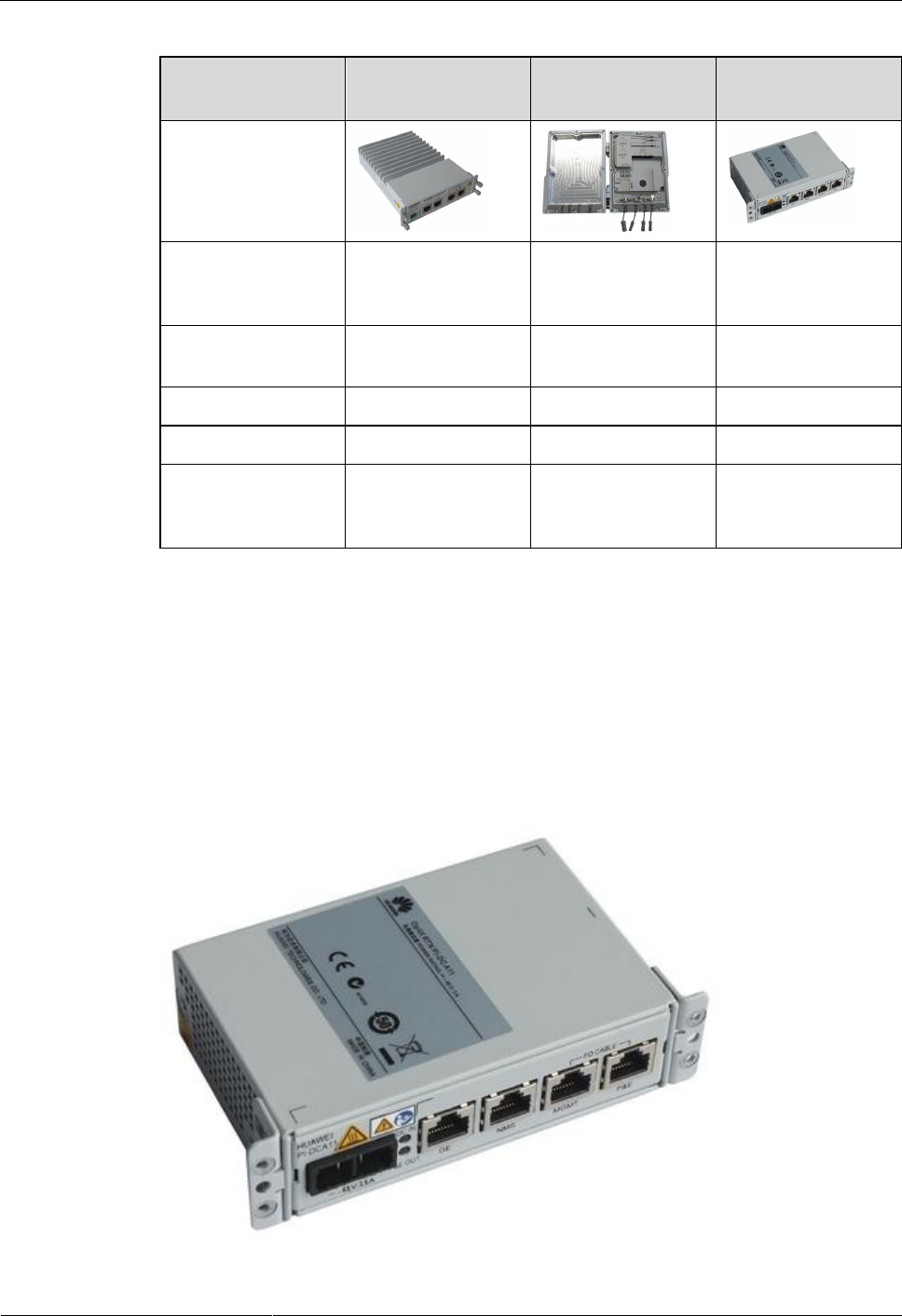
OptiX RTN 360 Radio Transmission
Product Description
6 Accessories
Issue 02 (2014-08-30)
Huawei Proprietary and Confidential
Copyright © Huawei Technologies Co., Ltd.
53
Table 6-1 Differences between PIs
Type
OptiX RTN PI-DC
A10
OptiX RTN PI-DC
B10
OptiX RTN PI-DC
A11
Appearance
Application scenario
Indoor equipment
room and outdoor
cabinet
Outdoor (not on a
tower)
Indoor equipment
room and outdoor
cabinet
Dimensions
38.6 mm x 145.6
mm x 185 mm
43.6 mm x 164 mm
x 226 mm
36.0 mm x 145.6
mm x 84 mm
Weight
0.8 kg
1.3 kg
0.5 kg
Input power supply
–38.4 V to –57.6 V
–38.4 V to –57.6 V
–38.4 V to –57.6 V
Number of P&E
ports, Mode
One, Forced power
mode
One, Forced power
mode
One, Standard PSE
or forced power
mode
6.1.1 Appearance, Functions, and Features
A power injector (PI) transmits GE electrical signals, -48 V power signals, and network
management signals to an RTN 360 through an outdoor network cable.
Appearance
Figure 6-1 Appearance
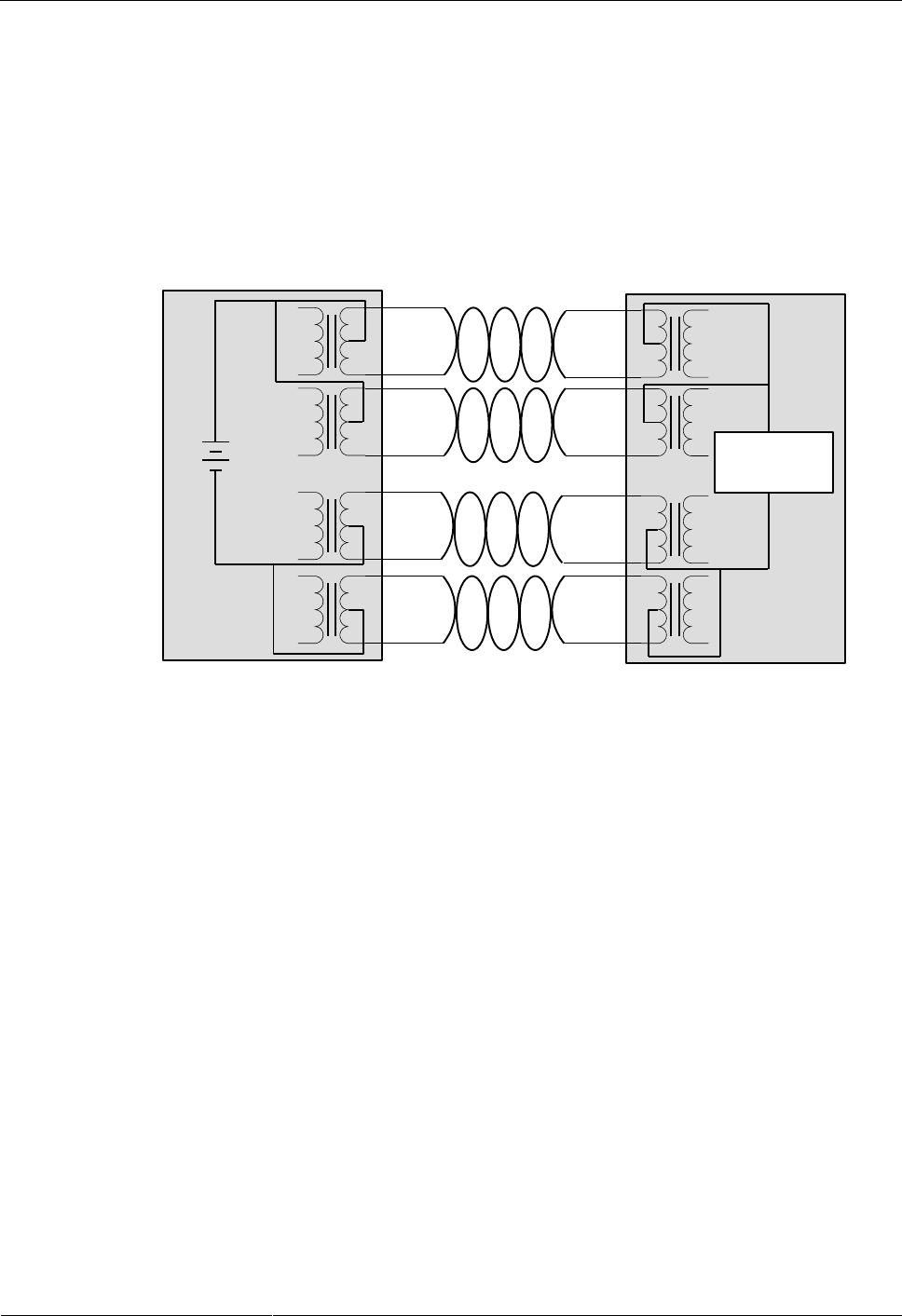
OptiX RTN 360 Radio Transmission
Product Description
6 Accessories
Issue 02 (2014-08-30)
Huawei Proprietary and Confidential
Copyright © Huawei Technologies Co., Ltd.
54
Features and Functions
Switches between the standard PSE power mode or forced power mode through a dual
in-line package (DIP) switch.
Receives/Transmits a channel of electrical GE service signals.
Receives a channel of -48 V DC power signals.
Couples -48 V power signals to eight pins of the GE electrical port and transmits them to
an RTN 360 through an outdoor network cable. See Figure 6-2.
Figure 6-2 -48 V power signal coupling
1
2
3
6
4
5
7
8
-48V
1
2
3
6
4
5
7
8
DC
Converter
BIDA+ BIDA+
BIDA-
BIDB+
BIDB-
BIDC+
BIDC-
BIDD+
BIDD-
BIDA+
BIDA-
BIDB+
BIDB-
BIDC+
BIDD+
BIDD-
(PI)(FO)
BIDC-
BGND
-48V
There is no interference between DC power signals and Ethernet service signals, which
can be transmitted over the same twisted pair.
Installation Modes
An indoor PI can be installed:
In a 300 mm deep European Telecommunications Standards Institute (ETSI) cabinet
In a 600 mm deep ETSI cabinet
In a 450 mm deep 19-inch cabinet
In a 600 mm deep 19-inch cabinet
In a 19-inch open rack
In an outdoor cabinet for wireless equipment
On an indoor wall
6.1.2 Ports and Indicators
A power injector (PI) has one GE service port, one network management system (NMS) port,
one P&E port, one power input port, indicators, and labels on its front panel.
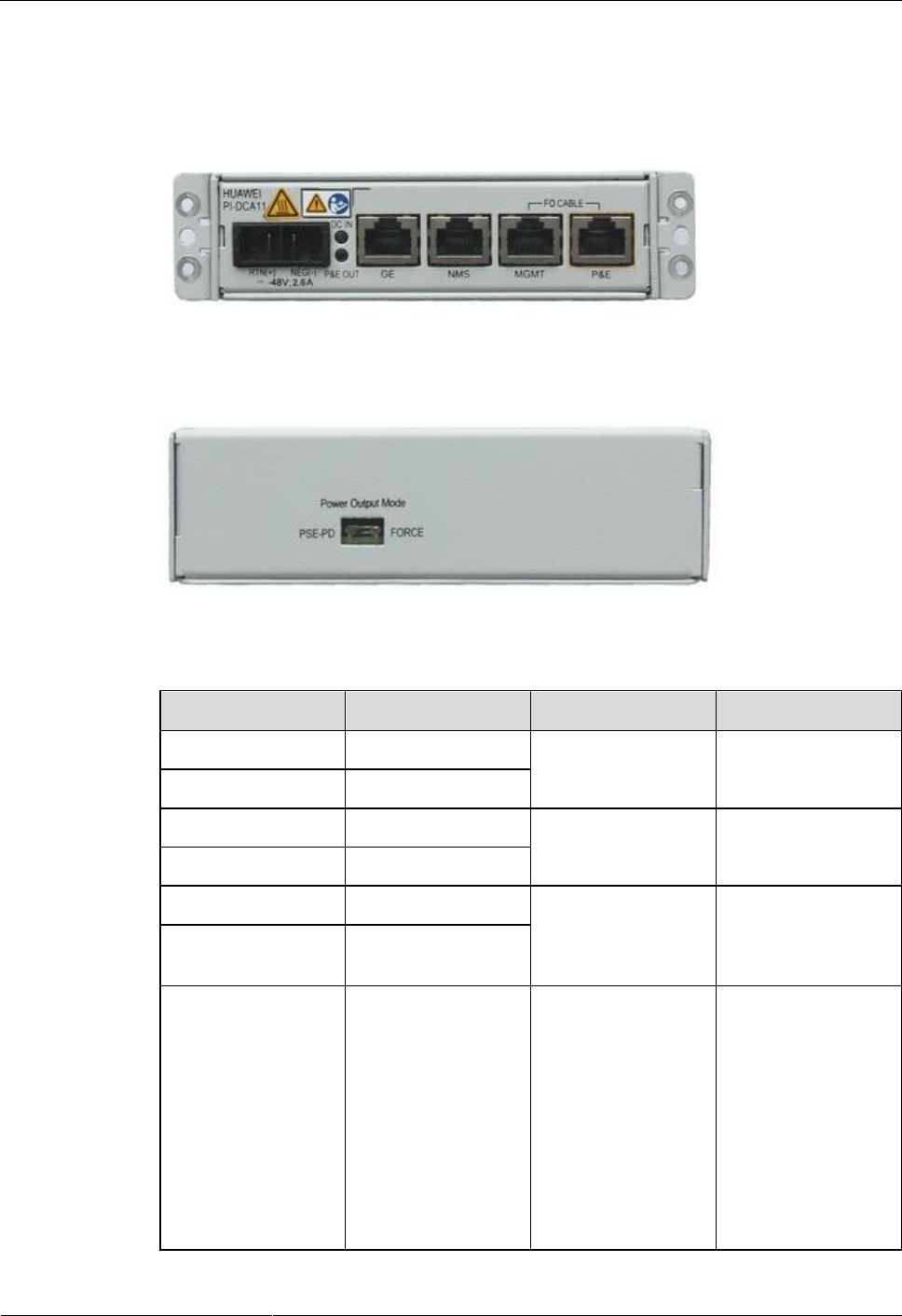
OptiX RTN 360 Radio Transmission
Product Description
6 Accessories
Issue 02 (2014-08-30)
Huawei Proprietary and Confidential
Copyright © Huawei Technologies Co., Ltd.
55
Ports
Figure 6-3 and Figure 6-4 show the ports on a PI.
Figure 6-3 Ports on the front panel of a PI
Figure 6-4 Port on the rear side of a PI
Table 6-2 Ports on a PI
Port
Description
Connector Type
Required Cable
RTN (+)
BGND
2-pin terminal block
7.3 Power Cables
NEG (-)
-48 V
GE
GE electrical port
RJ45
Ordinary network
cable
NMS
NMS port (reserved)
MGMT
NMS port (reserved)
RJ45
7.1 Outdoor
Network Cables
P&E
Ethernet service and
-48 V power port
Power Output Mode
Power output mode
switch:
If the DIP switch
is on the PSE-PD
side, the standard
PSE power
mode, which
applies to
standard PoE
equipment such
as RTN 360 is
DIP switch
-

OptiX RTN 360 Radio Transmission
Product Description
6 Accessories
Issue 02 (2014-08-30)
Huawei Proprietary and Confidential
Copyright © Huawei Technologies Co., Ltd.
56
Port
Description
Connector Type
Required Cable
used.
If the DIP switch
is on the FORCE
side, the forced
power mode is
used.RTN 360
does not use the
forced power
mode.
NOTE
The switch should be
set to the planned
value before the PI is
powered on. After the
PI is powered on, the
mode cannot be
changed.
The GE service port, NMS port, and P&E port use RJ45 connectors. Figure 6-5 shows the
front view of an RJ45 connector.
Figure 6-5 Front view of an RJ45 connector
87654321
The GE electrical port is compatible with an FE electrical port and supports the MDI, MDI-X,
and auto-MDI/MDI-X modes. Table 6-3 and Table 6-4 provide the pin assignments for an
RJ45 port in different modes.
Table 6-3 Pin assignments for an RJ45 connector in MDI mode (Ethernet service signals)
Pin
10/100BASE-T(X)
1000BASE-T
Signal
Function
Signal
Function
1
TX+
Transmitting data (+)
BIDA+
Bidirectional data wire A
(+)
2
TX-
Transmitting data (-)
BIDA-
Bidirectional data wire A
(-)
3
RX+
Receiving data (+)
BIDB+
Bidirectional data wire B
(+)
4
Reserved
-
BIDC+
Bidirectional data wire C
(+)
5
Reserved
-
BIDC-
Bidirectional data wire C

OptiX RTN 360 Radio Transmission
Product Description
6 Accessories
Issue 02 (2014-08-30)
Huawei Proprietary and Confidential
Copyright © Huawei Technologies Co., Ltd.
57
Pin
10/100BASE-T(X)
1000BASE-T
Signal
Function
Signal
Function
(-)
6
RX-
Receiving data (-)
BIDB-
Bidirectional data wire B
(-)
7
Reserved
-
BIDD+
Bidirectional data wire D
(+)
8
Reserved
-
BIDD-
Bidirectional data wire D
(-)
Table 6-4 Pin assignments for an RJ45 connector in MDI-X mode (Ethernet service signals)
Pin
10/100BASE-T(X)
1000BASE-T
Signal
Function
Signal
Function
1
RX+
Receiving data (+)
BIDB+
Bidirectional data wire B
(+)
2
RX-
Receiving data (-)
BIDB-
Bidirectional data wire B
(-)
3
TX+
Transmitting data (+)
BIDA+
Bidirectional data wire A
(+)
4
Reserved
-
BIDD+
Bidirectional data wire D
(+)
5
Reserved
-
BIDD-
Bidirectional data wire D
(-)
6
TX-
Transmitting data (-)
BIDA-
Bidirectional data wire A
(-)
7
Reserved
-
BIDC+
Bidirectional data wire C
(+)
8
Reserved
-
BIDC-
Bidirectional data wire C
(-)
The P&E port couples Ethernet service signals and power signals and transmits them.
Whether the port uses MDI or MDI-X mode to transmit Ethernet service signals does not
affect the pin assignments for the power signals.
Table 6-5 Pin assignments for an RJ45 connector (power signals)
Pin
Signal
1
BGND

OptiX RTN 360 Radio Transmission
Product Description
6 Accessories
Issue 02 (2014-08-30)
Huawei Proprietary and Confidential
Copyright © Huawei Technologies Co., Ltd.
58
Pin
Signal
2
BGND
3
Power signal (-48 V)
4
BGND
5
BGND
6
Power signal (-48 V)
7
Power signal (-48 V)
8
Power signal (-48 V)
The NMS and MGMT ports transmit network management signals. Table 6-6 lists their pin
assignments.
Table 6-6 Pin assignments for the NMS and MGMT ports
Pin
Signal
Function
1
TX+
Transmitting data (+)
2
TX-
Transmitting data (-)
3
RX+
Receiving data (+)
4
Reserved
-
5
Reserved
-
6
RX-
Receiving data (-)
7
Reserved
-
8
Reserved
-
Indicators
Table 6-7 Indicator status explanation
Indicator
Status
Meaning
DC IN
Steady green
Power is supplied.
Off
Power is not supplied.
P&E OUT
Steady green
P&E is being output
normally.
Blinks green
In PSE-PD mode, the
equipment is in handshake
status.
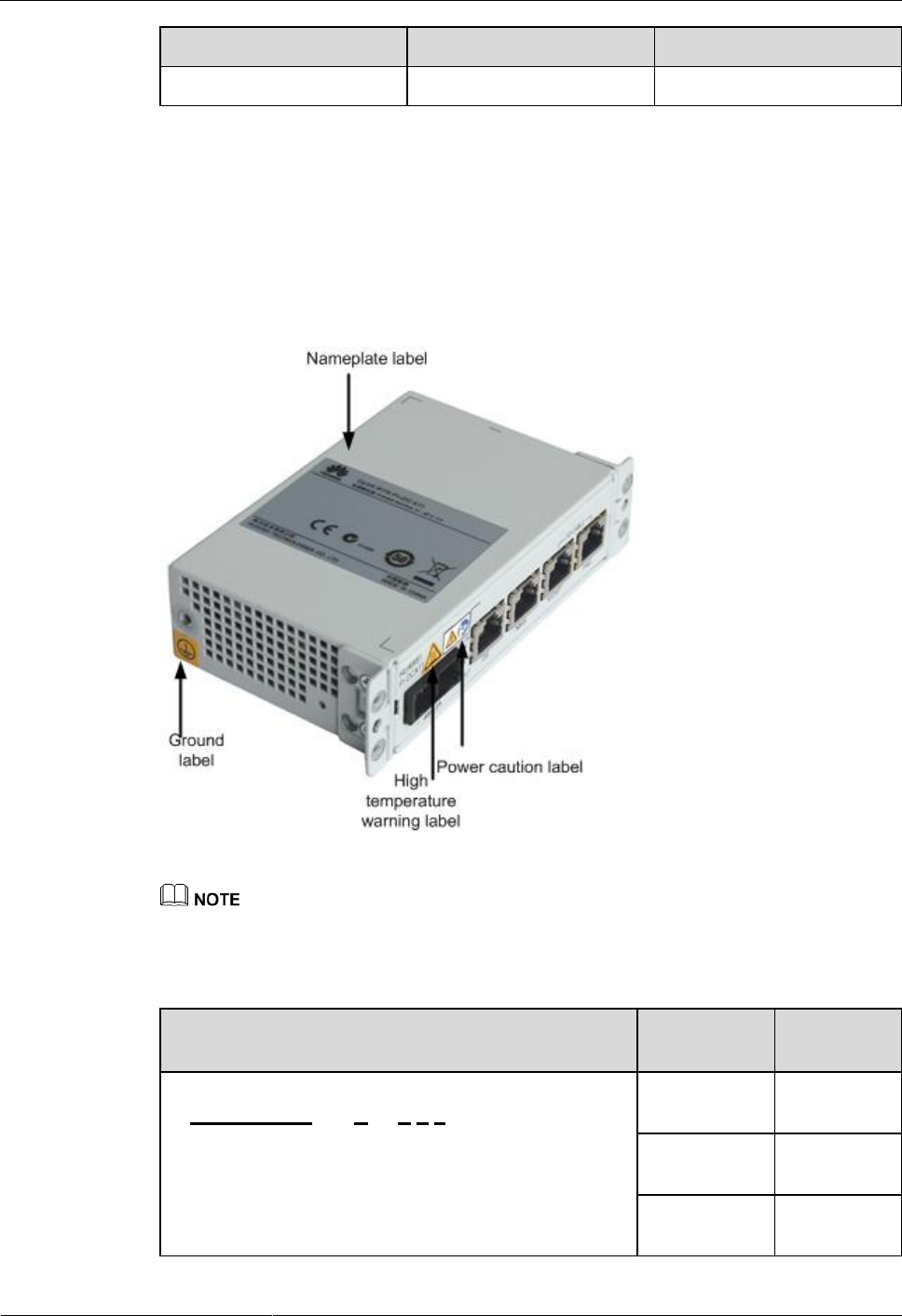
OptiX RTN 360 Radio Transmission
Product Description
6 Accessories
Issue 02 (2014-08-30)
Huawei Proprietary and Confidential
Copyright © Huawei Technologies Co., Ltd.
59
Indicator
Status
Meaning
Off
P&E is not being output.
6.1.3 PI Labels
This section lists the labels that are attached to a power injector (PI). Adhere to any warnings
or instructions on the labels when performing various tasks to avoid any personal injury or
damage to equipment.
Figure 6-6 Label positions on an indoor PI
High temperature warning label: Indicates that the equipment surface temperature may exceed 70°C
when the ambient temperature is higher than 55°C. Wear protective gloves to handle the equipment.
Table 6-8 Product nameplate label description
Example of the Label Content
Parameter
Parameter
Description
OptiX RTN PI – DC A 11
12 3 4 5
1: Product
name
-
2: Power
supply mode
DC: direct
current
3: Application
environment
A: indoor
B:

OptiX RTN 360 Radio Transmission
Product Description
6 Accessories
Issue 02 (2014-08-30)
Huawei Proprietary and Confidential
Copyright © Huawei Technologies Co., Ltd.
60
Example of the Label Content
Parameter
Parameter
Description
outdoor
4: Number of
channels
1: one
power-over-
Ethernet
channel
5: Version
number
-
电源额定值 POWER RATING :-48V; 2.2A
2.6A
-
PI power
supply rated
value
6.1.4 Technical Specifications
The technical specifications of power injectors (PIs) include electromagnetic compatibility,
anti-interference capability, safety, and environmental standards.
Power Supply
Item
Specifications
Input voltage range
-38.4 V to -57.6 V
Number of PoE outputs
One
PoE mode
Standard PSE power mode and forced
power mode
Dimensions and Weight
Item
Specifications
Dimensions (H x W x D)
36 mm x 145.6 mm x 84 mm
Weight
0.5 kg
Electromagnetic Compatibility
Passed CE authentication
Compliant with ETSI EN 301 489-1
Compliant with ETSI EN 301 489-4
Compliant with ETSI EN 300 386

OptiX RTN 360 Radio Transmission
Product Description
6 Accessories
Issue 02 (2014-08-30)
Huawei Proprietary and Confidential
Copyright © Huawei Technologies Co., Ltd.
61
Safety
Passed CE authentication
Compliant with EN60950-22
Compliant with IEC60950-22
Compliant with IEC60950-1
Compliant with EN60950-1
Environment
Table 6-9 Environment performance
Item
Specifications
Major reference standards
Operating
Compliant with EN 300
019-1-4 class 4.1
Transportation
Compliant with ETSI EN
300 019-1-2 class 2.3
Storage
Compliant with ETSI EN
300 019-1-1 class 1.2
Operating temperature
-33ºC to +55ºC
Relative humidity
5% to 100%
Earthquake resistant design
Compliant with GR3108
Zone 4 and ETSI 300
019-2-4/YD5083
6.2 Dock
Dock is a type of outdoor power sourcing equipment (PSE) with the built-in Layer 2
switching function. It often provides power to both RTN 360 and Huawei small cell base
stations.
Huawei provides various types of Docks with similar functions and working principles. The following
details Docks by taking Dock V318R001C00 working with Huawei small cell base stations as an
example.
6.2.1 Appearance, Functions, and Features
A Dock switches Ethernet services between equipment and provides power to other
equipment. It transmits DC power signals which are converted from AC power signals
together with Ethernet signals.
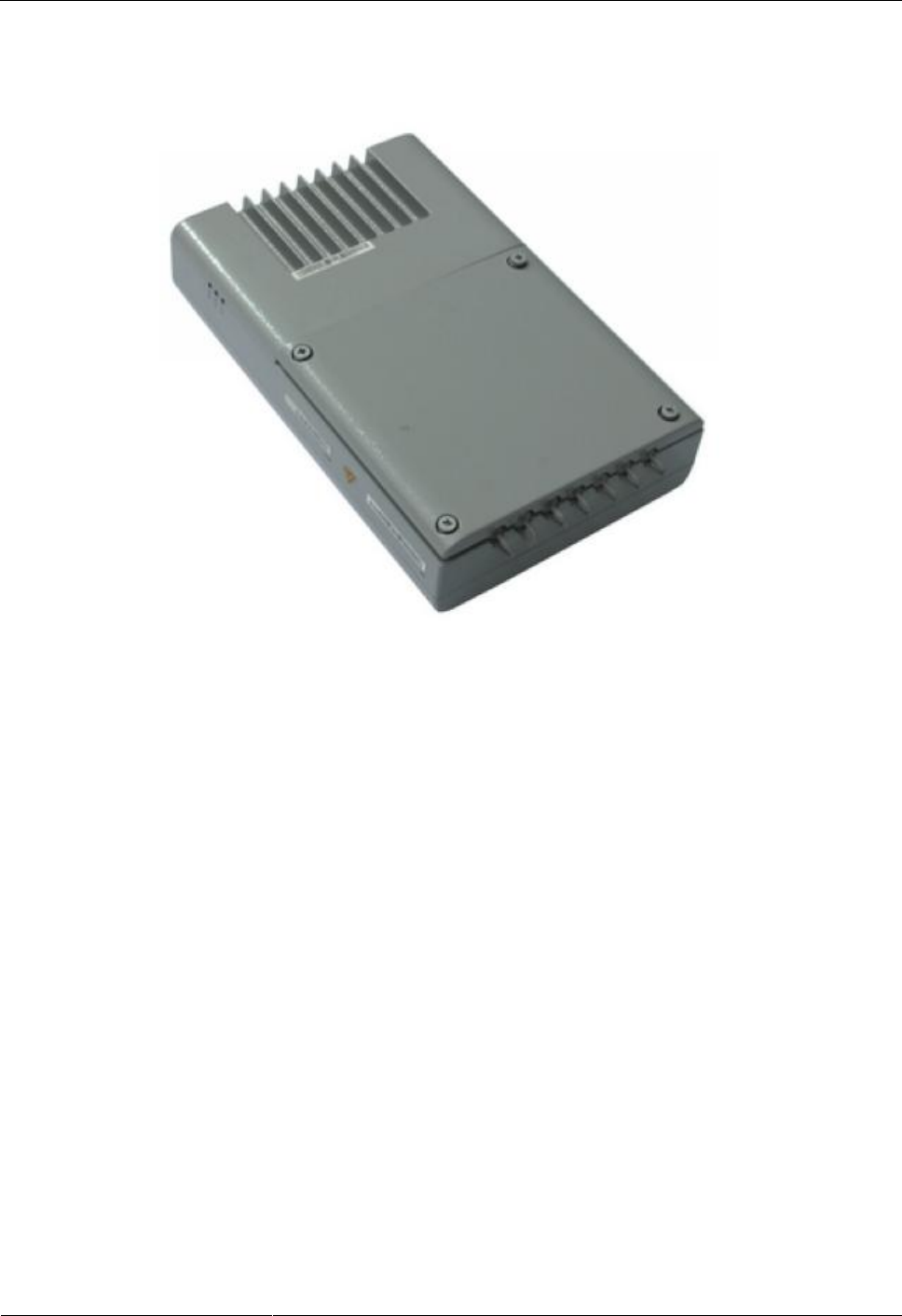
OptiX RTN 360 Radio Transmission
Product Description
6 Accessories
Issue 02 (2014-08-30)
Huawei Proprietary and Confidential
Copyright © Huawei Technologies Co., Ltd.
62
Appearance
Figure 6-7 Appearance
Features and Functions
Power supply functions
− Receives 220 V AC power and converts it to -57 V DC power.
− Outputs -57 V DC power signals coupled with Ethernet service signals through the
LAN0, LAN1, and WAN ports, implementing power over Ethernet (PoE).
− Supports the standard PSE power mode and forced power mode (PSE stands for
power sourcing equipment). By default, a Dock uses the standard PSE power mode.
Ethernet service functions
− Provides one FE/GE optical port (OPT). The port supports 100M full-duplex (FE
optical module), 1000M full-duplex (GE optical module), and autonegotiation. The
port works in autonegotiation mode by default.
− Provides three PoE ports including LAN0, LAN1, and WAN. These ports support
100M full-duplex, 1000M full-duplex, and autonegotiation. These ports work in
autonegotiation mode by default.
− Switches Ethernet service packets among four Ethernet ports based on the IEEE
802.1ad bridge.
Clock functions
− Supports synchronous Ethernet clocks.
− Supports the configuration of clock sources. By default, a Dock traces synchronous
Ethernet clocks of optical ports or WAN ports. Optical ports have a higher priority
than the WAN ports.
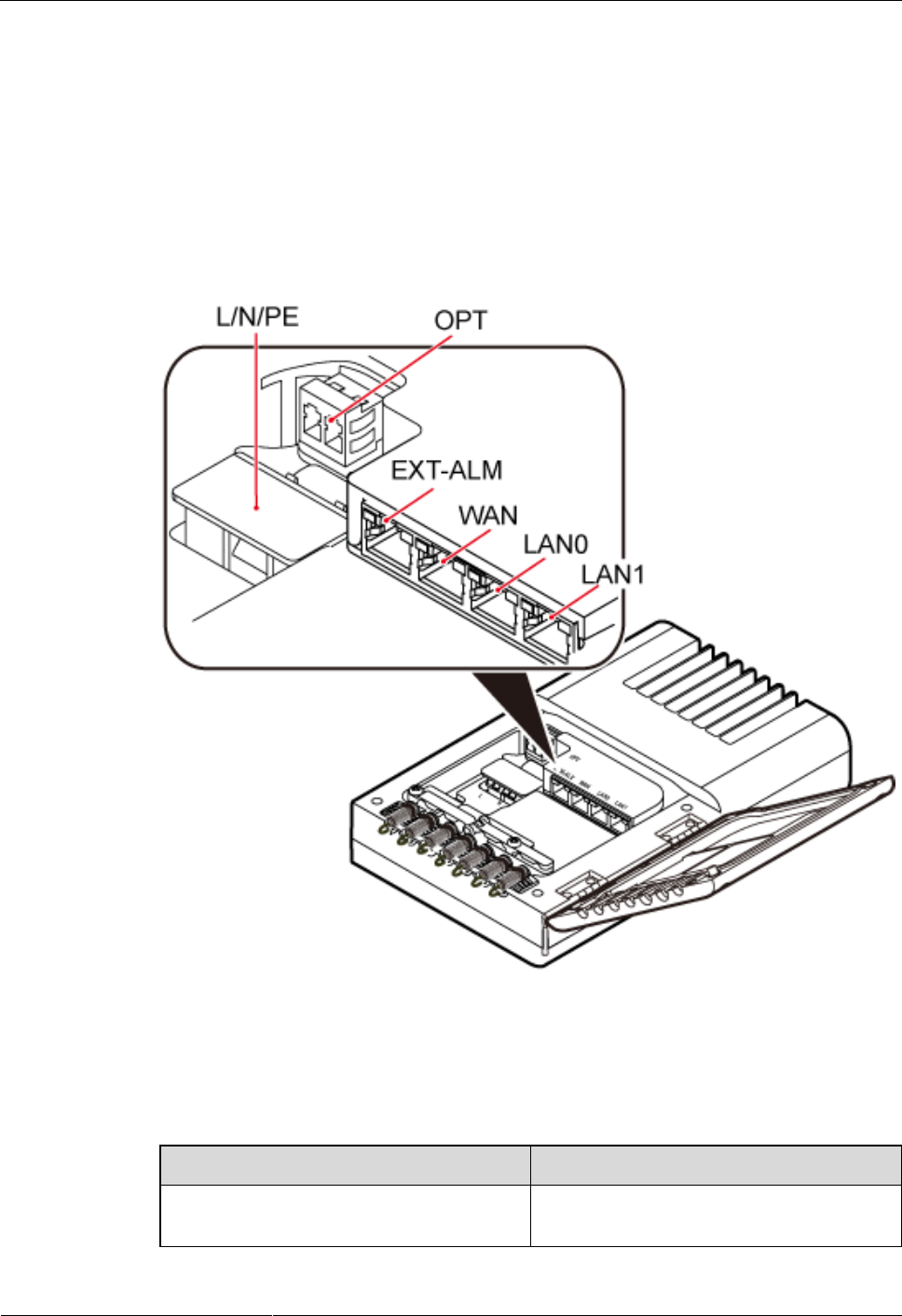
OptiX RTN 360 Radio Transmission
Product Description
6 Accessories
Issue 02 (2014-08-30)
Huawei Proprietary and Confidential
Copyright © Huawei Technologies Co., Ltd.
63
Supports configuration management, security management, and system management.
For more details, see related documents of Huawei Atomcell.
6.2.2 Ports and Indicators
Ports are inside a Dock, and indicators are outside a Dock.
Ports
Figure 6-8 Ports
The following describes ports of a Dock.
Table 6-10 Ports
Port
Description
OPT
FE/GE optical port that connects to external
transmission equipment
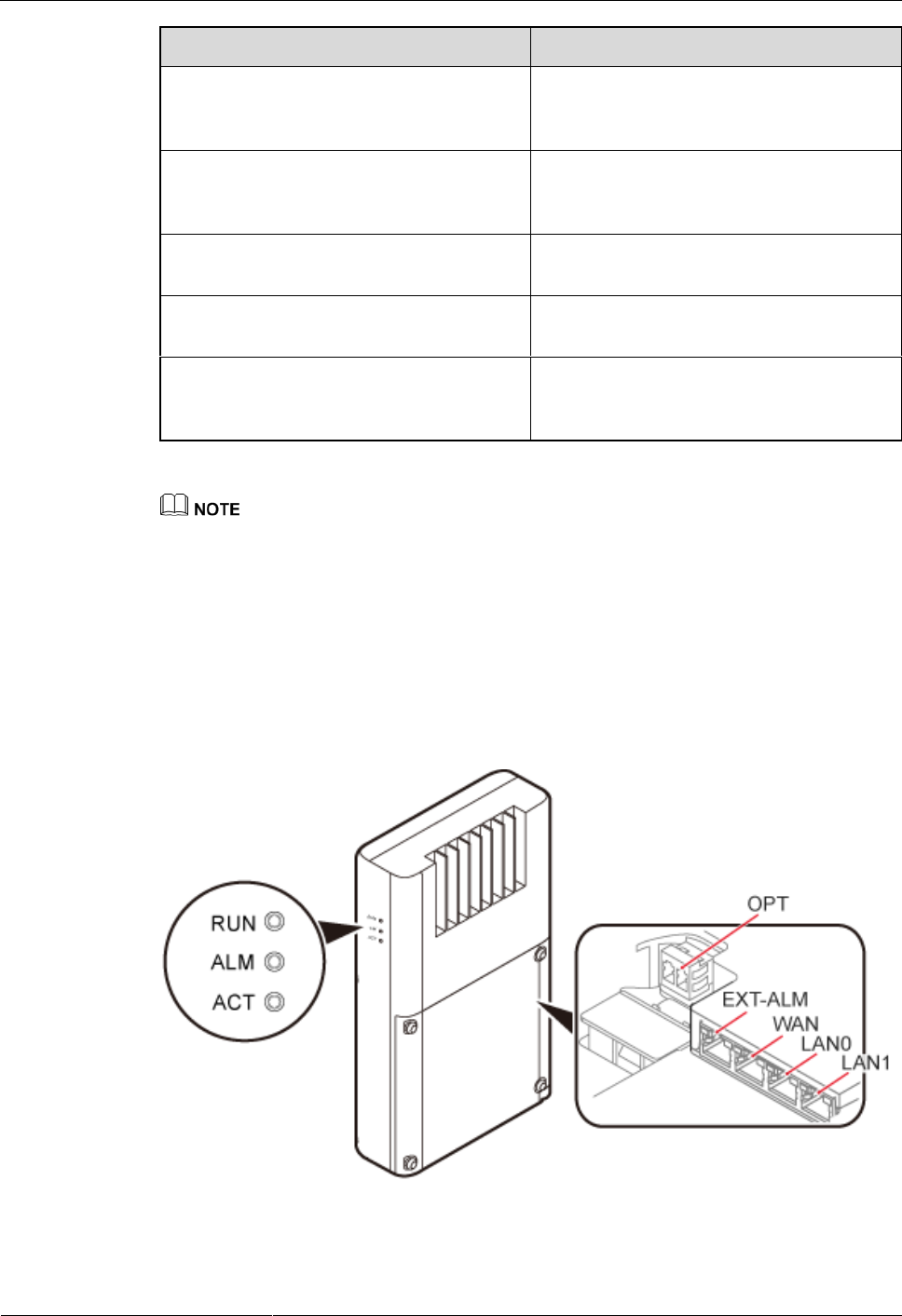
OptiX RTN 360 Radio Transmission
Product Description
6 Accessories
Issue 02 (2014-08-30)
Huawei Proprietary and Confidential
Copyright © Huawei Technologies Co., Ltd.
64
Port
Description
L/N/PE
Port that connects to external power
equipment through a live wire, neutral wire,
or PE cable
EXT-ALM
Environment monitoring port that provides
four-line dry contacts to connect external
devices and monitor alarms
WAN
PoE port that connects to external
transmission equipment
LAN0
PoE port that connects to a small cell base
station
LAN1
PoE port that connects to commissioning
equipment or lower-level cascade
equipment
WAN and LAN1 ports can provide power to standard PoE equipment.
Indicators
A Dock has three external indicators RUN, ALM, and ACT to indicate the equipment running
status. Each internal RJ45 connector has two indicators for indicating the connection status
and data transmission status. The connector of the OPT port has one indicator for indicating
both the connection status and data transmission status.
Figure 6-9 Indicators of a Dock

OptiX RTN 360 Radio Transmission
Product Description
6 Accessories
Issue 02 (2014-08-30)
Huawei Proprietary and Confidential
Copyright © Huawei Technologies Co., Ltd.
65
The following table describes indicators of a Dock.
Table 6-11 External indicators
Indicator
Meaning
Status
Description
RUN
Running status
Steady green
Power supply is
available, but the
Dock is faulty or has
just been powered
on.
Off
No power supply is
available, or the
Dock is faulty.
Blinks green (on for
1s and off for 1s)
The Dock is running
properly.
Blinks green (on for
0.125s and off for
0.125s)
Software is being
loaded to the Dock,
or the Dock is not
started.
ALM
Alarm status
Steady red
An alarm is
generated, and the
Dock must be
replaced. Or, the
Dock has just been
powered on.
Blinks red
An alarm is
generated. The
alarm is caused by a
fault on the Dock.
Off
No alarm
ACT
Service status
Steady green
The Dock is
receiving or
transmitting data.
Off
The Dock is not
receiving or
transmitting data, or
has just been
powered on.
Table 6-12 Internal indicators
Indicator
Meaning
Status
Description
EXTALM/WAN/L
AN0/LAN1
Green indicator:
connection status
Steady green
The port is
connected correctly.
Off
No connection is set

OptiX RTN 360 Radio Transmission
Product Description
6 Accessories
Issue 02 (2014-08-30)
Huawei Proprietary and Confidential
Copyright © Huawei Technologies Co., Ltd.
66
Indicator
Meaning
Status
Description
up on the port.
Orange indicator:
data transmission
Blinks orange
The port is receiving
or transmitting data.
Off
The port is not
receiving or
transmitting data.
OPT
Optical port status
Steady green
The port connection
status is normal, and
the port is not
receiving or
transmitting data.
Blinks green
The port is receiving
or transmitting data.
Off
No connection is set
up on the port.
6.2.3 Technical Specifications
The technical specifications of Docks include dimensions and weight, power supplies, and
power consumption.
Dimensions and Weight
Item
Specifications
Dimensions (H x W x D)
52 mm x 160 mm x 250 mm
Weight
2.8 kg
Power Supply
Item
Specifications
Input voltage range
90 V AC to 290 V AC, frequency being 45
Hz to 65 Hz
Output PoE voltage
-57 V DC
Number of PoE outputs
Three
Output power of PoE ports
Output power of the LAN0 port: 150 W
Total output power of WAN and LAN1
ports: 60 W

OptiX RTN 360 Radio Transmission
Product Description
6 Accessories
Issue 02 (2014-08-30)
Huawei Proprietary and Confidential
Copyright © Huawei Technologies Co., Ltd.
67
Power Consumption
Power consumption ≤ 35 W
6.3 USB Flash Drives
Configuring, replacing, and upgrading RTN 360s is simple with USB flash drives, which store
NE data and new software to be installed and are also used to back up configuration data.
Functions and Features
USB flash drives prepared for RTN 360s store NE software and configuration data (including
databases, system parameters, and scripts).
Equipment software and scripts stored in USB flash drives are installed on RTN 360s for
deployment and commissioning. With this system, users do not need to configure data
onsite.
Software, patch packages, NE databases, and system parameters are backed up to USB
flash drives. This avoids the need to reconfigure data when replacing a RTN 360.
Software of target versions stored in USB flash drives are imported to RTN 360s.
Application Scenario
For deployment and commissioning of an RTN 360, scripts, and software are stored on a
USB flash drive. After the USB flash drive is plugged in and functioning, the RTN 360
downloads software, and scripts in sequence.
For an upgrade or downgrade of an RTN 360, only the software of the target version is
stored on a USB flash drive. After the USB flash drive is plugged in and functioning, the
RTN 360 compares the versions of the running software and the software stored on the
USB flash drive. If the versions are not the same, the RTN 360 automatically downloads
the software from the USB flash drive for an upgrade or downgrade.
During RTN 360 replacement, an empty USB flash drive is inserted into a faulty device,
which automatically backs up its data to the drive. After the faulty device is replaced, the
drive holding the backup data is inserted into the new device, which automatically
downloads the backed up NE data, software, and system parameters and restores the NE
data.
Data uploading
A USB flash drive contains the following folders:
The USB flash drive partition format is FAT32.
The root directory stores a RTN.CER file.
The RTN.CER file, which stores administrator-level account and password information (with password
information encrypted), is used for authenticating the USB flash drive. The file is generated by a system
administrator at the network management center (NMC) using a dedicated tool.
pkg: stores the NE software.

OptiX RTN 360 Radio Transmission
Product Description
6 Accessories
Issue 02 (2014-08-30)
Huawei Proprietary and Confidential
Copyright © Huawei Technologies Co., Ltd.
68
Data is saved in the \pkg folder only when the NE software is upgraded. Otherwise, keep the
folder empty.
patch: stores the patch software.
sysdata: stores system parameters.
script: stores scripts.
db: stores NE databases.
license: stores a license.
The license directory cannot be backed up or restored. It is usually empty.
devicetype: stores device type parameters.
When a USB flash drive is connected to an RTN 360, the RTN 360 checks the folders on the
USB flash drive in the following order:
1. Checks for the RTN.CER file in the root directory. If the file exists, the USB flash drive
is authenticated. Otherwise, the USB flash drive fails to be identified.
2. Checks the NE software folder pkg. If the NE software version is different from that of
the local RTN 360, the RTN 360 upgrades its software.
3. Checks the patch software folder patch. If the patch software version is different from
that of the local RTN 360, the RTN 360 loads the patch software from the folder.
4. Checks the system parameter folder sysdata. If the folder contains data, the RTN 360
imports system parameters from the folder.
5. Checks the script folder script. If the folder contains data, the RTN 360 imports script
data from the folder.
6. Checks the database folder db. If the folder contains data and the device type under
\Devicetype is the same as the NE device type, the RTN 360 loads the database from the
folder.
7. If any of the preceding folders contains no data or does not exist, the RTN 360 checks
the next folder. If the RTN 360 finds none of the preceding folders, it exports its data to
the USB flash drive.
Ensure that USB flash drives have only the preceding folders, as extra folders may lead to
malfunctions.
A device reads data from a USB flash drive at different rates in different scenarios. The user can check
whether the device is reading data from a USB flash drive by observing the USB port or USB flash drive
indicator.
Types of USB Flash Drives
Table 6-13 lists the types of USB flash drives supported by RTN 360. Not all USB flash
drives are supported by RTN 360. If a USB flash drive of another model or capacity is
required, confirm with the local Huawei office that the USB flash drive is supported by RTN
360.
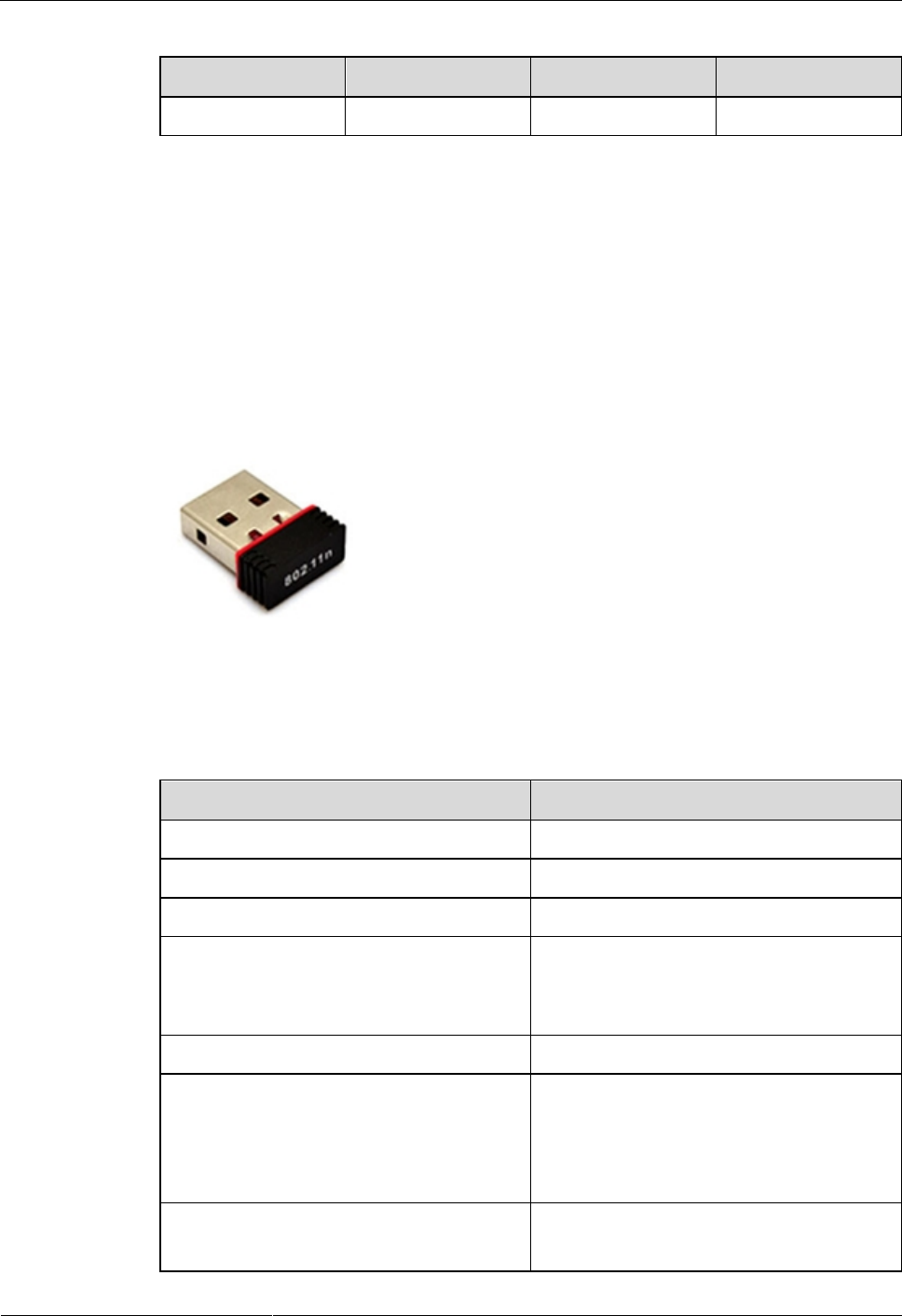
OptiX RTN 360 Radio Transmission
Product Description
6 Accessories
Issue 02 (2014-08-30)
Huawei Proprietary and Confidential
Copyright © Huawei Technologies Co., Ltd.
69
Table 6-13 Types of USB flash drives
No.
Manufacturer
Model
Capacity
1
Netac
U208
4 GB
6.4 Wi-Fi Module
A Wi-Fi module for an RTN 360 enables the Mobile LCT or Web LCT to connect to the RTN
360 using Wi-Fi, implementing contact-free configuration and maintenance.
Appearance
Figure 6-10 Wi-Fi module
Specifications
Table 6-14 Wi-Fi module specifications
Item
Specifications
Port
USB2.0 high-speed connector
Dimensions (H x W x D)
20 mm x 14 mm x 6 mm
Wireless mode
Compatible with IEEE 802.11b/g/n
Maximum wireless rate
IEEE 802.11n: 150 Mbit/s
IEEE 802.11g: 54 Mbit/s
IEEE 802.11b: 11 Mbit/s
Frequency range
2.4 GHz to 2.4835 GHz
Wireless transmit power
Maximum power: 20 dBm
IEEE 802.11b: 18±1 dBm
IEEE 802.11g: 15±1 dBm
IEEE 802.11n: 12±1 dBm
Receiver sensitivity
130 Mbit/s: -68 dBm@10% PER
108 Mbit/s: -68 dBm@10% PER

OptiX RTN 360 Radio Transmission
Product Description
6 Accessories
Issue 02 (2014-08-30)
Huawei Proprietary and Confidential
Copyright © Huawei Technologies Co., Ltd.
70
Item
Specifications
54 Mbit/s: -68 dBm@10% PER
11 Mbit/s: -85 dBm@8% PER
6 Mbit/s: -88 dBm@10% PER
1 Mbit/s: -90 dBm@8% PER
Wi-Fi encryption mode
WPA2-PSK
Setting of the service set identifier (SSID)
Supported
Setting whether to enable Wi-Fi
Supported
Setting of Wi-Fi passwords
Supported
Maximum transmission distance
30 m (laptop/mobile phone)
70 m (laptop + external Wi-Fi network
adapter)
NOTE
30 m is obtained based on tests in which a laptop
(such as Lenovo Thinkpad X230) or mobile
phone (such as Huawei 8815) is used and there is
no obstacle between the laptop/mobile phone and
NE. The actual transmission distance may vary
according to performance of the laptop or mobile
phone used.
70 m is obtained based on tests in which a laptop
works with an external Wi-Fi network adapter
(such as Tenda W311U+) and there is no obstacle
between the laptop and NE. It is recommended
that an external Wi-Fi network adapter with 18
dBm transmit power, -86 dBm receiver
sensitivity, and an antenna of more than 4.2 dBi
gain be used or an external Wi-Fi network
adapter with better performance be used.

OptiX RTN 360 Radio Transmission
Product Description
7 Cables
Issue 02 (2014-08-30)
Huawei Proprietary and Confidential
Copyright © Huawei Technologies Co., Ltd.
71
7 Cables
About This Chapter
This chapter describes the purpose, physical appearance, and connections of various cables
used with OptiX RTN 360s.
7.1 Outdoor Network Cables
Fitted with RJ45 connectors at both ends, outdoor network cables connect Ethernet ports.
7.2 RSSI Cables
Received signal strength indicator (RSSI) cables connect RSSI ports of RTN 360s to
multimeters.
7.3 Power Cables
Power cables connect PIs to power supply devices and supply them with -48 V power.
7.4 RTN 360 PGND Cables
PGND cables are connected to ground screws and outdoor ground points (such as ground
points on towers) so that RTN 360 is connected to the outdoor ground grid.
7.5 PI PGND Cables
Power injector (PI) PGND cables connect the ground points on the left of indoor PIs to
external equipment's ground points (for example, cabinets' ground columns), so indoor PIs
and external equipment share the same ground.
7.1 Outdoor Network Cables
Fitted with RJ45 connectors at both ends, outdoor network cables connect Ethernet ports.
The GE electrical ports of PIs support the medium dependent interface (MDI), MDI crossover
(MDI-X), and auto-MDI/MDI-X modes. Straight-through cables and crossover cables can be
used to connect the NMS ports and GE electrical ports to MDIs or MDI-Xs. Straight-through
cables are recommended if network cables are made onsite.

OptiX RTN 360 Radio Transmission
Product Description
7 Cables
Issue 02 (2014-08-30)
Huawei Proprietary and Confidential
Copyright © Huawei Technologies Co., Ltd.
72
Cable Diagram
Figure 7-1 Network cable
Pin Assignments
Table 7-1 Pin assignments for straight-through cables
Connector X1
Connector X2
Color
Relationship
X1.1
X2.1
White/Orange
Twisted pair
X1.2
X2.2
Orange
X1.3
X2.3
White/Green
Twisted pair
X1.6
X2.6
Green
X1.4
X2.4
Blue
Twisted pair
X1.5
X2.5
White/Blue
X1.7
X2.7
White/Brown
Twisted pair
X1.8
X2.8
Brown
Braided shield
Table 7-2 Pin assignments for crossover cables
Connector X1
Connector X2
Color
Relationship
X1.1
X2.3
White/Green
Twisted pair
X1.2
X2.6
Green
X1.3
X2.1
White/Orange
Twisted pair
X1.6
X2.2
Orange
X1.4
X2.4
Blue
Twisted pair
X1.5
X2.5
White/Blue
X1.7
X2.7
White/Brown
Twisted pair
X1.8
X2.8
Brown
Braided shield
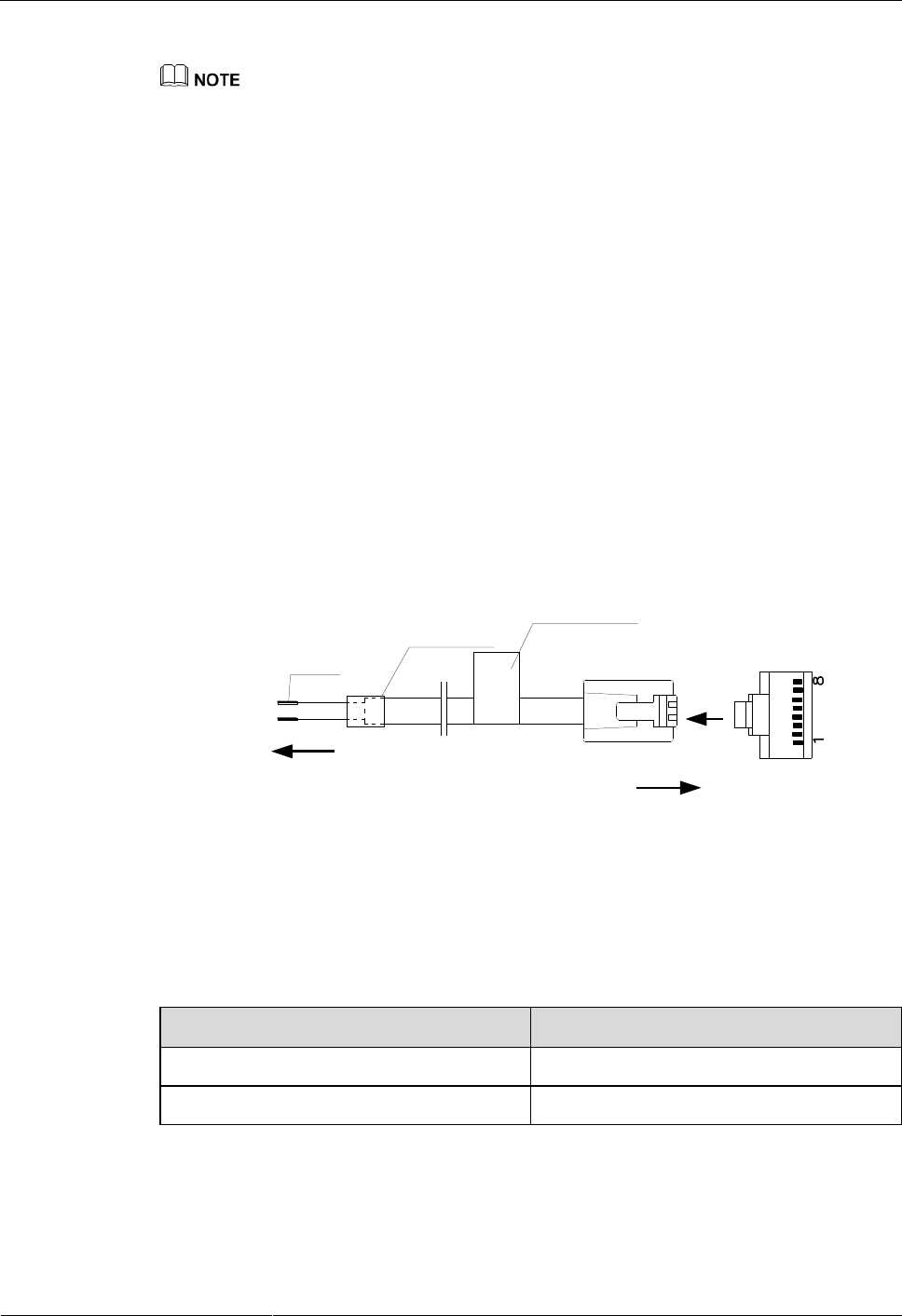
OptiX RTN 360 Radio Transmission
Product Description
7 Cables
Issue 02 (2014-08-30)
Huawei Proprietary and Confidential
Copyright © Huawei Technologies Co., Ltd.
73
Straight-through cables are used between MDIs and MDI-Xs, and crossover cables are used between
MDIs or between MDI-Xs. The only difference between straight-through cables and crossover
cables is with regard to their pin assignments.
Either straight-through cables or crossover cables can be used to connect RTN 360 to common
Ethernet equipment since Ethernet electrical ports support the MDI, MDI-X, and auto-MDI/MDI-X
modes. If RTN 360 connects to power sourcing equipment (PSE) through a P&E port, pin
assignments for power signals output from the PSE determines whether to use straight-through
cables or crossover cables.
A network cable transmits power signals and Ethernet signals simultaneously. Therefore, the
impedance difference between cores of a network cable must be less than 5%; otherwise, Ethernet
service packets may be lost.
7.2 RSSI Cables
Received signal strength indicator (RSSI) cables connect RSSI ports of RTN 360s to
multimeters.
Cable Diagram
Figure 7-2 RSSI cable
Connected to
a multimeter
testing RSSI Connected to the RSSI
port
Tin
H.S. tube
Main label
View A
WA
Pin Assignments
An RSSI cable uses two cores to detect level signals.
Table 7-3 Pin assignments for RSSI cables
Pin
Signal
4
Ground signal
7
RSSI test level signal
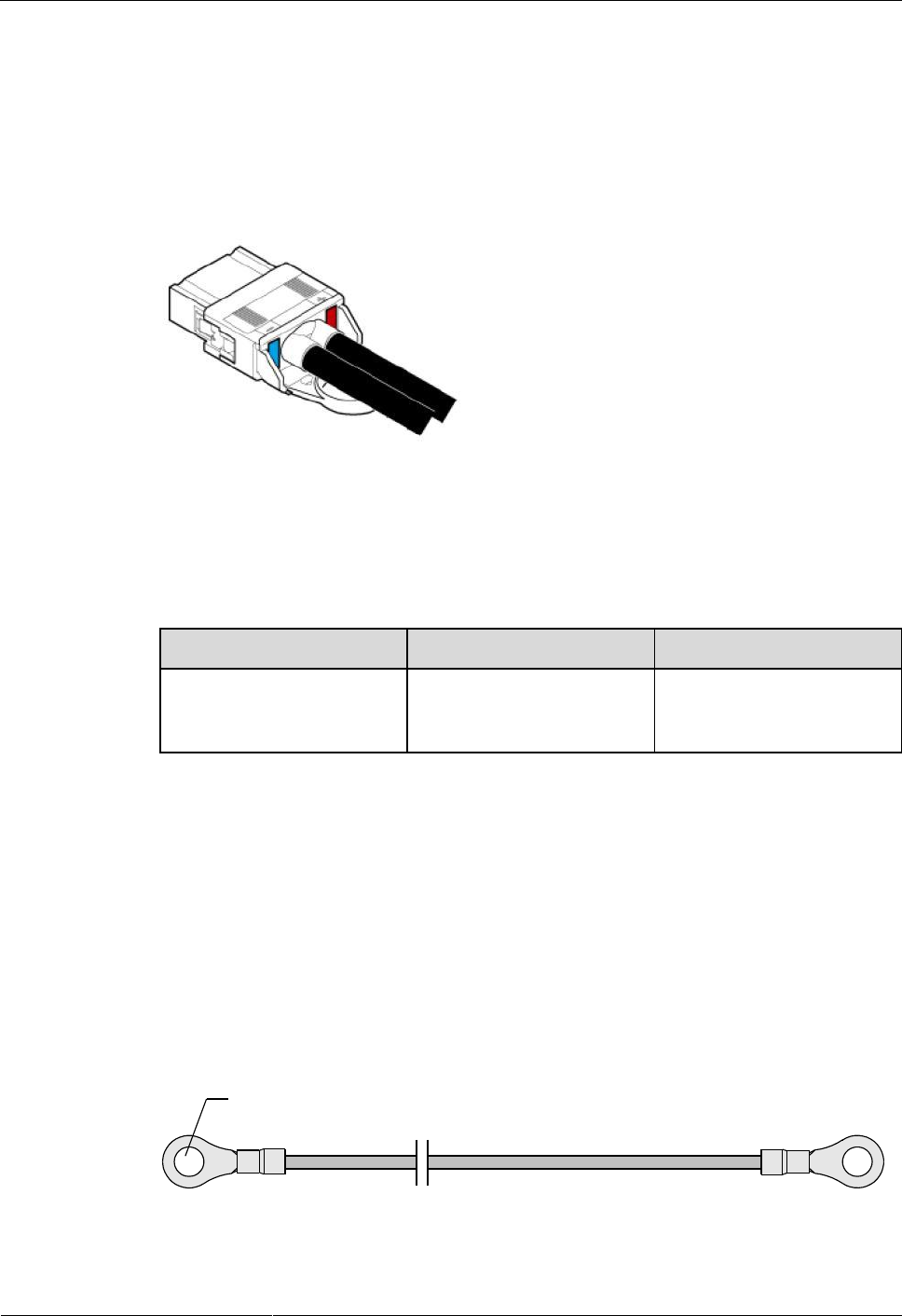
OptiX RTN 360 Radio Transmission
Product Description
7 Cables
Issue 02 (2014-08-30)
Huawei Proprietary and Confidential
Copyright © Huawei Technologies Co., Ltd.
74
7.3 Power Cables
Power cables connect PIs to power supply devices and supply them with -48 V power.
Cable Diagram
Figure 7-3 PI power cable
Cable Parameters
Table 7-4 Cable parameters
Cable
Cable Parameter
Terminal Parameter
Indoor-PI power cable
Power cable, 600 V,
UL3386, 1.5 mm2, 16
AWG, blue/black, XLPE
Common connector, 2-pin,
single row, 5.08 mm (pitch)
7.4 RTN 360 PGND Cables
PGND cables are connected to ground screws and outdoor ground points (such as ground
points on towers) so that RTN 360 is connected to the outdoor ground grid.
Cable Diagram
Figure 7-4 RTN 360 PGND cable
1
1. Bare crimp terminal, OT

OptiX RTN 360 Radio Transmission
Product Description
7 Cables
Issue 02 (2014-08-30)
Huawei Proprietary and Confidential
Copyright © Huawei Technologies Co., Ltd.
75
7.5 PI PGND Cables
Power injector (PI) PGND cables connect the ground points on the left of indoor PIs to
external equipment's ground points (for example, cabinets' ground columns), so indoor PIs
and external equipment share the same ground.
Cable Diagram
Figure 7-5 Indoor-PI PGND cable
Main label
1
1. Bare crimp terminal, OT

OptiX RTN 360 Radio Transmission
Product Description
A Appendix
Issue 02 (2014-08-30)
Huawei Proprietary and Confidential
Copyright © Huawei Technologies Co., Ltd.
76
A Appendix
A.1 Port Loopbacks
The loopback capabilities of ports on RTN 360 differ based on the port type.
A.2 Component Photos
This section provides photos of major components of an RTN 360.
A.3 Compliance Standards
A.1 Port Loopbacks
The loopback capabilities of ports on RTN 360 differ based on the port type.
Table A-1 Port loopbacks
Port Type
Loopback Capability
Microwave port
Inloops at the IF port
Inloops at the composite port
GE port
Inloops at the MAC layer
Inloops at the PHY layer
A.2 Component Photos
This section provides photos of major components of an RTN 360.
RTN 360
Figure A-1 Front view
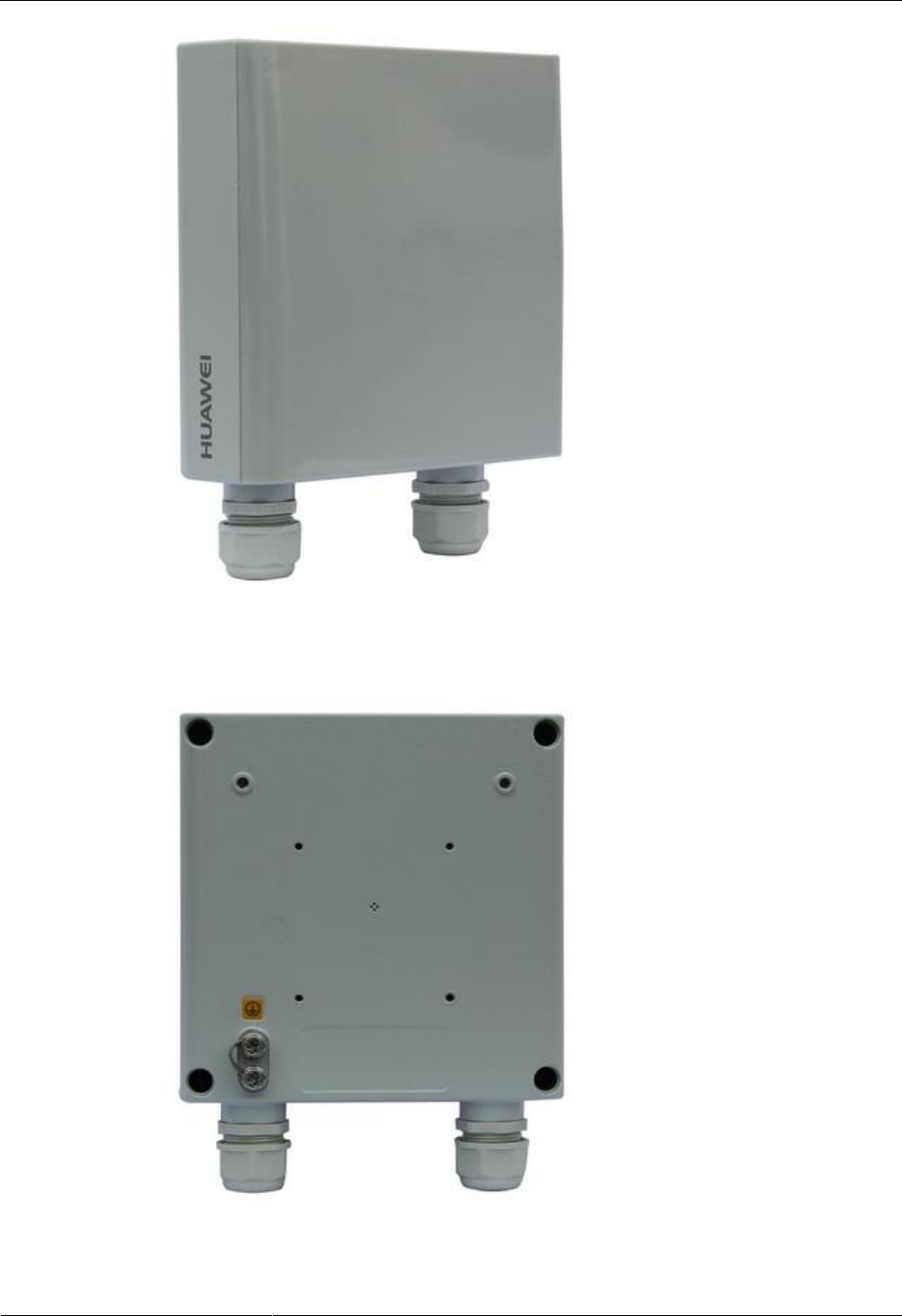
OptiX RTN 360 Radio Transmission
Product Description
A Appendix
Issue 02 (2014-08-30)
Huawei Proprietary and Confidential
Copyright © Huawei Technologies Co., Ltd.
77
Figure A-2 Rear view
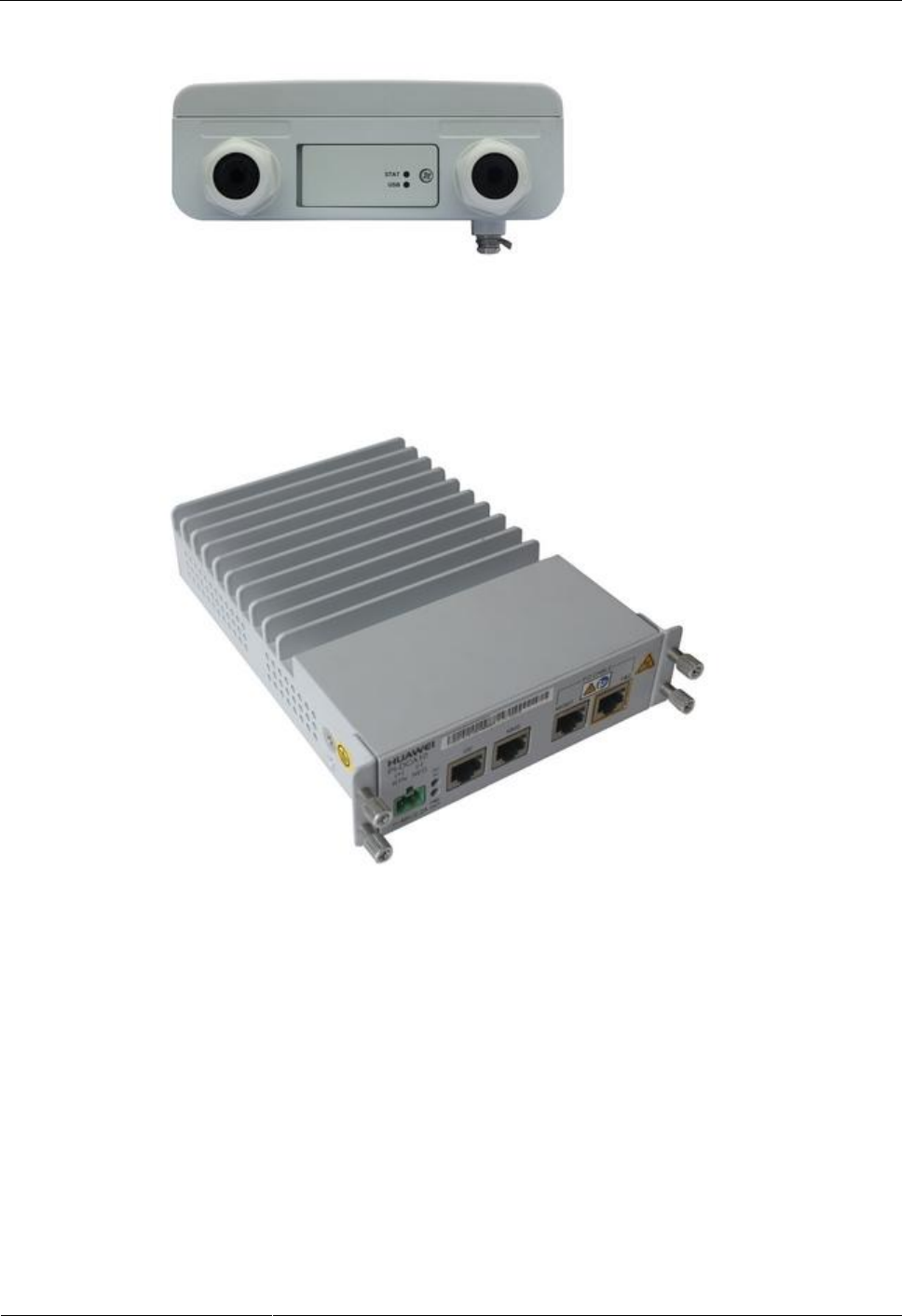
OptiX RTN 360 Radio Transmission
Product Description
A Appendix
Issue 02 (2014-08-30)
Huawei Proprietary and Confidential
Copyright © Huawei Technologies Co., Ltd.
78
Figure A-3 Ports
PI
Figure A-4 OptiX RTN PI-DC A10
Figure A-5 OptiX RTN PI-DC B10
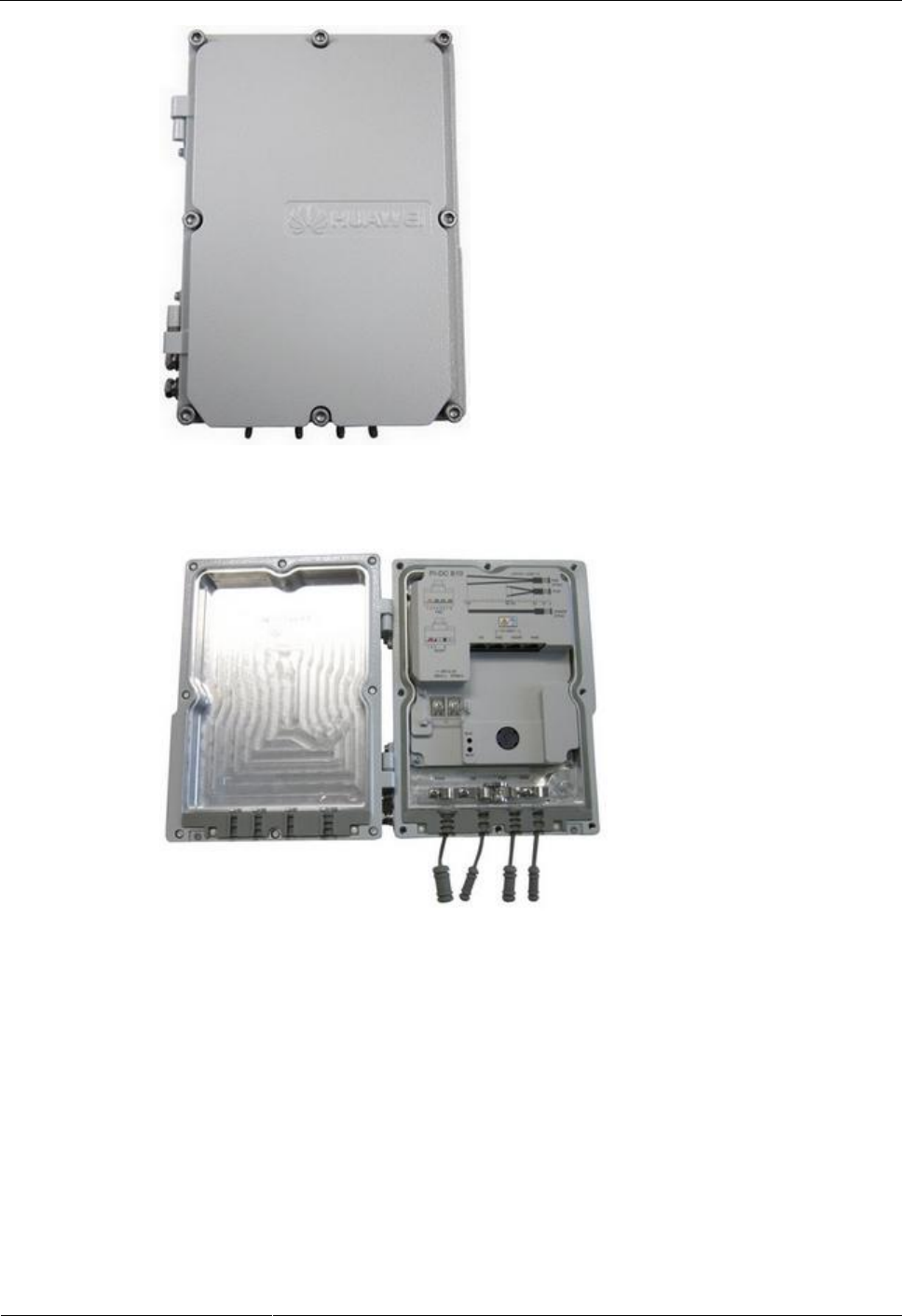
OptiX RTN 360 Radio Transmission
Product Description
A Appendix
Issue 02 (2014-08-30)
Huawei Proprietary and Confidential
Copyright © Huawei Technologies Co., Ltd.
79
Figure A-6 OptiX RTN PI-DC B10 (interior)
Figure A-7 OptiX RTN PI-DC A11
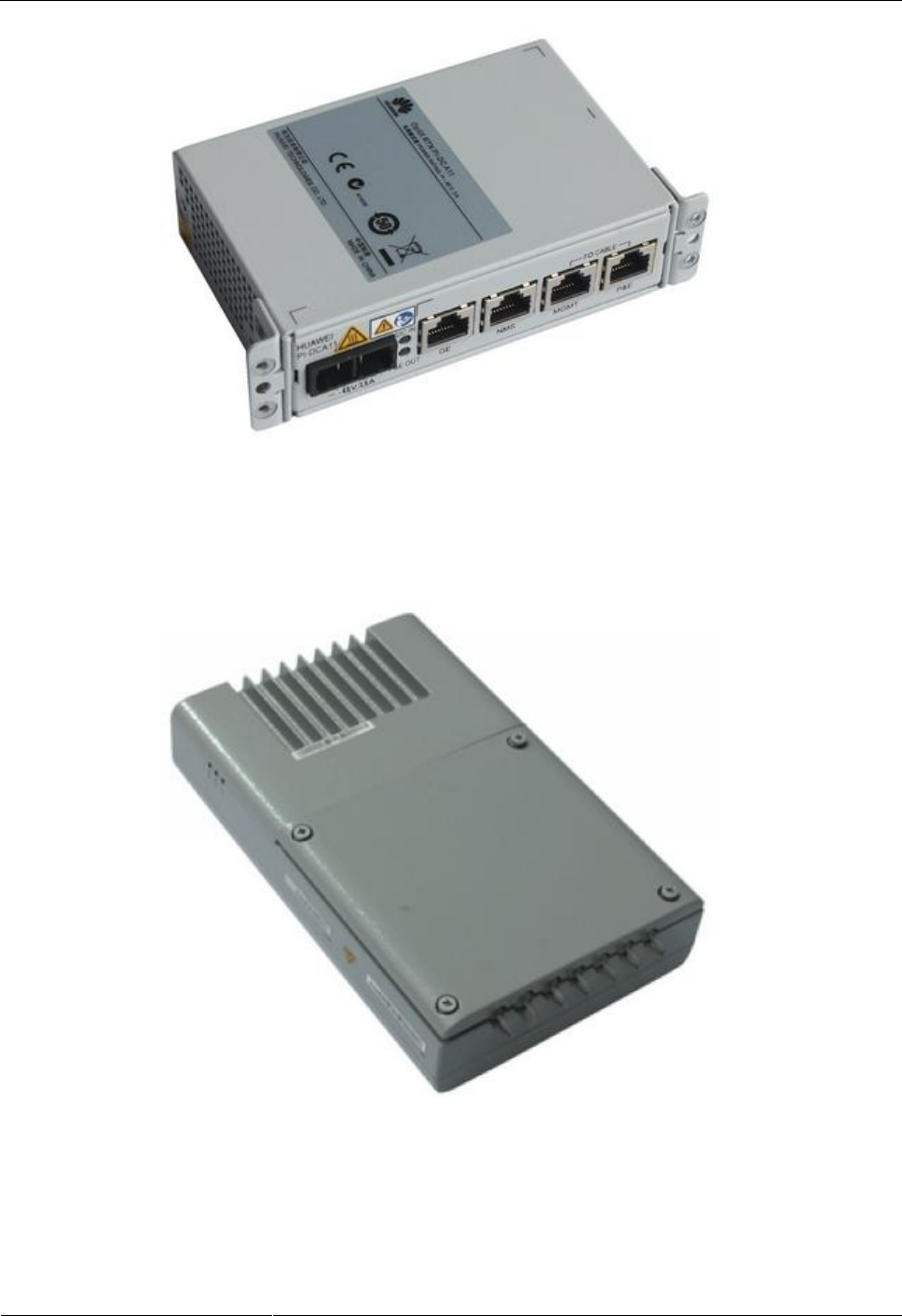
OptiX RTN 360 Radio Transmission
Product Description
A Appendix
Issue 02 (2014-08-30)
Huawei Proprietary and Confidential
Copyright © Huawei Technologies Co., Ltd.
80
Dock
Figure A-8 Dock

OptiX RTN 360 Radio Transmission
Product Description
A Appendix
Issue 02 (2014-08-30)
Huawei Proprietary and Confidential
Copyright © Huawei Technologies Co., Ltd.
81
A.3 Compliance Standards
A.3.1 ITU-R Standards
OptiX RTN 360 complies with the ITU-R standards designed for radio equipment.
Table A-2 ITU-R standard
Standard
Description
ITU-R F.1093
Effects of multipath propagation on the design and operation of
line-of-sight digital fixed wireless systems
ITU-R F.1094
Maximum allowable error performance and availability
degradations to digital fixed wireless systems arising from radio
interference from emissions and radiations from other sources
ITU-R F.1102
Characteristics of fixed wireless systems operating in frequency
bands above about 17 GHz
ITU-R F.1191
Bandwidths and unwanted emissions of digital fixed service
systems
ITU-R F.1565
Performance degradation due to interference from other services
sharing the same frequency bands on a co-primary basis with real
digital fixed wireless systems used in the international and national
portions of a 27 500 km hypothetical reference path at or above the
primary rate
ITU-R F.1605
Error performance and availability estimation for synchronous
digital hierarchy terrestrial fixed wireless systems
ITU-R F.1668
Error performance objectives for real digital fixed wireless links
used in 27 500 km hypothetical reference paths and connections
ITU-R F.1703
Availability objectives for real digital fixed wireless links used in
27 500 km hypothetical reference paths and connections
ITU-R F.592
Vocabulary of terms for the fixed service
ITU-R F.746
Radio-frequency arrangements for fixed service systems
ITU-R F.752
Diversity techniques for point-to-point fixed wireless systems
ITU-R F.758
Considerations in the development of criteria for sharing between
the terrestrial fixed service and other services
ITU-R SM.329
Unwanted emissions in the spurious domain
ITU-R P.525
Calculation of free-space attenuation
ITU-R P.530
Propagation data and prediction methods required for the design of
terrestrial line-of-sight systems
ITU-R P.676
Attenuation by atmospheric gases
ITU-R P.837
Characteristics of precipitation for propagation modelling
ITU-R P.838
Specific attenuation model for rain for use in prediction methods

OptiX RTN 360 Radio Transmission
Product Description
A Appendix
Issue 02 (2014-08-30)
Huawei Proprietary and Confidential
Copyright © Huawei Technologies Co., Ltd.
82
Standard
Description
ITU-R P.836
Information on water vapour density
ITU-R F.2107
characteristics and applications of fixed wireless systems operating
in frequency ranges between 57 GHz and 134 GHz
ITU-R SM.328
Spectra and bandwidth of emissions
ITU-R SM.1045
Frequency tolerance of transmitters
ITU-R SM.1539-1
Variation of the boundary between the out-of-band and spurious
domains required for the application of Recommendations ITU-R
SM.1541 and ITU-R SM.329
ITU-R SM.1541
Unwanted emissions in the out-of-band domain
ITU-R F.1519
Guidance on frequency arrangements based on frequency blocks for
systems in the fixed service
A.3.2 ITU-T Standards
OptiX RTN 360 complies with the ITU-T standards.
Table A-3 ITU-T standard
Standard
Description
ITU-T G.8011
Ethernet over Transport - Ethernet services
framework
ITU-T G.8011.1
Ethernet private line service
ITU-T G.8011.2
Ethernet virtual private line service
ITU-T G.8261
Timing and synchronization aspects in
packet networks
ITU-T G.8262
Timing characteristics of synchronous
ethernet equipment slave clock (EEC)
ITU-T G.8264
Timing distribution through packet
networks
ITU-T G.8032
Ethernet ring protection switching
ITU-T G.8012
Ethernet UNI and Ethernet over transport
NNI
ITU-T Y.1730
Requirements for OAM functions in
Ethernet based networks and Ethernet
services
ITU-T Y.1731
OAM functions and mechanisms for
Ethernet based networks
ITU-T G.8031
Ethernet protection switching

OptiX RTN 360 Radio Transmission
Product Description
A Appendix
Issue 02 (2014-08-30)
Huawei Proprietary and Confidential
Copyright © Huawei Technologies Co., Ltd.
83
Standard
Description
ITU-T G.8010
Architecture of Ethernet layer networks
ITU-T G.8021
Characteristics of Ethernet transport
network equipment functional blocks
ITU-T Y.1291
An architectural framework for support of
quality of service (QoS) in packet networks
ITU-T K.20
Resistibility of telecommunication
equipment installed in a telecommunications
centre to overvoltages and overcurrents
ITU-T K.21
Resistibility of telecommunication
equipment installed in customer premises to
overvoltages and overcurrents
ITU-T K.27
Bonding configurations and earthing inside
a telecommunication building
ITU-T K.41
Resistibility of internal interfaces of
telecommunication centres to surge
overvoltages
ITU-T K.45
Resistibility of telecommunication
equipment installed in the access and trunk
networks to overvoltages and overcurrents
A.3.3 ETSI Standards
OptiX RTN 360 complies with the ETSI standards designed for radio equipment.
Table A-4 ETSI standard
Standard
Description
ETSI EN 301 489-1
Electromagnetic compatibility and Radio spectrum Matters(ERM);
Electromagnetic Compatibility(EMC) standard for radio equipment
and services; Part 1: Common technical requirements
ETSI EN 301 489-4
Electromagnetic compatibility and Radio spectrum Matters(ERM);
Electromagnetic Compatibility(EMC) standard for radio equipment
and services; Part 4: Specific conditions for fixed radio links and
ancillary equipment and services
ETSI EN 301 390
Fixed Radio Systems; Point-to-point and Multipoint Systems;
Spurious emissions and receiver immunity limits at
equipment/antenna port of Digital Fixed Radio Systems
ETSI TR 102 457
Transmission and Multiplexing (TM);Study on the electromagnetic
radiated field in fixed radio systems for environmental issuesStudy
on the electromagnetic radiated field in fixed radio systems for
environmental issues
ETSI EN 300 132-2
Environmental Engineering (EE); Power supply interface at the

OptiX RTN 360 Radio Transmission
Product Description
A Appendix
Issue 02 (2014-08-30)
Huawei Proprietary and Confidential
Copyright © Huawei Technologies Co., Ltd.
84
Standard
Description
input to telecommunications equipment; Part 2: Operated by direct
current (dc)
ETSI EN 300
019-1-1 (Class 1.2)
Environmental conditions and environmental tests for
telecommunications equipment; Part 1-1: Classification of
environmental conditions;Storage Class 1.2
ETSI EN 300
019-1-2 (Class 2.3)
Environmental conditions and environmental tests for
telecommunications equipment; Part 1-2: Classification of
environmental conditions; Transportation Class 2.3
ETSI EN 300
019-1-3 (Indoor
Unit Class 3.2)
Environmental Engineering (EE); Environmental conditions and
environmental tests for telecommunications equipment; Part 1-3:
Classification of environmental conditions; Stationary use at
weatherprotected locations
ETSI EN 300
019-1-4 (Outdoor
Unit Class 4.1)
Environmental Engineering (EE); Environmental conditions and
environmental tests for telecommunications equipment; Part 1-4:
Classification of environmental conditions; Stationary use at
non-weather protected locations
ETSI EN 300
019-2-1
Environmental Engineering (EE); Environmental conditions and
environmental tests for telecommunications equipment; Part 2-1:
Specification of environmental tests; Storage
ETSI EN 300
019-2-2
Environmental Engineering (EE); Environmental conditions and
environmental tests for telecommunications equipment; Part 2-2:
Specification of environmental tests; Transportation
ETSI EN 300
019-2-4
Environmental Engineering (EE); Environmental conditions and
environmental tests for telecommunications equipment; Part 2-4:
Specification of environmental tests; Stationary use at
non-weatherprotected locations
ETSI TR 102 489
Thermal Management Guidance for equipment and its deployment
ETSI EN 301 126-1
Fixed Radio Systems; Conformance testing;Part 1: Point-to-point
equipment - Definitions, general requirements and test procedures
ETSI EN 301
126-3-1
Fixed Radio Systems; Conformance testing;Part 3-1: Point-to-Point
antennas; Definitions, general requirements and test procedures
ETSI EN 302 217-1
Fixed Radio Systems; Characteristics and requirements for
point-to-point equipment and antennas; Part 1: Overview and
system-independent common characteristics
ETSI EN 302
217-2-1
Fixed Radio Systems; Characteristics and requirements for
point-to-point equipment and antennas; Part 2-1: System-dependent
requirements for digital systems operating in frequency bands
where frequency co-ordination is applied
ETSI EN 302 217-3
Fixed Radio Systems; Characteristics and requirements for
point-to-point equipment and antennas; Part 3: Equipment operating
in frequency bands where both frequency coordinated or
uncoordinated deployment might be applied; Harmonized EN
covering the essential requirements of article 3.2 of the R&TTE

OptiX RTN 360 Radio Transmission
Product Description
A Appendix
Issue 02 (2014-08-30)
Huawei Proprietary and Confidential
Copyright © Huawei Technologies Co., Ltd.
85
Standard
Description
Directive
ETSI EN 302
217-4-1
Fixed Radio Systems; Characteristics and requirements for
point-to-point equipment and antennas; Part 4-1: System-dependent
requirements for antennas
ETSI EN 302
217-4-2
Fixed Radio Systems; Characteristics and requirements for
point-to-point equipment and antennas; Part 4-2: Antennas;
Harmonized EN covering the essential requirements of article 3.2 of
the R&TTE Directive
ETSI TR 102 565
Fixed Radio Systems (FRS); Point-to-point systems; Requirements
and bit rates of PtP Fixed Radio Systems with packet data
interfaces, effects of flexible system parameters, use of mixed
interfaces and implications on IP/ATM networksReq.s and bit rates
of systems wit packet data interfaces applying RIC-rates not
covered by PDH/SDH.
ETSI EN 300 253
Environmental Engineering (EE); Earthing and bonding of
telecommunication equipment in telecommunication centres
ETSI EN 300 119
Environmental Engineering (EE); European telecommunication
standard for equipment practice;
ETSI ES 201 468
Ver. 1.3.1
Electromagnetic compatibility and Radio spectrum Matters (ERM);
Additional ElectroMagnetic Compatibility (EMC) requirements and
resistibility requirements for telecommunications equipment for
enhanced availability of service in specific applications
ETSI TR 103 820
Fixed Radio Systems;Energy efficiency metrics and test procedures
for Point-to-point fixed radio systems
ETSI TR 103 053
Access, Terminals, Transmission and Multiplexing (ATTM)Fixed
Radio Systems;Parameters affecting the Signal-to-Noise Ratio
(SNR) and the Receiver Signal Level (RSL) threshold in
point-to-point receivers; Theory and practice
ETSI TR 102 243-1
Fixed Radio Systems; Representative values for transmitter power
and antenna gain to support inter- and intra-compatibility and
sharing analysis; Part 1: Digital point-to-point systems
A.3.4 CEPT Standards
OptiX RTN 360 complies with the CEPT standards.
Table A-5 CEPT Standards
Standard
Description
ERC/REC 74-01
Unwanted Emissions in the Spurious Domain
ECC/REC/(02)05
Use of the 64-66 GHz frequency band for Fixed Service

OptiX RTN 360 Radio Transmission
Product Description
A Appendix
Issue 02 (2014-08-30)
Huawei Proprietary and Confidential
Copyright © Huawei Technologies Co., Ltd.
86
A.3.5 IEC Standards
OptiX RTN 360 complies with the IEC standards related to the waveguide.
Table A-6 IEC standards
Standard
Description
IEC 60154-1
Flanges for waveguides. Part 1: General requirements
IEC 60154-2
Flanges for waveguides. Part 2: Relevant specifications for
flanges for ordinary rectangular waveguides
IEC 60154-3
Flanges for waveguides. Part 3: Relevant specifications for
flanges for flat rectangular waveguides
IEC 60154-4
Flanges for waveguides. Part 4: Relevant specifications for
flanges for circular waveguides
IEC 60154-6
Flanges for waveguides. Part 6: Relevant specifications for
flanges for medium flat rectangular waveguides
IEC 60154-7
Flanges for waveguides-Part 7: Relevant specifications for flanges
for square waveguides
IEC 60153-1
Hollow metallic waveguides. Part 1 : General requirements and
measuring methods
IEC 60153-2
Hollow metallic waveguides. Part 2 : Relevant specifications for
ordinary rectangular waveguides
IEC 60153-3
Hollow metallic waveguides. Part 3 : Relevant specifications for
flat rectangular waveguides
IEC 60153-4
Hollow metallic waveguides. Part 4 : Relevant specifications for
circular waveguides
IEC 60153-6
Hollow metallic waveguides. Part 6 : Relevant specifications for
medium flat rectangular waveguides
IEC 60153-7
Hollow metallic waveguides. Part 7 : Relevant specifications for
square waveguides
IEC 60215
Safety requirements for radio transmitting equipment
IEC 60529
Degrees of protection provided by enclosures
IEC 60825
Safety of laser products
IEC 60950-1
Information technology equipment — Safety — Part 1 General
requirements
IEC 60950-22
Information technology equipment — Safety — Part 22
Equipment installed outdoors
IEC 60657
Non-ionizing radiation hazards in the frequency range from 10
MHz to 300 000 MHz
IEC 60297
Dimensions of mechanical structures of the 482.6 mm (19 in)
series

OptiX RTN 360 Radio Transmission
Product Description
A Appendix
Issue 02 (2014-08-30)
Huawei Proprietary and Confidential
Copyright © Huawei Technologies Co., Ltd.
87
Standard
Description
IEC 60529
Degrees of protection provided by enclosures
IEC 721-3-4 Classes
4K2/4Z5/4Z7/4B1/4C
2(4C3)/4S2/4M5
(Outdoor Unit)
Classification of environmental conditions - Part 3: Classification
of groups of environmental parameters and their severities -
Section 4: Stationary use at non-weather protected locations.
Classes 4K2/4Z5/4Z7/4B1/4C2(4C3)/4S2/4M5
IEC 61000-4-2
Electromagnetic compatibility(EMC) Part 2:Testing and
measurement techniques Section 2:Electrostatic discharge
immunity test Basic EMC Publication
IEC 61000-4-3
Electromagnetic compatibility; Part 3:Testing and measurement
techniques Section 3 radio frequency electromagnetic fields;
immunity test.
IEC 61000-4-4
Electromagnetic compatibility(EMC) Part 4:Testing and
measurement techniques Section 4:Electrical fast transient/burst
immunity test Basic EMC publication
IEC 61000-4-5
Electromagnetic compatibility(EMC) Part 5:Testing and
measurement techniques Section 5:Sruge immunity test
IEC 61000-4-6
Electromagnetic compatibility:Part 6:Testing and measurement
techniques:Section 6 conducted disturbances induced by
radio-frequency fields;immunity test
IEC 61000-4-29
Electromagnetic compatibility:Part 29:Testing and measurement
techniques -Voltage dips,short interruptinns and voltage
variations on DC input power port immunity tests
A.3.6 IETF Standards
OptiX RTN 360 complies with IETF standards.
Table A-7 IETF standards
Standard
Description
RFC 791
Internet Protocol
RFC 2819
Remote Network Monitoring Management Information
Base
RFC 1661
The Point-to-Point Protocol(PPP)
RFC 1662
PPP in HDLC-like Framing
RFC 2615
PPP over SONET/SDH
draft-ietf-l2vpn-oam-req-frmk-
05
L2VPN OAM requirements and framework
draft-ietf-l2vpn-signaling-08
Provisioning, autodiscovery, and signaling in L2VPNs

OptiX RTN 360 Radio Transmission
Product Description
A Appendix
Issue 02 (2014-08-30)
Huawei Proprietary and Confidential
Copyright © Huawei Technologies Co., Ltd.
88
Standard
Description
RFC 4664
Framework for layer 2 virtual private networks
(L2VPNs)
RFC 3289
Management information base for the differentiated
services architecture
RFC 3644
Policy quality of service (QoS) Information model
RFC 3670
Information model for describing network device QoS
datapath mechanisms
RFC 2212
Specification of guaranteed quality of service
RFC 2474
Definition of the Differentiated Services Field(DS Field)
in the IPv4 and IPv6 Headers
RFC 2475
An architecture for differentiated services
RFC 2597
Assured forwarding PHB group
RFC 3140
Per hop behavior identification codes
RFC 3246
An expedited forwarding PHB (Per-hop behavior)
STD 0062
An Architecture for Describing Simple Network
Management Protocol (SNMP) Management
Frameworks
A.3.7 IEEE Standards
OptiX RTN 360 complies with the IEEE standards designed for Ethernet networks.
Table A-8 IEEE standards
Standard
Description
IEEE 802.1D
Media Access Control (MAC) Bridges
IEEE 802.3
Carrier Sense Multiple Access with Collision Detection (CSMA/CD)
access method and physical layer specifications
IEEE 802.1Q
Virtual Bridged Local Area Networks
IEEE 802.1ag
Virtual Bridged Local Area Networks — Amendment 5: Connectivity
Fault Management
IEEE 802.3ah
Media Access Control Parameters, Physical Layers, and Management
Parameters for Subscriber Access Networks
IEEE 802.3x
Supplements to Carrier Sense Multiple Access With Collision Detection
(CSMA/CD) Access Method and Physical Layer Specifications

OptiX RTN 360 Radio Transmission
Product Description
A Appendix
Issue 02 (2014-08-30)
Huawei Proprietary and Confidential
Copyright © Huawei Technologies Co., Ltd.
89
A.3.8 Other Standards
This section describes other standards with which OptiX RTN 360 complies.
Table A-9 Other standards
Standard
Description
EN 50289
Communication cables - Specifications for test methods
EN 50392
Generic standard to demonstrate the compliance of electronic and
electrical apparatus with the basic restrictions related to human
exposure to electromagnetic fields (0 Hz - 300 GHz)
EN 62311
Assessment of electronic and electrical equipment related to human
exposure restrictions for electromagnetic fields (0 Hz – 300 GHz)
EN 50383
Basic standard for the calculation and measurement of
electromagnetic field strength and SAR related to human exposure
from radio base stations and fixed terminal stations for wireless
telecommunications system (110 MHz - 40 GHz)
EN 50385
Product standard to demonstrate the compliances of radio base
stations and fixed terminal stations for wireless telecommunication
systems with the basic restrictions or the reference levels related to
human exposure to ratio frequency electromagnetic
fields(110MHz-40GHz)-General public
EN 55022
Information technology equipment - Radio disturbance
characteristics - Limits and methods of measurement (IEC/CISPR
22:1997, modified + A1:2000); German version EN 55022:1998 +
Corrigendum:2001 + A1:2000
EN 55024
Information technology equipment - Immunity characteristics -
Limits and methods of measurement
EN 41003
Particular safety requirements for equipment to be connected to
telecommunication networks;
EN 60215
safty requirements for radio transmitting equipment
EN 60950-1
Information technology equipment — Safety — Part 1 General
requirements
EN 60950-22
Information technology equipment — Safety — Part 22 Equipment
installed outdoors
EN 60529
Degrees of protection provided by enclosures (IP code) (IEC
60529:1989 + A1:1999); German version EN 60529:1991 +
A1:2000
EN 61000-3-2
Electromagnetic compatibility (EMC) — Part 3-2: Limits —
Limits for harmonic current emissions (equipment input current<
16 A per phase)
EN 61000-3-3
Electromagnetic compatibility(EMC) ––Part 3-3: Limits —
Limitation of voltage changes, voltage fluctuations and flicker in
public low-voltage supply systems, for equipment with rated current

OptiX RTN 360 Radio Transmission
Product Description
A Appendix
Issue 02 (2014-08-30)
Huawei Proprietary and Confidential
Copyright © Huawei Technologies Co., Ltd.
90
Standard
Description
< – 16 A per phase and not subject toconditional connection
EN 61000-4-2
CENELEC. EMC Part 4: Testing and measurement techniques -
Section 2: Electrostatic discharge immunity test
EN 61000-4-3
CENELEC. EMC Part 4: Testing and measurement techniques -
Section 3: Radiated, radio-frequency, electromagnetic field
immunity test.
EN 61000-4-4
CENELEC. EMC Part 4: Testing and measurement techniques -
Section 4: Electrical fast transient/burst immunity test.
EN 61000-4-5
CENELEC. EMC Part 4: Testing and measurement techniques -
Section 5: Surge Immunity test.
EN 61000-4-6
CENELEC. EMC Part 4: Testing and measurement techniques -
Section 6: Immunity to conducted disturbances induced by radio
frequency field.
AF-PHY-0086.001
AF-PHY-0086.001 Inverse Multiplexing for ATM Specification
Version 1.1
AF-TM-0121.000
Traffic Management Specification
MEF2
Requirements and Framework for Ethernet Service Protection in
Metro Ethernet Networks
MEF4
Metro Ethernet network architecture framework - Part 1: generic
framework
MEF10
Ethernet services attributes phase 1
MEF9
Abstract Test Suite for Ethernet Services at the UNI
MEF14
Abstract Test Suite for Traffic Management Phase 1
CISPR 22(2010)
limits and methods of measurement of radio disturbance
characteristics of information
CISPR 24(2010)
Information Technology Equipment -Immunity characteristics
-Limits and methods measurement